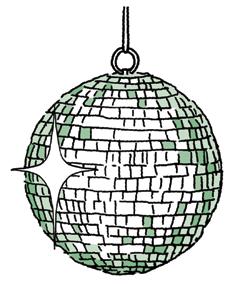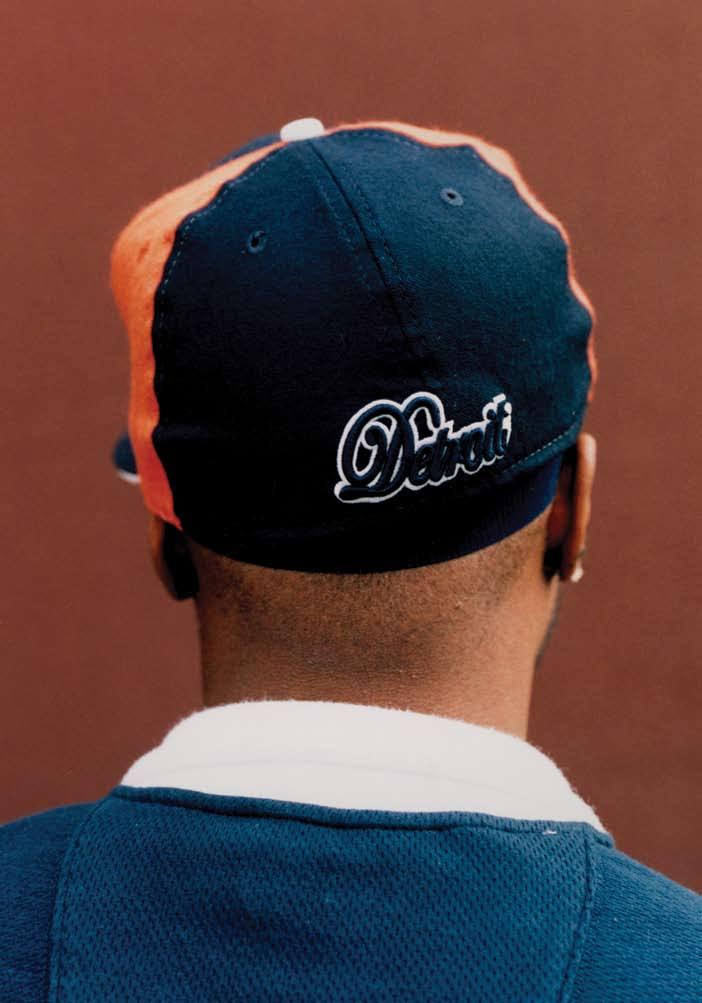




















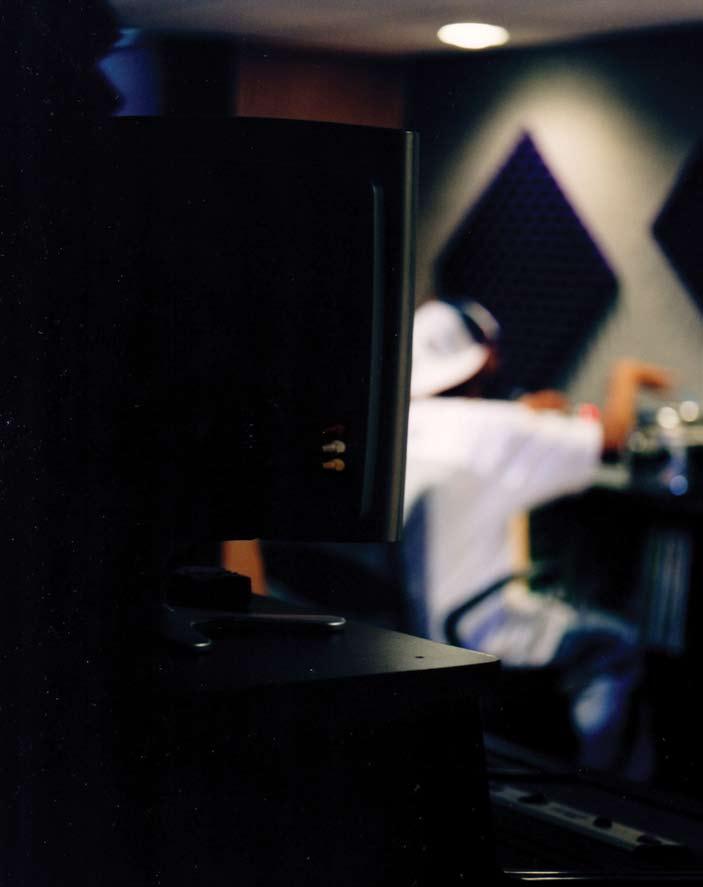
010 Re:Discovery
020 Obituary: Gordon Parks
022 Tanya Morgan is a hip-hop group
024 The untold saga of J Rock’s Streetwize 032 Thes One’s matrimonial mixtape
038 Four Tet selects eclectic
044 Bay Area hip-hop and the rise of hyphy
050 Buddy Esquire and the art of the show
060 WBAU put Strong Island on the map
070 Academic Archive: Hank Shocklee
076 12×12: The Breaks
084 Kool DJ Herc vs. Pete DJ Jones
098 Jay Dee Remembered 112 Questlove’s Life Lessons with Dilla 118 An oral History of the Bomb Squad 138 Audio Heritage
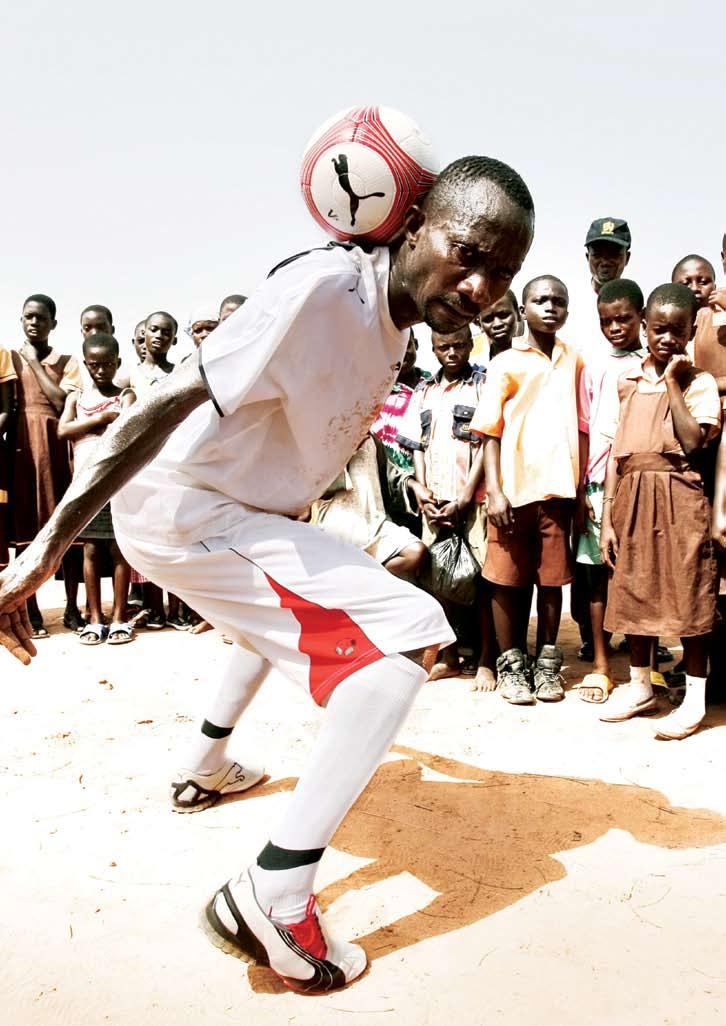







Published by Wax Poetics
Editor-in-Chief Andre Torres
Editor Brian DiGenti
Creative Director Kevin DeBernardi
Marketing Director
Contributing Editors
Dennis Coxen
Dante Carfagna
John Paul Jones Andrew Mason
Contributing Photo Editor B+
Sales and Marketing Manager
Accounts Manager
Michael Coxen
Joy DiGenti
Copy Editor Tom McClure
Editorial Intern James Steiner
Design Interns Sean Manchee, David Wakasa
Marketing Interns Alex Biedermann, Ed Ntiri, Dominic Wagner
Contributing Writers Joe Allen, Brandon Burke, Robbie Busch, Anaïs Carayon, Dante Carfagna, Joe Keilch, Anna Klafter, Jason Lapeyre, Lucas MacFadden, George Mahood, Jeff Mao, Andrew Mason, Mark McCord, Ed Ntiri, Mark Randolph, Ronnie Reese, Jesse Serwer, Paul Sullivan, Ahmir Thompson, Dave Tompkins
Contributing Photographers Charlie Ahearn, Harry Allen, B+, Joe Conzo, Rob Ditcher, Glen E. Friedman, Richard Louissaint, Paul Sullivan
Contributing Artists James Blagden, Luke Rocha
Printed by MGM Printing Group
Distributed by Indy Press Newsstand Services
DJ Jones flyer, courtesy of Pete Jones (and thanks to Elemental for providing image). Dilla Cover: Photographs by B+.
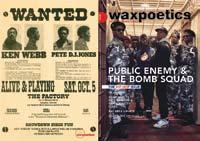
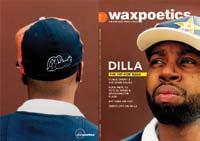
Wax Poetics, Inc.
45 Main Street, Suite 311, Brooklyn, NY 11201
Phone: 866-999-4WAX or 718-624-5696, fax: 718-624-5695, email info@waxpoetics.com Website www.waxpoetics.com
To advertise contact advertising@waxpoetics.com or call 718.644.2244.
To sell Wax Poetics contact direct_sales@waxpoetics.com or Diane Hakimi of Indy Press Newsstand Services at 415-643-0161 ext. 123, diane@indypress.org.
To subscribe contact subscriptions@waxpoetics.com or visit waxpoetics.com/subscribe.
To contribute contact editorial@waxpoetics.com.
Send promotional vinyl albums and material to the above address.
Wax Poetics is produced on a Macintosh using Adobe software.
© 2006 Wax Poetics, Inc. All rights reserved. Unauthorized duplication without prior written consent is prohibited. ISSN 1537-8241

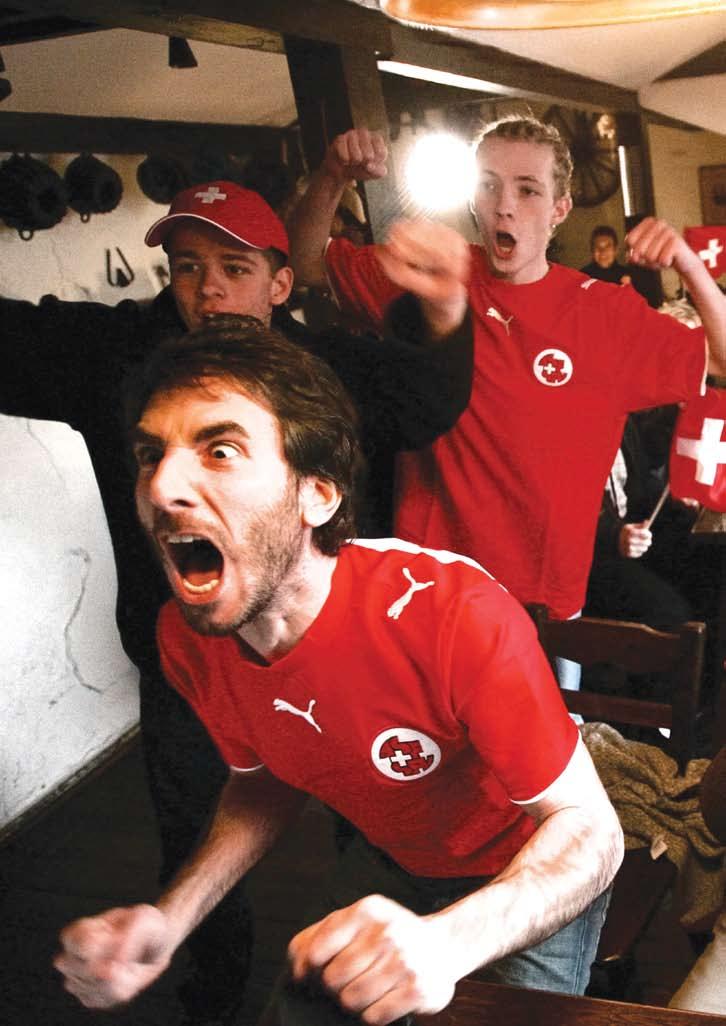





I got so much trouble on my mind I refuse to lose –Public Enemy “Welcome to the Terrordome”
There’s a great episode of The Mike Douglas Show from 1974 with Sly Stone. And as if Sly wasn’t enough to make it a classic, Muhammad Ali is also a guest. To stir the pot, Douglas adds Rep. Wayne L. Hays, a White democratic from Ohio, and right off the bat Ali starts sticking it to him. Hays just can’t understand why Ali’s so angry. Sly plays it cool and actually tries to mediate when things get heated, but Ali’s not having it. Sly’s trying to interrupt Ali at one point, and Ali starts giving him the brush off. Sly’s no punk, though, and tells Ali to get his hand out of his face. I begin realizing that television today is nothing like it was thirty years ago. Even in a world of “reality”driven drivel, everything is so scripted that we’re robbed of genuine moments like this. But just as I’m thinking that it couldn’t get any better, Ali looks at him and says, “Let’s not be niggers and fools in front of White people.” Did he really just say that? Several hundred viewings later, it still holds up as was one of the illest things I’ve ever seen on TV.
I’ve been thinking about that quote a lot recently. It’s as if Ali’s greatest fears have come to life, because if you look at TV, you’ll see a whole lot of Us being niggers and fools in front of White people. But who the hell cares what White people think, anyway? Cosby was right, we don’t need to be worried what they think as much as what we think. But we’re not thinking. So just days after T.I.’s van got shot up, and only hours after one of our writers finished an interview with him, I sit writing this in a time of crisis. So in this first ever all-hip-hop issue, Wax Poe T ics looks back to a time when a group like Public Enemy and the Bomb Squad was running shit, and wonder what the hell happened? We’re eating a little better, but are we really making any progress? I think it’s time for some revolutionary music.
I remember the first time I heard It Takes a Nation of Millions to Hold Us Back and realized that my life would never be the same. That album was pure inspiration. For a dude living in a bass-obsessed Florida drenched in Luke Skyywalker, it was refreshing to hear some cats from NY dropping knowledge. But that was the thing about ’87, PE could co-exist along side Luke and it was all good. I guess it wouldn’t have taken Nostradamus to figure out that almost twenty years later, it would be Luke’s influence being felt strongest across this all too depressing hip-hop landscape. But don’t get me wrong, I fucks wit Uncle Luke, so that’s not really the issue. The biggest problem today is that there’s no balance in the music being shoved at us. If Luke’s presence is still felt, where’s PE’s? Is it in Kanye’s remark that,
“Bush don’t like Black people?” And if that’s the case, you mean to tell me with all these thugs out here, Kanye’s the only dude with balls enough to say some challenging shit like that? Where are the next Chuck D, X-Clan (R i P Professor X), and KRS? Truth be told, I’m embarrassed by most of this shit being passed off as hip-hop right now. I like to party more than the next man, but, damn, some of this garbage these niggas are spitting got me cringing. And just when I’m thinking we’ve hit a brick wall, Jay Dee offers his swan song, Donuts, and I realize all hope’s not lost. This album is inspirational, inspired. When you think that the dude was in a hospital bed making a lot of these beats, you realize it was something that he didn’t have a choice in. He had to do it, because it was who he was. Not what he wanted to be, or thought it would be cool to do because he could stack some paper. He did it because it made him feel good. How many of these cats out here now can say that? And then the more I think about it, I begin to realize that maybe this is revolutionary music. In today’s rap climate, where all dudes know is “monkey see monkey do,” it’s rare to find someone just doing their own thing. For Dilla, it was about the subtlety of it all; he didn’t need to bang you over the head. So one of the many things cats can learn from his passing is that being a legend doesn’t have shit to do with going platinum or having your own clothing company. Legendary status comes from respect, and that’s something you can’t fake.
Somewhere in all of the bullshit, I realize this may be our way out of this mess. If we can’t bang ’em over the head with revolutionary music anymore, and we don’t want to be niggers and fools, then maybe it’s somehow about being subtle. Because all the sex, drugs, and murder raps ain’t all that shocking anymore. What is shocking is when someone can make a good record and not have to go that route. These cats that were “hot” a minute ago ain’t staying all that hot for long anymore. Andy Warhol wasn’t lying, but those fifteen minutes are getting shorter by the day. It’s about being subtle and staying true to your vision. Showing young kids that we don’t have to be niggers and fools, now that’s revolutionary. Because with the birth of my second son, Nigel, who’s only three weeks old now (Love you, Angie), I need to be sure that he’s inspired too.








An undeniable percentage of old U.K. rap isn’t worth the plastic it’s pressed on, but this sturdy 1989 12-inch—produced by never-made-it-big North Londoners Fresh Ski and Mo Rock, whose records are experiencing a long-awaited paroxysm of interest—withstands comparison to the upper tiers of aging obscurities from both sides of the Atlantic. The crew is perhaps best known for “Talking Pays” b/w “ Pick Up On This,” the incredible third and final single to emerge on Tuff Groove (TUFF 003), a label bankrolled by U.K. hip-hop pioneer Ricky Rennalls (of Ricky and the Mutations, and Mutant Rockers fame). The label was also home to flawless 12-inchers by Jus Badd (TUFF 001) and the Dynamic MC’s (TUFF 002). Fresh Ski and Mo Rock followed up “Talking Pays” by issuing a trio of stingers on their own imprint, Conscious Music: Atorie came first, then Logic Control M.C.’s (CON-002, produced by Secret Service Productions), and lastly the group’s own six-track mini-album (CON-003).
Artist: Atorie
Record: “It’s My Time” b/w “Mo Rock: Peace of Mind”
Label: Conscious Music CON-001
Release: 1989
The Atorie 12-inch is a personal fa vorite of mine from the era, because it’s so unforced and natural: simple ingredi ents, perfectly combined. “Apache” and “Keep on Dancing” form the bedrock of “It’s My Time,” but avoid sounding tired, thanks to original drum programming, tough stabs, Mo Rock’s sparse but funky cuts, and a sustained minor-key horn sample that gives the whole thing a unique, ahead-of-its-time jazz edge. Atorie is a confident and effortless MC who lets the song’s geographical origins slip out via some irrefutable Londonisms (“riss” for “risk,” as Mell’O would enounce), despite her American twang. The flip is a mid-tempo Mo Rock instrumental somewhat like a lost Wildstyle beat, and there’s certainly nothing wrong with that.
Classics by the likes of London Posse, Hijack, Demon Boyz, and Hardnoise have always been held in high regard, while Aroe’s Crown Jewels mix-CD (the Hear No Evil of this stuff) is a good place to hear a selection of lesser-knowns, and will have mobilized many collectors into high pursuit. The day of reckoning is in arrears for overlooked releases like Atorie’s; it’s their time. . –George Mahood










Reginald Hobdy used to carry a mic in his shaving kit. He called the shaving kit a coffin and the mic a vampire. Sometimes, he plugged into parties, rapped about the “synchronized transmission” of his AK-G-120E, taped it, forgot tape, heard tape in someone’s radio months later and demanded to know who’d cloned his bicuspids. Um—that’s you, Silver Fox—named after a German sports coupe. Some might’ve thought this Drac ditty bag was odd, or that Fox had spent too much time in darkest Alaska (true story), but who’s to question the only guy Kool Moe Dee feared?—the one who helped LL write “I Need a Beat” and would be cited by Kool G Rap as the “futuristic cat who G Rap and LL got their style from.”


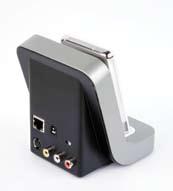




Artist: Fantasy Three
Record: “Biters in the City”
Label: CCL Records
Release: 1983
It was Tito and Master OC of the Fearless Four who assembled Fox, Charlie Rock, and Larry Mack as the Fantasy Three, a group snubbed by rap history and reenactments despite creating two records in ’83 that sent foes home with their fake varmint tails between their legs. Fantasy Three’s first single, “It’s Your Rock,” has been sampled by Large Professor, Pete Rock, Three 6 Mafia, and most ibidly, Crash Crew, who, at Sugar Hill’s behest, Xeroxed the beat for “On the Radio.” Thank them for pissing off Fantasy Three enough to do “Biters in the City,” a Webo-footed electro 12, which the group itself thought too “creative,” too fast.
Sampled by the Beatnuts, the instrumental was created by the edit supernauts responsible for “It’s Your Rock,” including Aldo Marin (producer of “Al-Naafiysh” the first Muslim Vocoder jam), Master OC, Dave Ogrin, and Pumpkin, a near deaf drummer with customized headphones (REVERB) who apparently died with all the secrets (i.e., record next to toilet) and left us with a Vocoder crooning “Myyyyyylar,” an asthmatic vacuum cleaner, and some spliced babble from “It’s Your Rock.” Instrumental my ass.
Then the “Transparent Radiation” part—a bombinating (real word) Vocoder that could be Silver Fox chased by an Inuit throat sled. Or that clone drone at the end of Invasion of the Body Snatchers—when the POV zooms into Donald Sutherland’s tonsils. Nothing screams biter like a freshly podded DNA mimeo. . –Dave Tompkins





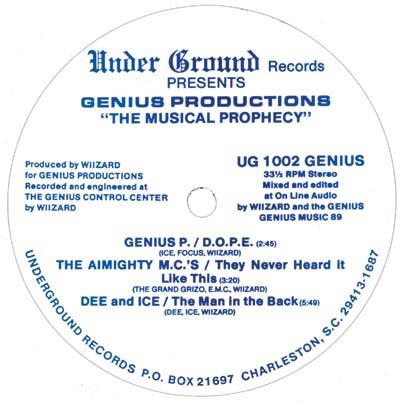
Artist: Genius Productions
Record: The Musical Prophecy
Label: Underground 1002
Release: 1989
The enigmatic Wiizard produced the six tracks on this sampler EP, and he must have been the first dude in South Carolina with access to the entire Ultimate Breaks and Beats library. Or maybe he just had a cousin from New York City that came down and visited him in Charleston one summer, records under arm. This is first-order hip-hop from the fabled silver age, which just as easily could have read “Bronx, NY” on the lower label. What elevates this above other random obscuros from the era is the foggy and extremely perplexing mix, a combination of extraterrestrial quad and distorted, mind-creeper scratching. It’s obvious that the bass and cuts were later overdubbed on top of the already intricate instrumental grooves, but someone was obviously baked during this process. Wiizard tries to squeeze every break known to man (in 1989) into each song, letting his many guest MCs drop quotables such as, “We use gunpowder to brush our teeth, eat sticks of dynamite because they taste sweet.” On “They Never Heard It Like This,” the “Assembly Line” drums get wrapped around the “Blow Your Head” synth to great effect—even more enjoyable when the 808 drops and blows all the other sounds out of your stereo and onto the floor in front of your speakers. Dee and Ice are represented on the final, and perhaps best, track of the EP, with the Wiizard turning the Trickeration scratch into aural wood chips that will severely enhance your burgeoning and carefully cultivated mind garden. And to add insult to injury, the track was additionally released as its own 12-inch. As the rest of the U.S. slowly begins to give up its late ’80s hip-hop ghosts, South Carolina is starting to emerge as a real contender for the non-NY Rap Champ crown, with further records by Major T, Prince DBL and Rocking Rob, and Break Down Academy showing and most certainly proving. . –Dante Carfagna

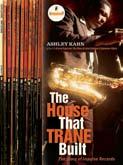
is on

Handpicked gems tell the story of one of the greatest record labels of all time.
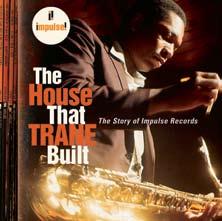


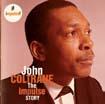

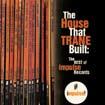









Artist: Section 25
Record: “Looking from a Hilltop”
Label: Factory (FAC 108 A)
Release: U.K., 1984
You know those records you hear DJs play, but you never can find out what they are? That was this record for me growing up. When I would describe it to DJs, they would give me pieces of evidence like “the label is silver” or “the title is something like ‘Shouting from a Mountain’ ” or “it’s an overseas record.” I recently put the word out a different way. I decided to do an homage to the elusive beat for a song on my album to see what comes back. Randomly enough, I was mastering my album with local DJ/producer/artist John Tejada, who said, “Wow, you remade Section 25.” I proceeded to interrogate. Turns out it’s the dub version of a new-wave record called “Looking from a Hilltop” by a group called Section 25. This group formed as a trio in 1978 and got signed by indie Britpop giant Factory Records in 1979. Always overshadowed by label mates Joy Division, they never quite got the recognition they deserved until they released “Hilltop” in 1984. With its Roland 303 and backwards echoing snare intro, the remix version crossed over to the New York club scene and Black radio stations in Chicago. After DJs got the word, it made its way into mixes by the likes of New York’s Latin Rascals and L.A.’s Uncle Jamm’s Army. Not too long after that, Dr. Dre used it in a song called “Telesis” and Egyptian Lover remade the intro for his song “On the Nile.” It seems that this record’s influence resurfaces every few years. In the early ’90s, a few electronic artists had sampled it, and today an extensive CD collection on Section 25 has been released. If you like today’s alternative sound à la She Wants Revenge, then you’ll love this stuff. . –Lucas MacFadden
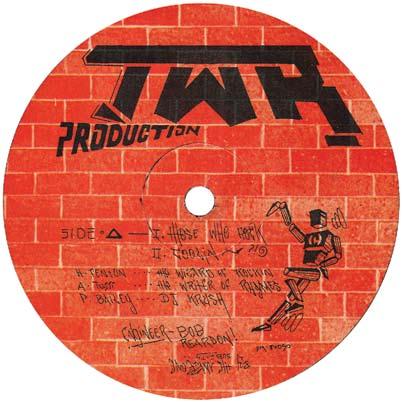
A barrage of Centipedes drop through the magic mushrooms and attack the dubbed-out bunker of electro over a frenzy of hand claps and lead-footed drum-machine stabs while a carnival of souls cheer from a Bambaataa-less pit of reverb. TWR were some Boston boys with reverb, and they weren’t going to let you forget it. By putting the dub-a-licious “Those Who Rock” as the first track on the 12-inch, they beamed out an Atari Force transmission of bombastic proportions to let us know that the instrumental was key. As they tell us later, they were “Using def-ill equipment, funky-fresh high tech.” The video game sound effects, a mix of Centipede and Galaga, that lead into the TWR war room were synched up with enough stuttering drum programming to create a shoot-’em-up arcade fever dream where the echoing voice of the Wizard of Rockin’ shouts out to his homeboys, the Writer of Rhymes and DJ Krush. His mission was to keep reminding the listener that they are “Those Who Rock,” and he does so till the bitter end when a swarm of insects swallows him up.
Artist: TWR Production
Record: “Those Who Rock/ Coolin’/ Stupid Deff!”
Label: TWR Production
Release: circa 1986
TWR decided that level two was where they needed to start rapping. On the second track, “Coolin’,” they took the drum pattern from the first track, but replaced the sound effects with the simple vocal sample “Coolin’ ” and repeated it with an itchy trigger-finger fanaticism. They built the track on overdubbed variations of that one word, pitched up and down to create a choral bed. Then the Wizard of Rockin’ was free to jump all over it as he used the same technique to double himself on the two verses. Yeah, only two. And no chorus to speak of. They were out to rock and didn’t want the fussy words of rap to get in their way. With the B-side, “Stupid Deff!,” TWR show their hand. The repeated hi-hat and screeching-wheel scratch attack was cribbed straight out of the Def Jam playbook. They eschew pesky choruses for a display of turntablism heavily influenced by the bottom of a cough syrup bottle and a broken Trak-Ball controller. After two short verses, DJ Krush takes over to scratch and claw his way over the wall of sound that they’d built for themselves, leaving nothing in his wake but the mysteries hidden behind the break-dancing robot and brick wall that grace the label of this old school curiosity. . –Robbie Busch

by Mark Randolph

The recent passing of Gordon Parks on March 7, 2006, at the age of ninety-three made me wonder why the general public had little or no knowledge of his achievements. Could it be a sign of the times? Could race be a factor? Or could it possibly be America’s lack of interest in anyone or anything of relevant cultural significance? Perhaps, I can remedy this injustice and shed some light, posthumously, on an American icon whose accomplishments transcended race and speak to the di Y American spirit.
Born in rural Kansas in 1912, Parks was reared during a time of great racial strife in America when a brotha could get strung up for breathing too hard. His mother was the main influence on his life, never allowing her son to justify failure with the excuse that he had been born Black, and instilling in him self-confidence, ambition, and a capacity for hard work. During the cash-strapped Depression, Parks was taken aback by magazine photographs of migrant workers and bought his first camera, a Voightlander Brilliant, for $7.50 at a pawnshop. Parks was totally self-taught; the photo clerks who developed his rolls of film recommended him to a store in St. Paul, Minnesota, where he began shooting women’s fashion. Parks worked on several freelance jobs, then moved to New York and became a freelance fashion photographer for Vogue
While on a trip to Washington, D.C., during which Parks experienced some of the most vicious racism of his life, he shot his most iconic photograph, American Gothic. It depicts Black office cleaner Ella Woods holding a broom in one hand and a mop in the other, in the pose of artist Grant Wood’s stone-faced farm couple, with the American flag as a powerful backdrop. In 1948, a photo essay on a Harlem gang leader got him a permanent job as staff writer and photographer for Life magazine. He was the magazine’s first
Black photographer and worked there for the next twenty years, covering such diverse subjects as fashion, sports, Broadway, poverty, and racial segregation. In fact, Life sent Parks to “infiltrate” the Nation of Islam in 1963, but, instead, he and Malcolm X became close friends. Parks had the compassion and insight to be the voice of the poor and disenfranchised, but also possessed the skill and sophistication to make these unpleasant subjects palpable for the mostly high-tone Life readership.
In 1969, Parks became the first Black director of a major Hollywood film with an adaptation of his semiautobiographical novel, The Learning Tree Parks also composed the film’s musical score and wrote the screenplay. This story of a young boy coming of age in rural Kansas was seen by some as over-sentimentalized and “clean.” But minor criticism withstanding, the film holds up as the universal tale of a boy’s rite of passage and is included in the National Film Registry. Parks’s most famous film was also his most well known. Shaft (1971), along with Sweet Sweetback’s Baadasssss Song (1970), ushered in the blaxploitation film era. Both Parks and Song director Melvin Van Peebles abhorred this term, but both films’ influence on the genre cannot be denied. In fact, Parks’s son, Gordon Parks Jr., directed the blaxploitation classic, Superfly (1972). Parks Jr. was even loaned a substantial amount of money by dear old dad when he went over budget after the first week of shooting. Parks’s next two films, the New York cop flick, The Super Cops (1974), and the fantastic blues biopic, Leadbelly (1976), were his most critically acclaimed. The Super Cops tells the true story of two Brooklyn cops, dubbed “Batman and Robin,” and their rather unique ways of fighting crime. Leadbelly, the story of blues musician Huddie Ledbetter, is seen by some as the best film about a musician ever. It’s a blood and guts story of defiance in the face of brutal racism. It’s the straight-up blues, baby. This celluloid gem still remains unavailable on either V hs or dV d.
In a world where mediocre talent is lauded and culture is expendable, Parks stood for something real in our contemporary American maelstrom. Parks exploded stereotypes by countering them with profundity. He was as self-made as self-made men get. Parks summed it up best when he said, “So many people could do so many things if they would just try, but they’re frightened off because they haven’t been trained to do this or that... I just picked up a $7.50 camera and went to work.” True indeed. .


Tanya Morgan is a hip-hop group By
Hidden behind the mysterious name are MC/producer Von Pea from Brooklyn, and MCs Donwill and Ilyas hailing from Cincinnati, Ohio. The trio completed the bulk of their first album, Moonlighting, by passing tracks through cyberspace, but have an affinity for cassette tapes and the golden era of hip-hop.
Expand on the cassette tape analogy.
Ilyas: That was the last time hip-hop was off the hook, for real. The purple Cuban Linx tape? [laughs] Right?
Von Pea: I thought it’d be cool to have an actual cassette passing around. Lot of people remember cassettes as the golden era. Just putting you in that mind state, automatically putting you in the mid-’90s. Your album touches on stereotyping.
Donw I ll: [People] say, “Oh, you’re like Common.” When you’re not talking about drugs, you’re just grouped into this big ball. Like, “Y’all rapping about the same thing, just not drugs and guns.”
Ilyas: I was rhyming about guns and all too, until I heard Midnight Marauders, and was like, damn Had someone to show me an example.
Von Pea: The very first song I ever posted online— everyone was like, “He sound like Jay-Z. Oh, he sound like Mase. Or “No, he sound like T3.” Nobody was like, “I like that line.” Everybody wanna say who you sound like first.
Ed Ntiri
Donw I ll: I find myself doing that a lot [too]. [When] people ask, “Define your sound,” you start classifying yourself. “It’s like Little Brother, Common, Kanye.”
Von Pea: We just everyday hip-hop, having fun. I don’t know how else to describe it.
Donw I ll: That’s what the name is all about. You don’t know what it is: The name sounds like it could be a punk rock act, a singer, western, neo soul. We kind of throw people through loops, constantly.
How do you see underground versus commercial acts?
Ilyas: I wouldn’t say I’m pro-underground. I’m promusic. I don’t try to diss mainstream, but I feel that the mainstream is out of balance.
Donw Ill: Not anti-radio at all; I play the radio. I can probably sing the entire “Lean wit It, Rock wit It” right now.
Von Pea: I might even say that we anti-underground. Not “underground” as far as a type of music, but “underground” as a mentality of what underground is supposed to be. Cats are ashamed to become successful. People are caught up in perception. I say I’m anti-perception, and if “underground” is part of that perception, then I don’t want to be part of it. We gonna get caught up in something, but we gonna fight it to the end. .


The untold saga of J Rock’s Streetwize
by Jeff Mao
You’d be forgiven for dismissing Streetwize, J Rock’s first and only LP, on sight upon its release back in early 1992. Despite the decidedly urban-oriented album title, there on the album cover—dipped in Yankees gear, posed beside a deep-purple Porsche—is J Rock, mad-dog mugging in classic rap fashion but incongruously stuck somewhere in the woods, a backdrop seemingly more fit for “Kumbaya” sing-alongs than concrete-jungle drama. ¶ Real informed heads, however, knew the deal. J Rock (government name: Floyd Johnson) was, in fact, a talented, no-nonsense MC in the Guru/Latee mode; an introverted fellow who, while still in his late teens, garnered a Source magazine “Unsigned Hype” write-up back in the bible of hip-hop’s salad days (December 1990). Foliage notwithstanding, his hometown of Newburgh, New York—a forty-five-minute commute from Gotham to the north and across the Hudson River—was less upstate safe haven than neglected, festering urban satellite.
“I think when people hear ‘upstate,’ they’re thinking trees and farms and stuff,” Johnson recalled in a rare interview in January 2004. “But at that time, [Newburgh] was slum; basically like the Bronx [but] upstate. The same thing you seen in the city, you seen up there—drug dealers, shootings. At that time, the West Coast really started coming [hard]—Ice Cube and NWA and them. And I kind of figured I’d do the same thing [they were doing] but with an East Coast flavor to it. I sort of took that concept and things I saw around the neighborhood and figured I would do an album for Newburgh.”
Though inspired by the conditions afflicting crack-era Newburgh, J’s suite of finely crafted hood chronicles transcends locale. In songs like the visceral title track, the swagger-filled “The Messiah,” and the twin tales of crooked cops, “Brutality” and “The Shakedown,” Streetwize represents a remarkably cohesive, impeccably produced confluence of hard-rock posturing and conscientious street reportage. J Rock impressively produced much of the material himself. However, a cursory glance of the back-cover credits ids two conspicuous studio accomplices in future super-producers DJ Premier and Easy Mo Bee (both at the time still fledgling beat-makers who regularly toiled at the album’s recording HQ, Suchasound Studios in Brooklyn). Preemo and Mo Bee’s lost board work shines big time; the former on the minimalist, Meters-fueled “Ghetto Law,” the latter on the hi-hat-reliant opening opus, “Let Me Introduce Myself.”
But if their presence is the album’s main angle of interest to hip-hop fanatics, ultimately it’s a name in the credits that’s well off the rap radar that’s actually most intrinsic to the backstory of this underappreciated gem, that of its executive producer, Jeff Murphy.
Alternately known by the Shawn Carter–esque handle “Jazz E,” Murphy (seen profiling by his pristine white Cher-
okee Limited on the album’s back cover) was an industrious, former underground radio jock whose early ’80s High-Powered Hours program on famed Newark, New Jersey, station W h Bi filled the late-night weekend slots left vacant when broadcast pioneers like Mr. Magic and Sweet G (of “Games People Play” fame) moved onto bigger endeavors. The proprietor of a Newburgh-based vinyl emporium, Fast Records (at which J Rock worked as a clerk), and top cat at his own indie record label, Ghetto Groovz, Murphy seemed like just another hopeful young entrepreneur trying to make some noise in the music biz, save for one notable detail: He also happened to be one of the biggest drug hustlers of the lower Hudson Valley.
“For what Jeff did, he was extremely successful,” remembers J Rock’s cousin, DJ Joey T. “Any day, you might catch him with twenty grand in his pocket. Easily. It was around that time when [the crack] scene was kind of exploding. And it was a little bit much for the [Newburgh] police to handle.”
The success of Murphy’s illegal business may have made him a revered figure in the streets, but he maintains that his illicit activities were merely a means to an end. “I went to college,” Murphy explains, “which doesn’t make me any better than anybody else who hustles, but I guess I had a different type of vision. I didn’t believe, at least on the surface, that hustling was a career. I just did it because, truthfully speaking, it was very easy and very profitable. I thought it was kind of a springboard to get me to where I wanted to be.” “Where,” of course, was the burgeoning hip-hop industry.
“[All along] I had been dealing with music,” he says forcefully. “I was there at the [Disco] Fever. I was there going and getting promos from Bobby Robinson at Enjoy Records. I was there playing the first Run-DMC record on the radio. I was there with [Reality Records’] Jerry Bloodrock when
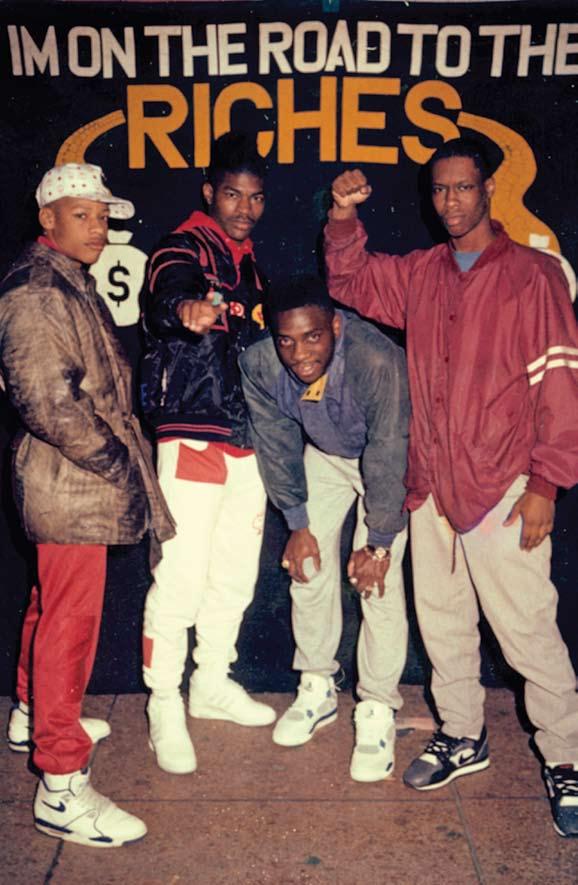

he got his [label] off the ground with Divine Sounds and Rock Master Scott, and eventually signed Doug E. Fresh. All these guys did these things on their own. So I had seen the blueprint, per se. And I was very motivated.”
So much so that Jazz E enthusiastically championed the steady moral compass of much of J Rock’s material, his own ethically dubious side dealings be damned. Streewize ’s curious choice for a lead single was the overtly earnest “Save the Children”; its picture-sleeve jacket featured a faux newspaper article (from the fictitious 6th Boro News) discussing the societal ills that adversely affect kids (supplanting Murphy’s original idea of posting actual missing children reports as they appeared on the back of milk cartons). More anecdotal and effective in its approach was the dynamic second single, “Neighborhood Drug Dealer,” a brilliantly detached narrative charting the rise and fall of a notorious street pharmacist inspired by Murphy’s own life. In the first of a series of bizarre convergences of rhyme and reality, the aspiring rap mogul even brashly appeared in the song’s artfully directed video in (what else?) the title role.
“What was so funny about Murphy was he so wanted to be on television,” says DJ Premier. “I remember when he did the video; he was like [in nasally voice], ‘Yeah, yeah, I’m gon’ be on TV !’ He used to talk like that. ‘Premieeerrr, it’s on now. I’m gonna be poppin’!’ ” Murphy claims that he simply played the drug dealer role in order to ensure an authentic on-screen portrayal of “The Life”—something he was particularly sensitive to after enduring a disappointingly abstract and muted video treatment for “Save the Children.” “Because I had lived it and I knew what the drug dealer lifestyle was,” he reasons, “I didn’t trust no one else to do it but myself.” Murphy’s take on the song’s sobering story line (which ends less than happily for its antihero) remained something of a mystery at the time, even to J Rock.
“I thought it was kind of funny,” says Johnson, “because when I wrote the song, he knew it was about him, but he didn’t really say anything about it.”
In actuality, the hypocrisy of his livelihood in relation to the messages in the music he was promoting was readily apparent to Murphy, and difficult for him to reconcile.
“Once you start selling drugs and you put your future and your life on the line, basically, money becomes your primary focus,” he says in hindsight. “So I guess I had basically sold out my liberties and my freedom for money, and I was doing all these people harm. But on the other hand I’m saying to myself, ‘If this rap thing kicks off, then I won’t

have to sell drugs anymore.’ So I guess I was trying to save myself from myself, so to speak.
“Your actions always speak louder than words,” he admits. “But I never would have told a person to do what I did. That’s why I was in agreement with the idea that the drug dealer had to go down in the video. Even if I was bringing negative karma onto myself [by acting it out].”
Sure enough, just three months after the completion of the “Neighborhood Drug Dealer” clip, the video’s climactic arrest sequence came to life as Murphy was pulled over by police while driving in Harlem, and bagged for criminal possession of narcotics. Though he managed to beat the case (having been allegedly searched without probable cause by an officer from uptown’s infamously corrupt 30th Precinct, aka the “Dirty 30”), another calamity soon emerged from which Murphy and the Streetwize project would never fully recover—J Rock’s sudden retirement.
Johnson’s exodus left Ghetto Groovz’s one-man roster talentless. Even today, the ex-MC remains laconic on the details of the rift, but maintains that his boss’s criminal activities were never a factor. “One thing I’ll say is that Jeff kept me away from that,” he recalls. “I worked at the record store, and he never did anything around there—at least that I knew of. And so I never seriously worried about it. He really looked out for me.”
Murphy believes that Johnson’s then-girlfriend actually soured him on the music business, and laments the lost potential of his former protégé: “If that guy could have ever understood the extent of his musical talent…” he wonders aloud. “J Rock’s gift actually wasn’t rhyming. He was a superb beatmaker. Superb When Premier did the remix to ‘Neighborhood Drug Dealer,’ he told me, ‘I can’t do anything with the beat better than what he already got, but I’ll do something for you.’ The sad part about it was that [Floyd] never really understood the commitment it took [to make it].”
Others believe that Johnson simply grew sick of dealing with Murphy’s demanding personality. “[Floyd’s issue] wasn’t monetary,” says Joey T. “It was a point of Jeff bossing Floyd around, saying, ‘You gotta do this, you gotta do that.’ Floyd got tired of it and said, ‘I’m out.’ ” Johnson would subsequently attempt a short-lived comeback with Joey and Poughkeepsie pal Paul Nice in a group ill-fatedly christened Def Row (quickly aborted once a Ruthless-less Andre Young and his lil’ homie Calvin Broadus hit the charts) before calling it quits for good. “I’ll always love music,” Johnson summarizes in reflection. “But life goes on.”
Despite having already lost an estimated $50,000 on Streetwize, Jeff Murphy would continue to harbor hopes of making it in hip-hop. Splitting time between New York and Atlanta, he became an early investor in Tragedy Khadafi’s mid-’90s indie label, 25 to Life. But in yet another bizarre, self-prophesizing turn, Murphy was arrested again on criminal possession charges in November 1995 in Georgia, and went to trial the following March facing, yes, twenty-five years to life. (He eventually won a reduced sentence, serving nearly nine years between correctional facilities in Georgia and New York before coming home in May 2005.)
Today, Murphy works for a community activist group in Newburgh, mentoring troubled youths and speaking about his own experiences to deter them from following the path he had chosen. He hasn’t seen Floyd Johnson (a computer programmer living on Long Island, when last heard from) since well before his incarceration, and marvels that rabid hip-hop vinyl collectors typically pay in excess of one hundred dollars for Ghetto Groovz’s sole LP release. He estimates only twenty-five hundred were ever pressed, and roughly a thousand actually ever sold. The speculation that thousands of back stock copies of Streetwize were whisked away upon his incarceration and remain stowed in his mother’s house’s basement down South, he claims, is false Newburgh urban legend. It’s with some bewilderment that he absorbs the fact that folks are just now getting wise to the musical savvy of Streetwize
“On the one hand, I’m shocked that anyone’s still interested in the album,” he states wryly. “To quote a phrase NWA used to use, I thought I had a box full of Frisbees.

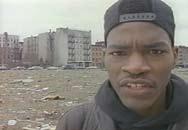

“But on the other [hand], I’m not really shocked,” he continues, disappointment detectible in his voice. “Because I’m gonna be honest with you: I really, really, really, really thought I had removed myself from hustling. I thought I had actually really, really, really did it. I was so committed to the project that I just knew I had something. I was just like, ‘I gotta keep pushing, something’s gonna happen.’ ”
In the end, Jeff Murphy will tell you that Nas was wrong: the rap game and the crack game weren’t actually that similar after all—at least not when it mattered most. “I didn’t understand the marketing and the distribution part of the business, and I was intent on doing it myself. I was just doing everything like I did in the street.”
He pauses briefly for a moment, perhaps momentarily lost in the memory of those years.
“It’s hard for you to tell what the movie is like when you’re acting the movie out,” he concludes philosophically. “You have to sit back and be able to see it on the screen, and then see how other people react, and say, ‘Oh man, I really did this?’ ” .
Jeff Mao, aka Chairman Mao, is one of the furious five minds behind burgeoning media conglomerate, ego trip. He is the coauthor of ego trip’s Book of Rap Lists (St. Martin’s Press) and ego trip’s Big Book of Racism! (ReganBooks).
Special thanks to Sasso for digitizing the video.
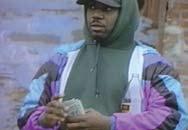
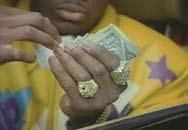
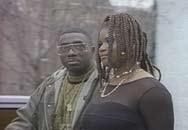

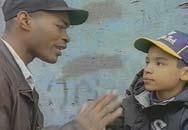
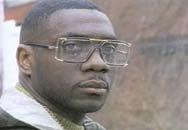

“Four Tet’s Kieran Hebden does a double-whammy with this batch of weirdness for !K7’s classic mix series. Brilliant.” - XLR8R







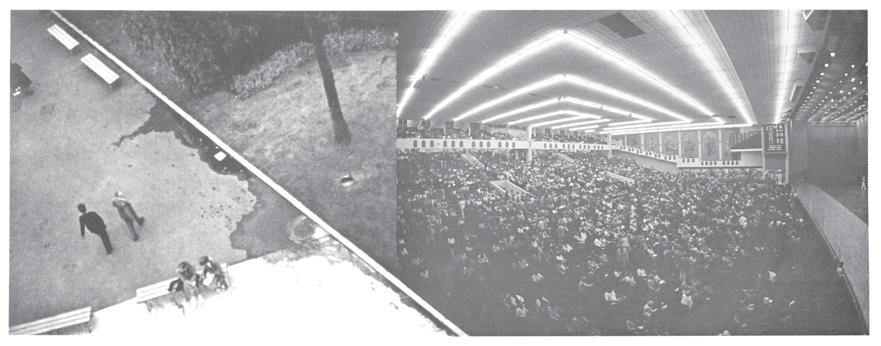









Thes One’s matrimonial mixtape
by Anna Klafter
photo by B+
The date is May 15, 2004, and Christopher Portugal, the rapper and producer better known as Thes One of People Under the Stairs, is entering his wedding on top of a large elephant. “I climbed onto that bad boy and I rode into that piece,” says Portugal. The traditional ceremony, which took place in front of seven hundred people, was the culmination of a six-year relationship with his girlfriend of Indian descent and was followed the next week by a Catholic wedding in Peru. In true record collector fashion, Portugal and his bride, Ritu, marked the occasion with a mix-CD representing both of their cultures and tastes.
Mithai, a Hindi word for the gift of sweets one brings to another’s home, is not just a collection of amazing tracks, but the soundtrack to a relationship that grew alongside Portugal’s formidable musical career. Portugal breaks down the essential tracks:
“The Promise”
Thes One (Pl70 Inc., off the master) 2004
Basically, I was not the right choice. I wanted to make song that was equivalent to the Bollywood movie song with the son-in-law trying to win the dad over with some fancy dance routine. Playful, but serious. “Look, it doesn’t matter, because we love each other, and this arranged marriage thing is not going to work for us. She loves me, so we’re getting married.” That was the theory behind that. So I made the track and recorded it during the process of making the mix- cd. It was definitely for [her father]. He thought it was nice; he didn’t think it was challenging, and it wasn’t. I had already won him over at that point. We were getting married, but there were years of struggle between him and I, so what better way to end that but with a song. I’m not mad. There was a “don’t ask, don’t tell” policy with her parents about dating. They didn’t want to know unless it was serious. The whole time we were dating, they were ramping up the arranged marriage process. Things started to get frantic; it was tough on our relationship. There’s the whole process of putting ads out. Meanwhile, we’re in a monogamous relationship. We’re trying to hold it down, and they’re actively looking for a husband for her. She told her parents, and they utterly freaked out. Then it was on. On, in terms of “You can’t marry him.” There was a year or two of that, and they met my family. They eventually came around. All the Indians are doctors and lawyers and this Latino guy isn’t a doctor or a lawyer, so this song documents my stance.
“Mujhe Zindagi Ki Duva” Ek Zindghi Arman Bhari (OST) (EMI India) 1984
I’m an “old school” record shopper. I go digging with visual cues; I know my years; I can look at a cover and know the year. These are things you pick up when you’re digging and you don’t have a portable —you don’t want to be making stupid decisions. In L.A., I go through a bin and I can fly through it. I get to India and I don’t understand anything on these records—can’t read Hindi. I’m looking at these records and they all look good. So I fall back on dig-
ging theory. Everything is a soundtrack, so I start looking at years—’70, ’71, ’73, basically ’69 to ’75. I pull a giant stack, five feet high. I start listening —this music is garbage. I’m listening and this music sounds like it was recorded in the ’50s. I pull a record from ’82 and it’s off the chain; it sounded like it was recorded in ’72. Okay, apparently in India 1984 was like 1974; they were running five to ten years behind Western music trends. So, I pulled a stack from ’77 to ’85 and then I started finding all the cool shit. If you get deep and get beyond the covers and known stuff, there’s some really cool shit out there and its really it’s own thing.
With this record, there’s this psychedelic rock guitar and disco beat, pumping. We picked music together. I was playing that for her, and she’s like, “Damn, [the singer’s] saying, ‘Welcome to the party, have a good time, it doesn’t matter what other people think.’ ” It was weird how that fit in.
Stereolab Dots and Loops (Drag City) 1997
Absolutely mandatory. I used to work in a record store, Rhino Records in Westwood. This was in the early ’90s. As soon as I decided what I wanted to do, make hip-hop: Okay, I’m a beatdigger, so I needed a job at a record store so I could get first pick of all the records. I was only thinking about old records. Rhino mid-’90s, I’m digging all the old records, but being at the counter, I’m exposed to all the new things. I started getting exposed to new things that were totally outside of my sphere of what I would listen to—Stereolab being the most notorious.
Dots and Loops was about to come out—people were putting pre-orders on it. I was like, “Man, this record has to be something serious.” The day it came in, they had it in the listening station. I’ll never forget it. I went over the listening station on my break. It completely changed my whole life and I don’t mean that lightly. That record changed my life, it changed the way I look at music it changed the way I think about production in all senses, it changed the way I dig for records. It changed everything. And from that point








it became my favorite record and I exposed Ritu to it and she loves the record. It’s just a really important record, so it’s important that we fit one of the songs on there and I think it’s important that we put the first song of the record on there. “Brekhage” is the first song on Dots and Loops
“Move On Up”
Curtis Mayfield Curtis (Curtom) 1970
Damn Kanye West! He ruined the song. For Kanye, it’s like “Move On Up” and get richer. I don’t think I’m ever going home, I got so much Louis Vuitton. Dumbass. For us, this track fit what we were growing through. It’s parallel to what’s going on with America, with first generation communities, rebelling against their parents.
“I Would Die 4 U”
Prince and the Revolution Purple Rain (Warner Bros.) 1984
Prince. I had to put Prince on there. She said I had to put Prince on there. But Prince belongs on there because Prince is that dude. My wife grew up in Whittier [CA]; she was big into all the freestyle stuff. We wanted to have a few things that represented that side as well. You will notice there is suspiciously no hip-hop on there; that is a little bit deliberate on my part, because the hip-hop thing is the obvious thing. When you’re starting a life with someone it’s so much bigger than that. There’s very few hip hop songs that would translate well to this without being like, “Ewww.”
“Cross Country”
Archie Whitewater Self-Titled (Cadet Concept) 1970
I don’t think I’ve ever known another track I could play for any person, pretty much, and they’d like it. It’s not on the cd because Common sampled it, it’s on the cd because it’s one of the top five songs for me of all time. It’s a very moving song. What they are talking about is relevant; lot of the song is coming out of the Vietnam era, there’s a sense of turmoil and of struggle. It fits the theme of what we have gone through. It’s the right song and it’s on there for the right reason not the wrong reason. Yeah, it’s rare, but that’s not why it’s important. We wanted it because it’s a dope song and we love it. It could be a dollar record, it could be a




hundred dollar record.
The beatdigging community as a whole has fallen victim to comodifying the music more than what is fair. It takes away from things. Saying a record is $300 or $1000 doesn’t justify its existence on a mix. I love some records that are worth a dollar. I hate to see our community where our value is just [in] your rares; it might as well not be music. It might as well be Pez. Beatdiggers and collectors lose sight. Just because something is or is not rare doesn’t make it good. It’s your taste. It’s what you like. I don’t care what other beatdiggers think about our wedding cd.
The rarity of the music doesn’t come into play. You should only be playing music that has meaning to you. The important thing is the song.
“Peruano Hasta La Muerte” Pepe Miranda (Rey Record) 196?
It’s a really nationalistic, powerful track about Peru. It just gives me shivers thinking about it, because it means so much to me personally. Being the only cousin in America from my Peruvian family, it’s always been tough for me to maintain that cultural connection. That’s why I got into hip-hop in the first place; because it was kind of a foster culture. It was something I could be a part of, because I didn’t have a family to be a part of. I have, like, no family in America; hip-hop was that family for me. That song—I spent every summer going to Peru, and that song means a lot to me, culturally. Putting it on there, the song falls dead center on the cd. It’s in Spanish, but I was hoping some of the Indian people would get the idea of what it was about. This song being on the cd is me saying, “I’m not going to compromise any of my culture.”
“Get into the Party Life”
Little Beaver Party Down (Cat) 1974
This is a super-crucial song. It was our life, and it is not our life anymore. You know, you get married, settle down. It’s the perfect farewell to my twenties and that lifestyle. Once you are married, you have less incentive to go to the club, I’m more than happy watching Law and Order and staying home. My single friends will never understand this—“Awww, he’s married now.” Shut up. I save more money, I cook more meals, and I’m really happy for the








right reasons at this point. “The Party Life” is an important track because the party life was important to us and it was a part of us.
“We’ve Only Just Begun”
Port Authority Self-Titled (The Navy) 1971
I was making a wedding cd, and I was like, “Okay, we have to put some version of “We’ve Only Just Begun” on there. I was trying to find a version that fit into the mix well, and the Port Authority version did. It’s funny because “We’ve Only Just Begun” is the wedding song. Any digger worth a grain of salt has a zillion different covers of it.
“O Saathi Re”
Sunil Ganguly Electric Guitar Hindi Film Tunes (Odeon) 1979
This was huge song in the 1970s in India. This is a song that all of my wife’s aunties and uncles know, but why would I know this track? It’s because of record collecting, but putting it on the cd surprised a lot of people. It goes, “What would the purpose be of my living without you?” It fits into the dedicative nature of the mix. It fits in so many ways to my situation. From the movie O Saathi Re
“Loving You Sometimes” The Outcasts (Plato) 196?
Cut Chemist played this for me. Now, he’s a very sarcastic dude. I don’t see him get super-excited about records a lot. But that record he was really excited about. He was like, “I got to play you this record, it’s going to blow your mind.” He played it for me, and I was like, “Holy shit. You’re right, this is incredible.” It was representative of garage and Gulf beach music, but it was dark and it was about love. He was like, “Man, I’m going to start playing this out,” and I was like, “Man, you’re crazy.” And he did. I heard him work it into his set a few times. Thematically, it fit perfectly with the cd We both love it, and it would be cool to expose people to it. And it is fairly rare, fairly unknown.
“The Visit”
The Cyrkle Neon (Columbia) 1967
Ritu used to come over to my house and we would be laying around, and of course there were records everywhere,


and if you’re a record collector and all of the sudden you have a significant other, it’s like they weren’t there to buy all the records and they weren’t there to listen to all the records. Inevitably there’s going to be a part where she is like, “Play me a record.” You can pull out a record and maybe this record is worth $3000 and put in on, but if it sounds like cat shit, later on in life she’s going to be like, “Do you really need more records?” So you have to pick something that is representative of what you do. I picked this song because I thought it was a good example of what it means to me to be out there finding songs that I would never be exposed to. Just the ultimate 180 degrees from the things we are exposed to on a daily basis in America, music-wise. You don’t hear songs like that on the radio, you don’t hear songs like that on commercials…you just don’t hear stuff like that.
“Khullam Khullam Pyar”
Film Hits 1975 [Khel Khel Mein OST] (EMI India) 1975
The song says, “We are not going to be ashamed of our love, so deal with it.” It talks about blossoming love; we’re free. There is an underlying message to the whole cd
“Holding You, Loving You”
Don Blackman Self-Titled (GRP) 1982
Another suspicious “oh, he’s being a beatdigger” track. It was never properly released on GRP; it never appeared on an album. While we’ve been together, I’ve been digging really hard; it’s almost part of our relationship. One year for my birthday, I really, really wanted that record and she got it for me. Then I made a beat out of it for her [“Give Love a Chance”]. It made the record-collecting thing “ours.” .
Anna K L af T e R is a writer, DJ, and educator living in San Diego, California.
People Under the Stairs’ Stepfather LP is out now on Basement Records.

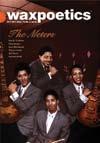

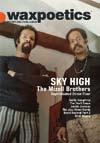

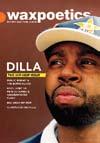
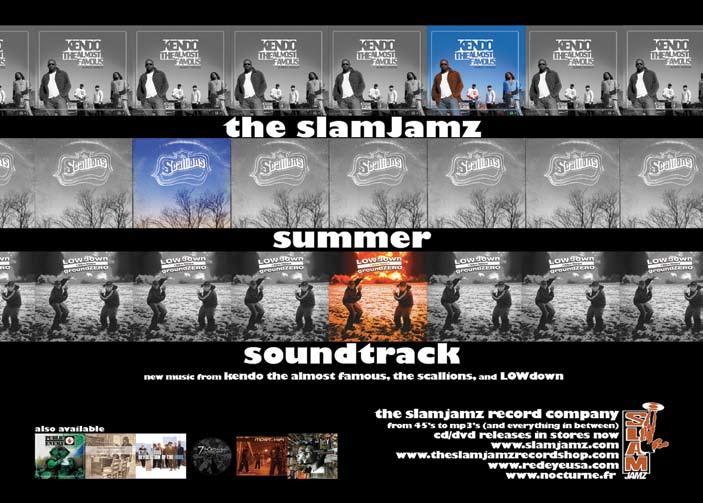
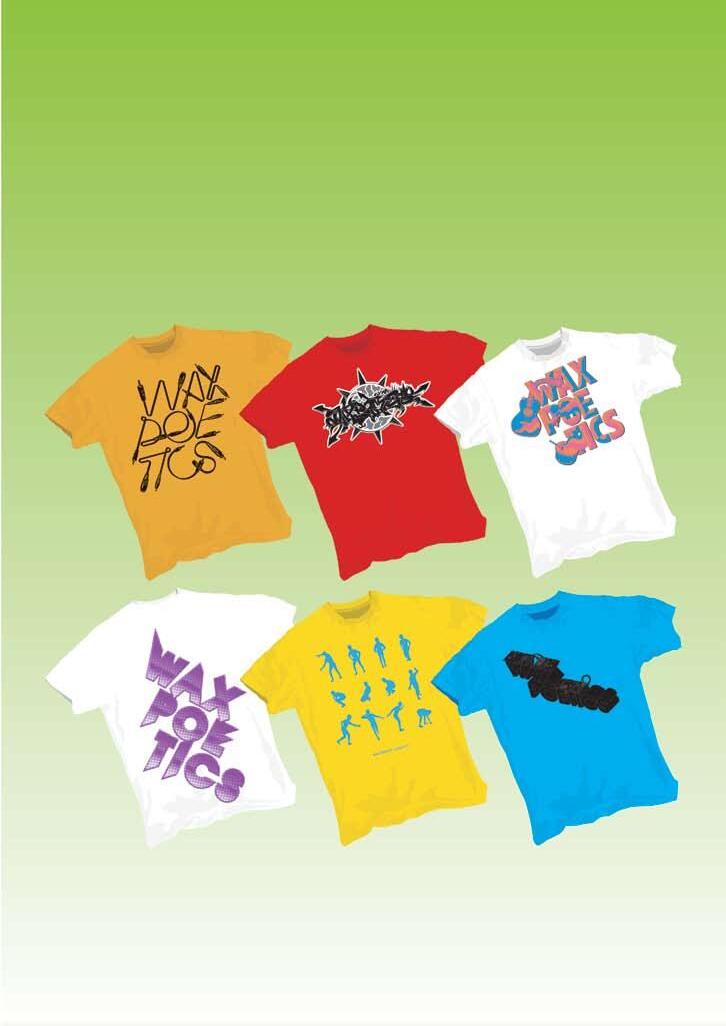
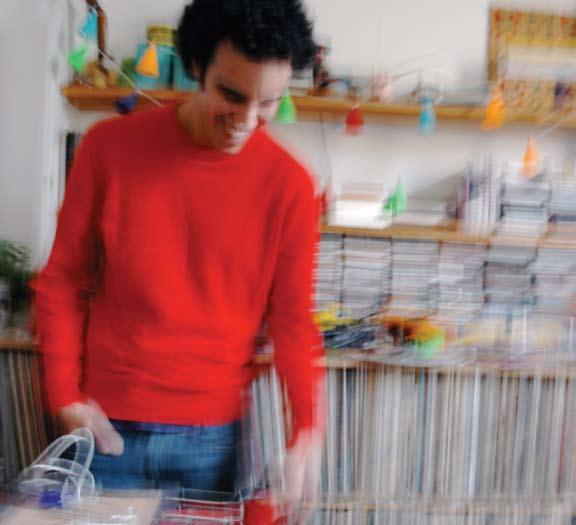
Four Tet selects records from across the board
by Paul Sullivan
photo by Paul Sullivan/Rob Ditcher (Photografik)
Kieran Hebden moves through the illimitable world of sound and space with grace, fortitude, and remarkable sonic acumen. His is a restless journey that casually erodes boundaries, subtly proposes musical theories, and explores the musical shaman within. ¶ His first band, Fridge (formed alongside bassist Adem Ilhan and drummer Sam Jeffers), released increasingly soul-searching documents with titles like Ceefax (1997) and Semaphore (1998), albums that celebrated freedom of choice and conjured up itinerant spirits that critics tried to bottle and put in a jar labeled post-rock.
on 2001’s Pause (released the same year as the fourth Fridge installment, Happiness), he sampled harps and accordions from British folk and psychedelia. This time he was named captain of an illusory genre called folktronica.
2003’s Rounds sealed Hebden’s fate as an unpredictable outsider, a mercurial magician working inwards from the peripheries of the music world, and an artist who thought nothing of shedding skins and turning dark corners. For 2005’s Everything Ecstatic, Hebden remixed his own history, turning in a set of dense, five-dimensional songs that surprised even his most astute followers.
Recently, Hebden has moonwalked further out of the circle, stepping backwards through time and sideways into illogic to collude with veteran drummer Steve Reid for a series of cathartic celebrations of rhythm and circuitry.
With Reid—best known for his work with legends such as James Brown, Martha and the Vandellas, Fela Kuti, Miles Davis, and Sun Ra—Hebden has finally thrown off the shackles and embarked upon a series of shows and recordings based on pure improvisation. Called The Exchange Session (Vol. 1 & 2), these albums represent yet another quantum leap into the unknown for Hebden, one of the few artists of the twenty-first century that isn’t afraid to let his fans listen in as he delves ever deeper into the rhythmical and mystical possibilities of sound and space.
Why did you start Four Tet?
I was listening to jazzy drum and bass and was furious because it mellowed the jazz elements out, and I hated that. So I started Four Tet initially thinking to do modern-style dance music that was heavily influenced by jazz, but a mad, heavy type of jazz, which was epitomized on Dialogue, a deeply free-jazz-influenced album. At first, I never envisaged doing more than a single, but then I heard Thirtysixtwentyfive being played twice in the space of an hour and a quarter on two different shows on the radio and realized it might have some potential.
Why have you collaborated with so many people over the last five years?
I get a huge kick off other musicians being interested in what I’m doing. Of all the people who say they like what I do, whether journalists or labels or friends, when another musician says they’re excited, that touches me. When other musicians take an interest in working with me, it has always seemed a real honor.
You don’t adhere to any particular music or style, but what type of music gets you most excited?
understand artists aligning themselves to scenes and things. To me, it indicates that a scene has reached the end of its line when it has a tag like that. It’s then an established sound. My scene is made up of international musicians. We hang out and see eye to eye on a lot of things. What links the records you’ve chosen below?
These are all personal records for me, in the sense that they are the physical records from the times that I was hugely into them. I worry about whether I’m being innovative and whether I’m moving forward all the time, and these records keep this in mind for me.
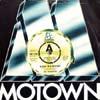
I chose this because it’s the record I remember most from my childhood. My father played it all the time; at every single party they ever had, this was the anthem. It’s an incredible song. It’s got enormous production by [Norman] Whitfield—incredible arrangements. It’s perfect pop music.
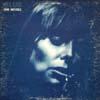
Blue
Joni Mitchell (Reprise) 1971
My mum listened to Joni Mitchell all the time—still does—so I grew up listening to her too. Blue has become a hugely inspiring record for me. Melodically it’s great, the way it was put together is great, the songwriting is incredible. It never gets any worse; it always sounds good.
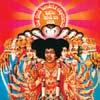
Axis: Bold as Love
Jimi Hendrix (Reprise) 1967
Hendrix was truly one of the all-time greats in everything: musicianship, production, innovation.
When I was younger, I never understood feedback, but then it all started making sense to me and this is when my own music tastes began, with Hendrix. I could have picked other albums, but I keep thinking this is the best. It’s a bit more psychedelic in some ways. What they achieved with such limited equipment is amazing.
His debut solo long-player, 1999’s Dialogue, continued to skirt the boundaries of jazz, hip-hop, and electronica, but
In response, the band unleashed their exploratory freejazz opus, Eph (1999), highlighting their urge to expand in all directions, and reveling in their love of performing and working with acts that had little in common: Badly Drawn Boy, Godspeed You Black Emperor!, To Rococo Rot. From 1998, Kieran began releasing audacious solo strikes under the name Four Tet. His first experimental EP, 1998’s Thirtysixtwentyfive, alluded to a well-developed awareness of Krautrock’s locked grooves, the sub-bass tropes of hiphop, and the spiritual quest of free jazz.
It excites me when someone makes a radically experimental record but makes it in a way that people can identify with it. That changes the future of music. [Missy Elliott’s] “Get Ur Freak On,” [Aphex Twin’s] “Windowlicker”—no one could imagine those records before they arrived, but they understood it immediately; the sound is not too alien to them. That’s the ultimate goal—you see people’s perceptions of music changing in real time.
You’re always being lumped into different scenes, from post-rock to folktronica. How do you handle that?
People keep trying, and I keep trying to avoid it. I don’t

Siamese Dream Smashing Pumpkins (Virgin) 1993
This was a landmark teen album for me. There are mad multi-track guitar solos that I could play on guitar. I got this copy on the day of Phoenix Festival. I had just enough money to eat and I still saved something to buy this the morning after the festival. When I got home, I hadn’t washed in five days, and I put this on and it was everything I hoped it would be. I still
listen to it now all the time. Melodically and the way it is built has all had a massive effect on the music I make now.
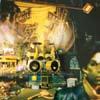
Sign of the Times
Prince (Paisley Park) 1987
I was always into Prince. I missed his good period, as I was around ten, but the girls at school were into him and being into him gave you a lot of cred with them, especially if you made them a tape. This album is insane because of the way it’s recorded—all made with drum machines played live and slightly off kilter. Sonically, it sounds so different to everything else—the speeding up and slowing down of his voice. I like that level of experimentation.

“Ni Ten Ichi Ryu”
Photek (Virgin) 1997
Everyone goes on about Autechre and Aphex, but I also think Photek was up there. His records were more ambitious than anything else going on; they were on a whole other level. This record is off the scale. What I love about it is not only was it trying to be the most innovative thing ever, it also tried to rock a club at the same time.
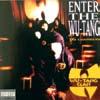
Enter the 36 Chambers
Wu-Tang Clan (Loud) 1993
I think that this is one of the best albums ever made. I go back to it again and again as a record I thoroughly enjoy and that has some kind of magic in it that I reach for and aspire to when I make music. I don’t mean I want to sound like them, but I love their mentality.

Tortoise (Duophonic) 1995
This track is all over the place, and it sounds incredible. For me, it was a whole new world of music. The combination of this and “riot grrrl” and K Records and Pavement made me realize that Fridge wasn’t just a band messing around in our bedrooms. Tortoise justified all our interests in drum and bass and lo-fi. They inspired me to see that you don’t need a proper studio to work.
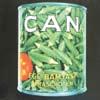
Ege Bamyasi
Can (United Artists) 1972
This is an album that has so many killer tracks and it’s my favorite Can album. It’s hugely influential. No one has ever sounded like them and no one ever will. They came out with a sound that smashed everything up.
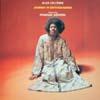
Alice Coltrane (Impulse) 1970
I bought this because of the cover. I listened to it and thought, “Wow, that’s on another scale.”
From this, I became obsessive about cosmic jazz and became interested in music that combined radical Black politics and Eastern mysticism.
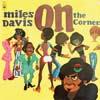
the Corner
Miles Davis (CBS) 1972
My dad was a sociology teacher and taught a course on the history of hip-hop. He would talk to me about the social background of music, and that was when I understood the bigger picture and got interested in musician’s attitudes. I started to realize that Miles Davis was a hugely inspirational person because of his wanton need to move forward all the time with his music, no matter how popular he was. I bought more and more of his records, but I like this because it’s such a heavy funk album.

Pete Rock and CL Smooth (Electra) 1992
There is something from that era that has had an impact on my production. Pete Rock’s loops and drums always influence me; he has a real natural flow, not too rigid. I can listen to this tune a million times, and every time I hear it, it stops everything.

Steve Reich (Deutsche Grammophon) 1973
I’ve never been into classical music, but I love repetition. Classical has always been to me about having an idea and exploring all the variations of that idea; whereas the music I like, such as hip-hop, is about finding an idea and repeating it until you get bored. I heard Reich was all about repetition and this is one of the most beautiful things I’ve ever heard. It has influenced the way I approach things.
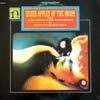
Morton Subotnick (Nonesuch) LP (1967)
I’ve got about a hundred squiggly electronic albums, and this was one of the first ones that had big commercial success at a time when most of them were coming from universities and radio stations. You can actually really listen to it. Parts of it sound more contemporary than electronic music that’s around now, in terms of the arrangements and quality of sounds. .



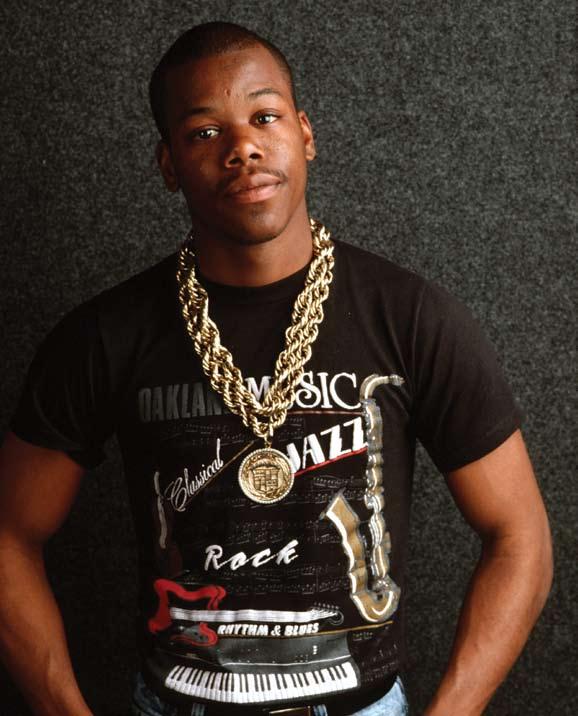
Bay Area hip-hop and the rise of hyphy
by Joe Keilch
It took eight long years before I got my break, So I wonder why rappers make fake-ass tapes. You won’t get paid like I did, so give up punk.
And while you’re in the studio, I’m in the trunk.
–Too Short, “In the Trunk”
Bay Area hip-hop is currently experiencing a resurgence in outside interest that has not been seen in over ten years. Most of the current attention is focused on a new movement, sound, and culture dubbed “hyphy” by hometown hero Keak da Sneak. Before beginning to try to define hyphy, it’s important to back up and look at the history of Bay Area hip-hop and the factors that have affected it. Looking at its history, the musical phases, the business moves, the important subregions of the greater Bay Area, and the support of local radio and retail outlets, one model can be seen over and over: the do-it-yourself approach.
While there were artists who came before him, Todd Shaw’s alter ego, Too Short, aka Short Dog, aka Shorty the Pimp, was Oakland’s first hip-hop superstar. Musically, he was heavily influenced by Black music stars of the 1970s and ’80s; yet another great influence on the crafting of the Too Short character was the 1973 blaxploitation classic The Mack Filmed in Oakland and starring Max Julien, Richard Pryor, and Roger E. Mosley, this film was hugely influential on young men who grew up in Oakland in the 1970s. Watch the movie with someone from Oakland and you’ll hear “Hey! That’s where I…” over and over. While Short grew up in South Central, Los Angeles, and didn’t move to Oakland until 1979, the prototype for the mack spitting game was laid down before he hit “The Town.” And he ran with it. Much like The Mack ’s pimp character, Goldie, recruiting his girls one by one after he got out of prison, Short and his partner Freddy B sold tapes one by one on foot to anyone with a little money to burn—mostly local dope dealers. He’d even make special tapes where he shouted out someone’s name for a little extra. As he explains in Brian Coleman’s book, Rakim Told Me, and in just about every song he’s ever released, once he’d captured that market, he stepped it up and starting selling tapes out of the trunk of his car; they quickly became regional best sellers. The next step was to sign with local label 75 Girls, through which he dropped three records, Don’t Stop Rappin’ ; Raw, Uncut and X-Rated ; and Players. When it was time to move on from 75 Girls, Short started his own label, Dangerous Music. The label’s first release in 1987, Born to Mack, went on to sell over 50,000 copies in the Bay Area alone. It was from these phenomenal sales, without a single, without major-label push, with only Short and his label’s work, that Jive Records came calling. Like Jive would later do with artists from other regions all over the country, Short’s next record, Life Is…Too $hort , was dumped into the market with little to no promotions, no single, no posters. However, Life Is… went on to sell 300,000 in its first three months, largely through Short’s grind on his own behalf and the buzz and fan base he’d es-
tablished with his earlier releases. Once it was clear that he was a “national” artist who could sell big numbers outside of the Bay Area, it was on. Short went gold or platinum on every record he released through the mid-’90s. Musically, Bay Area hip-hop through the mid- to late 1980s and early 1990s was largely based around samples and replaying records by Zapp, P-Funk, Cameo, Ohio Players, One Way, and other artists that are thought of as West Coast funk, at least to people on the West Coast. Examples can be seen all over Digital Underground’s Sex Packets, Richie Rich’s “415,” and Mac Dre’s “California Livin’.” Like Al Eaton, Too Short’s production partner up until Shorty the Pimp, many of the producers during this period played a variety of instruments and would create songs around familiar melodies with a minimal amount of sampling. And, of course, there were liberal doses of the Roland 808 drum machine. Many of Too Short’s records were built around nothing but an 808 drum pattern and a very simple synth line. Combing these stripped-down elements with his trademark “ biiiitch,” the sound was created.
On the back of “Dope Fiend Beat” and “Freaky Tales,” Short became the soundtrack for the entire Bay Area. But, he never hesitated to claim exactly where he was from, East Oakland. As Too Short proudly proclaims in “In the Trunk,” “Every rap I made was about this town.” In the same way, other important areas in the Bay Area asserted themselves. North Bay’s Vallejo had E-40, B-Legit, D-Shot, and Suga T, with Celly Cel in Vallejo’s Hillside area, while Mac Dre and Mac Mall had the Crestside neighborhood locked. The other corner of the triangle was San Francisco, primarily the Fillmore neighborhood, home to JT the Bigga Figga, San Quinn, Messy Marv, and the whole Get Low Players crew. Of course, there were rappers in other parts of the region, including Hunter’s Point, Lakeview, and Oakdale in San Francisco and West and North Oakland. But, up through the mid- to late ’90s, the majority of rappers in the Bay Area could still be found coming out of East Oakland, Vallejo, or the Fillmore. The importance and interplay

of these neighborhoods can also be seen on the numerous collaborations between artists from the three main neighborhoods.
In regard to the di Y model, the following point can’t be made too strongly. With the notable exception of Tupac and Del tha Funkee Homosapien, the di Y approach (sell tapes out of the trunk, move up to a regional label/distributor while developing personal relationships with radio programmers and personalities, and then make the jump to a major label) was the blueprint that every subsequent artist followed. MC Hammer, formerly “The Holy Ghost Boy,” went the independent route before signing with Capitol Records and making a mockery of Bay Area hip-hop. Digital Underground created a regional buzz by distributing the “Underwater Rimes” 12-inch with L.A.-based Macola Records before signing with Tommy Boy and releasing the multiplatinum Sex Packets Young Black Brotha (YBB) Records got first their area and later the whole Bay hooked on Mac Dre, Mac Mall, and Ray Luv through Strictly Business Records before releasing projects on Atlantic, Relativity, and Tommy Boy. San Francisco’s RBL Posse pumped hundreds of thousands of copies of Lesson to Be Learned through In-A-Minute Records—which was run out of local one-stop distributor Music People—before signing to Atlantic Records. And, while later associated with New Orleans, Master P got his start in Richmond, which is about halfway between Oakland and Vallejo. Off the success of his West Coast Bad Boyz project, a compilation featuring staples from the Bay Area scene at the time, P was able to
negotiate the deal with Priority Records that gave him the distribution outlet for the gazillion No Limit releases to follow. (Oakland producer E-A-Ski claims that he hooked P up with Priority based on his relationship with the label.)
Most important of this era was E-40 and his Sick Wid It Records. After building out from his home base of Vallejo, 40 dropped three releases that brought Barry Weiss and Jive Records to his door: his “The Mail Man” and “Federal” and the Click’s “Down and Dirty.” E-40’s increasing sales were evidence of a changing of the guard, his impending rise to the role of Bay representative to the rest of the country, and the next phase of Bay Area hip-hop. Best described by E-40 himself as “mob music,” this style was tailored for California’s car culture. The music is slower and harder than what came before, and the lyrical content was more concerned with speaking directly to the listener and to the realities of the street than to pandering for commercial success. It was led by producers like Khayree, Ant Banks, Tone Capone, Mike Dean, Studio Tone, Sam Bostic, and Mike Mosley, among others, who provided beats for the Luniz, Celly Cel, 3X Krazy, and Spice 1.
At the same time mob music was becoming the predominate sound, the Bay also saw a wave of artists who drew their inspiration from New York hip-hop. Ice Cube’s cousin, Del, dropped his first album, I Wish My Brother George Was Here, in 1991, and was quickly followed by debuts from Souls of Mischief in 1993, and Casual and Extra Prolific in 1994. Del and Souls both made it to a sophomore release before the whole Hiero crew was dropped from their ma-

jor-label deals for not meeting sales expectations, according to Hiero member Domino. In a reversal of Too Short’s formula, they went back to the indie grind where they’ve been for almost ten years now. Domino is clear that “Too Short and the whole indie mentality showed us that there was something other than the major-label route.” As Hiero was hitting Telegraph Avenue, the main shopping strip in Berkeley, with their homemade tapes for sale, they were competing against crews like Hobo Junction, Mystic Journeymen, and the whole Living Legends crew. At the time, there were several important stores along Telegraph Avenue. If they didn’t get at you in between stores—“you listen to hip-hop?”—they’d have a second shot inside the store.
Part of the ability to sell enough units to earn a living as regional or indie artists comes in part from the retail support in the Bay Area. Stores like T. Wauzi’s in Oakland, Star and Zebra Records in San Francisco, Leopold’s and Amoeba in Berkeley, and the mini-chain Rasputin’s have always sold records by regional artists and other independent artists. Balance, the current hip-hop buyer at Rasputin’s and an Mc himself, says that Bay Area releases sell as much as or more than a national artist in Rasputin’s stores. A Bay artist can sell between 7,000–15,000 units in the Bay Area alone. That’s partly due to some store buyers’ understanding of what the people want—many because they are Mc s, dJs, or producers themselves—as well as distributors that have in the past or currently do see the money in Bay artists, including Marin County–based City Hall, Music People, California Record Distributors, and SMC, a farm-team
distributor for Navarre/Universal. The other part of this equation is the success of Bay Area artists in the South and Midwest. As Too Short, E-40, and other Bay Area artists have never sold well in New York, and most of the music industry and hip-hop press machine is based there, they are seen as largely inconsequential and a “regional thing.” But, that dismisses the fact that their platinum-plus sales are largely based on support and their fan bases in parts of the country other than the Northeast. And, platinum on the indie level or with a distribution deal can provide a lot more than just a living.
Radio support has been a much dicier story. On the college and community level, stations like San Francisco’s KP oo, University of California Berkeley’s K a L x, University of San Francisco’s KUsf, and Stanford’s KZ s U have exposed Bay Area artists in differing ratios of street-oriented to more backpack-focused hip-hop. But one station has always been the most important in the Bay Area in any discussion of hiphop, KM e L . In the early to mid-1990s, KM e L was a groundbreaking station. Once home to King Tech and Sway’s 10 o’clock Bomb, the forerunner to The Wake Up Show, KM e L was the most important hip-hop station in one of the U.S.’s top-five markets. Mix-shows routinely broke new records, both soon-to-be regional hits and songs by national artists. The breadth of the Bay’s diversity, from 3X Krazy to Souls of Mischief, from N2Deep to Total Devastation, from Digital Underground to 415, could all be heard. But, as a result of the loosening of FCC radio station ownership regulations in the Telecommunications Act of 1996, KM e L and KYL d








the distantly second radio station of importance—were bought by the media juggernaut Clear Channel in 1999. As a result, KM e L saw the same type of playlist homogenization that Clear Channel stations around the country dealt with. Between 1999 and 2002, the self-proclaimed “People’s Station” added fewer and fewer local acts until its playlist was nearly identical to Clear Channel stations halfway across the country. But in late 2001 and early 2002, the tide started to change. Amidst rising protests in the community, the “People’s Station” added a song called “Closer” by Oakland soul singer Goapele to the rotation. It quickly skyrocketed in numbers of spins and was soon followed by an influx of local talent that was bubbling in the streets, first and most notably, Keak da Sneak’s “T-Shirt, Blue Jeans and Nikes.” Once it became clear that local artists were a big part of what Bay Area commercial radio listeners wanted to hear, the number of locally produced songs on the radio changed quickly. As Von Johnson, music director and mix-show coordinator of KM e L , and self-proclaimed “Bay Area radio boss,” explains, Bay Area artists routinely get seventy to eighty spins per week on KM e L
The first wave of artists after the radio dam broke included Federation, E-A-Ski, Frontline, and Bay mainstays Keak and B-Legit. However, the first wave quickly grew into a split: on one side was E-A-Ski and Frontline with their “New Bay” sound; and on the other stood Rick Rock and Federation. Ski’s sound was more traditional West Coast: big bass lines, synth lines, and melodic choruses, more up-tempo than mob joints but still for riding in cars. In some respects, it was both a transition phase to hyphy and an updating of the classic west-side sound. Federation came out a little ahead of the “hyphy” curve. Their first single, produced by Rick Rock and titled “Hyphy,” dropped in 2003 and contained the blueprint for what almost every producer and artist since has latched on to. Up-tempo with crazy amounts of energy, chaotic elements, vocal samples, and the ubiquitous E-40 guest verse, “Hyphy” ensured confusion in people over thirty and made eighteen-year-olds go crazy. In the end, the New Bay versus hyphy debate was short-lived and, as Federation puts it, “Make a baby mama slap her baby daddy, hyphy!” won out.
And that brings us to some kind of definition of what “hyphy” is. E-40 and Keak view it as a movement. Oth-




ers say that it’s not a movement because it lacks a common definition of itself. In part, it’s a particular musical sound, largely based on Rick Rock’s production and his imitators. Rick describes it as “youngster-driven…high-energy West Coast music.” Partly, it’s white tees, fronts, dreadlocks, and ecstasy pills. Partly, it’s people getting wild and having a good time in spite of the everyday struggle of being young and Black in a fucked-up economy. And, partly, it’s a truly unique regional phenomenon that developed as a result of the isolation that the Bay Area has been living in since the mid-1990s, in the same way that New Orleans did with bounce, Atlanta did with crunk, and Houston did with screw. One thing is clear, it’s something that is as Bay as Too Short selling tapes out of the trunk.
In the time that hyphy has developed as something that the Bay Area can get behind, a whole new crop of artists have emerged: Ya Boy and Bailey from the Fillmore, Mistah F.A.B. from North Oakland, Turf Talk from Vallejo, and the Team. The next generation of producers is represented by Trax A Million, Bedrock, and Droop-E, E-40’s son. Even perennial tastemaker DJ Shadow recorded a song for his new album called “Three Freaks” featuring Keak da Sneak and Turf Talk. While all of these artists grind, selling cds, mixtapes, and 12-inches without major deals in the same way E-40 did a generation before, E-40 is the artist who is taking hyphy nationwide. After exiting his deal with Jive, 40 signed with Lil Jon’s BME label and is poised to bring a nationwide hit home with “Tell Me When to Go” featuring Keak da Sneak. E-40 has combined the hyphy sound with his veteran knowledge of the music business and Bay Area culture, and has created a video that fully captures Oakland’s youth/street culture—“going dumb,” rocking stunna shades, and ghost-riding the whip, for example. Now it’s up to the major labels to sell it and see if people around the country quit scratching their heads and get it. Only time will tell. But, in the meantime, lesser-known artists are continuing to build their careers in the same way Too Short did more than twenty years ago. .
Joe Kei L ch, aka DJ Eleven, interviewed Da Beatminerz for Issue 2.
THURSDAY, JULY 27th

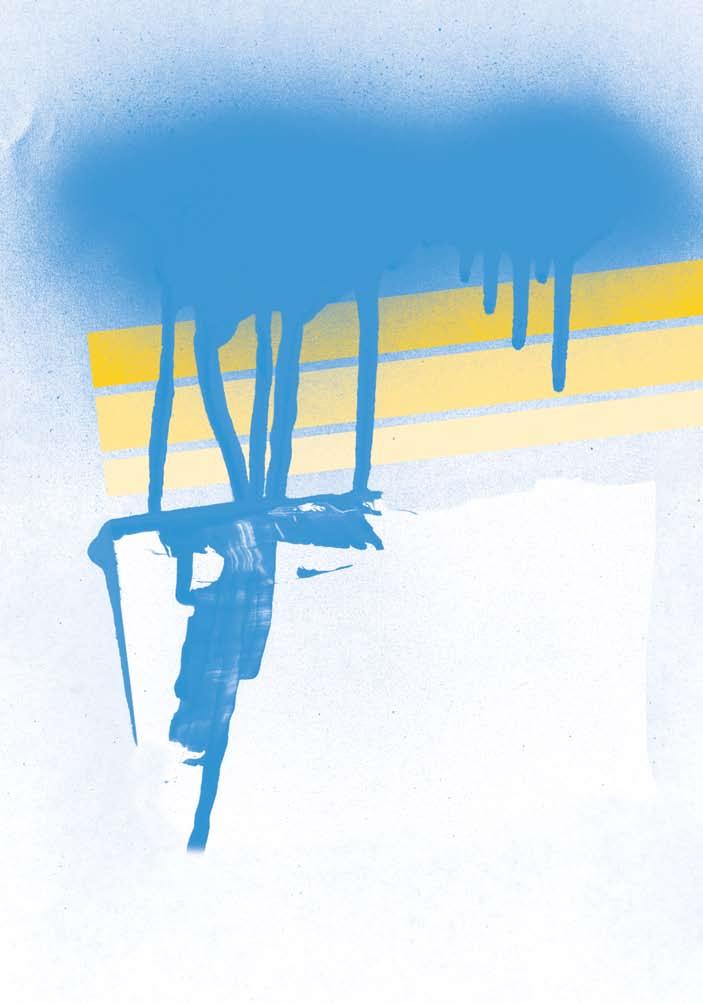
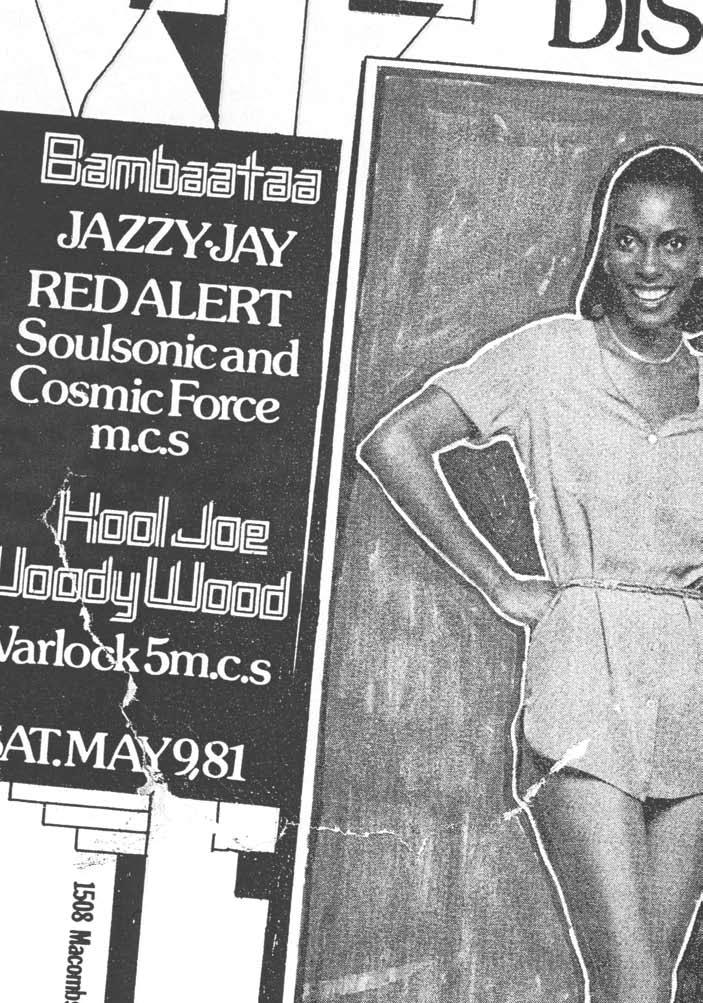
By Anaïs Carayon
Phase 2 would probably disagree with that title, but that’s what Buddy Esquire called himself back in the days in the Bronx. “It was not out of arrogance, more of amusement,” he explains, laughing. A very humble and discrete character, Buddy Esquire has nevertheless been responsible for more than three hundred flyers during the course of his short career. His skills helped to promote legendary venues like Harlem World, Bronx River Center, the T-Connection, and the Ecstasy Garage, and boosted the careers of many local artists such as DJ Breakout, Grand Wizard Theodore, Afrika Bambaataa, the Funky 4 + 1, and the Cold Crush Brothers. ¶ When the uptown party scene died out around 1984, Buddy Esquire lost all his customers. Maybe too shy—and definitely too proud—to bother looking for new ones, the Flyer King disappeared from the face of the earth.
When did you start being interested in art?
First, I was into comic books. Until this day, I still collect comic books. In late 1972, I got into graffiti because a friend of mine was doing it. It was a bandwagon type of thing. Back then, I used to tag Phantom 1, but I was no bigtime graffiti guy. I was doing trains on the 2 and the 5, and occasionally the 6 line. I was never affiliated to any graffiti organization. I kept practicing and eventually I got better at handling letter form.
When did you start making flyers?
To be exact, it was in November 1978. I did one in 1977, but I don’t really count that one because it was really amateur. I knew Tony Tone from high school. He thought I could do a decent job making flyers, so he offered me the chance to make some for DJ Breakout, and I accepted. The first flyer I did was for a party at 131, a junior high school. There were no computers back then, so how did you make them?
I made my first flyers only by hand. Then, after a while, it became a little time consuming, so I decided to buy presstype letters and just design the background. These letters came on a plastic sheet, so you would just make sure everything was straight and transfer them onto paper by rubbing.
When did you start producing a large volume of flyers?

Soon after the Funky 4 broke up. When people see you can do something with a certain amount of competency, they want you to work for them too. So I started working for other people, but they were not all reputable characters. I worked for a lot of shady people, who would not give me back the original flyer and who would not give me any money for what I did.
How many flyers would you make in a week?
Two, sometimes three. I made over three hundred flyers during the course of my career. That’s quite a few when I think about it. It would take me from five to six hours to make one.
So it was not really a full-time job?
Basically, it was full time. It cost me a lot. I dropped out of college and I stopped playing basketball, because I was spending all my time making flyers between 1978 and 1983. What were your inspirations for those flyers?
My first inspiration was sign painting, because I had read a book on it. That is how I learned the basics on proportions and on how to make the letters. My second inspiration—I guess I have to say Phase 2. After 1979, he started getting into design and I was still basically into letters. I remember looking at a flyer he did, and I thought he had an interesting style. I tried to do the same thing but doing it my way,
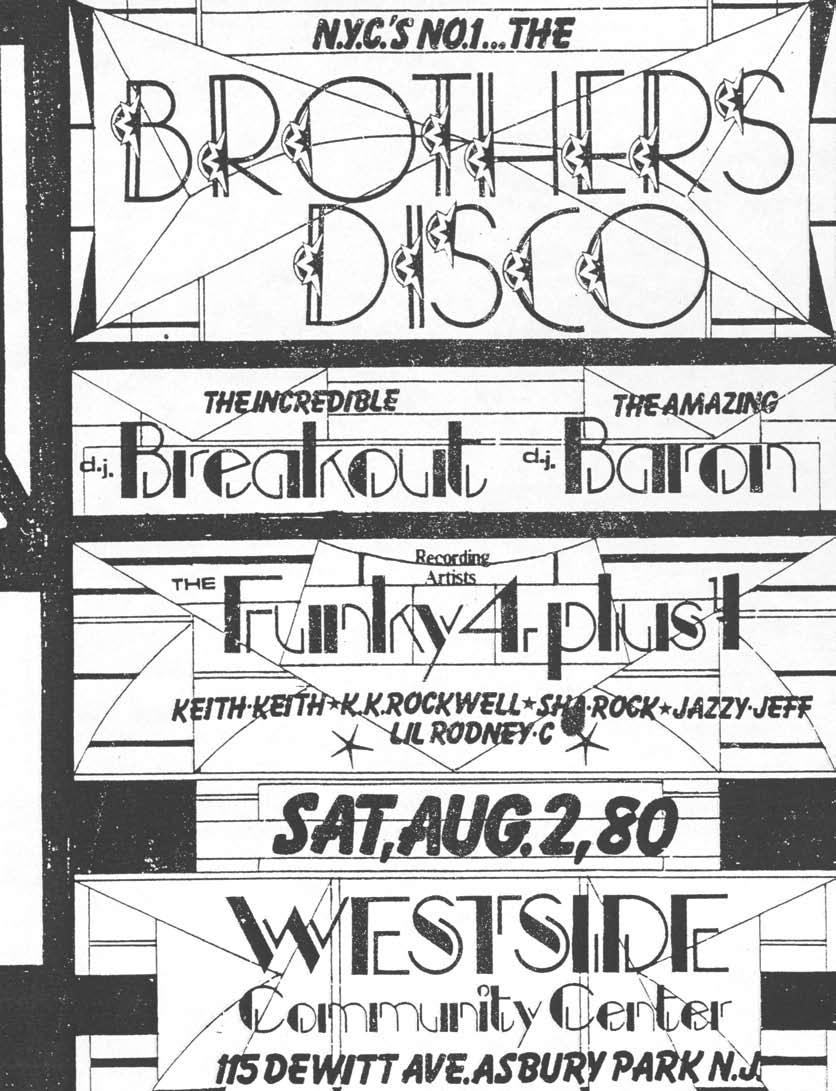
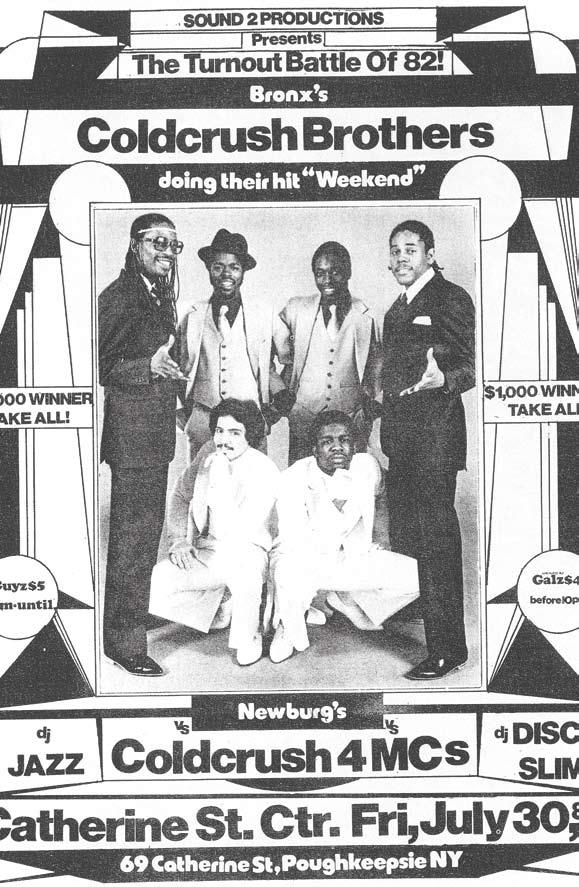
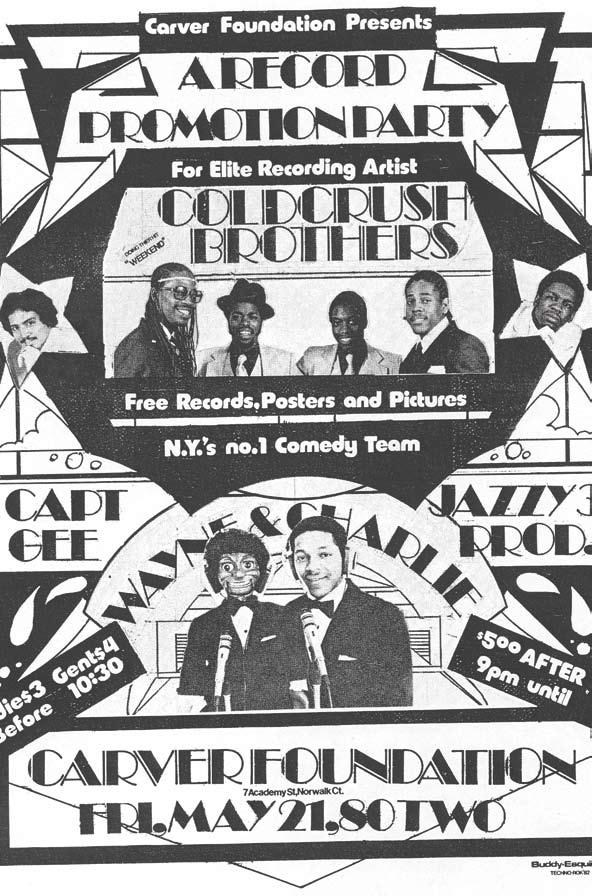
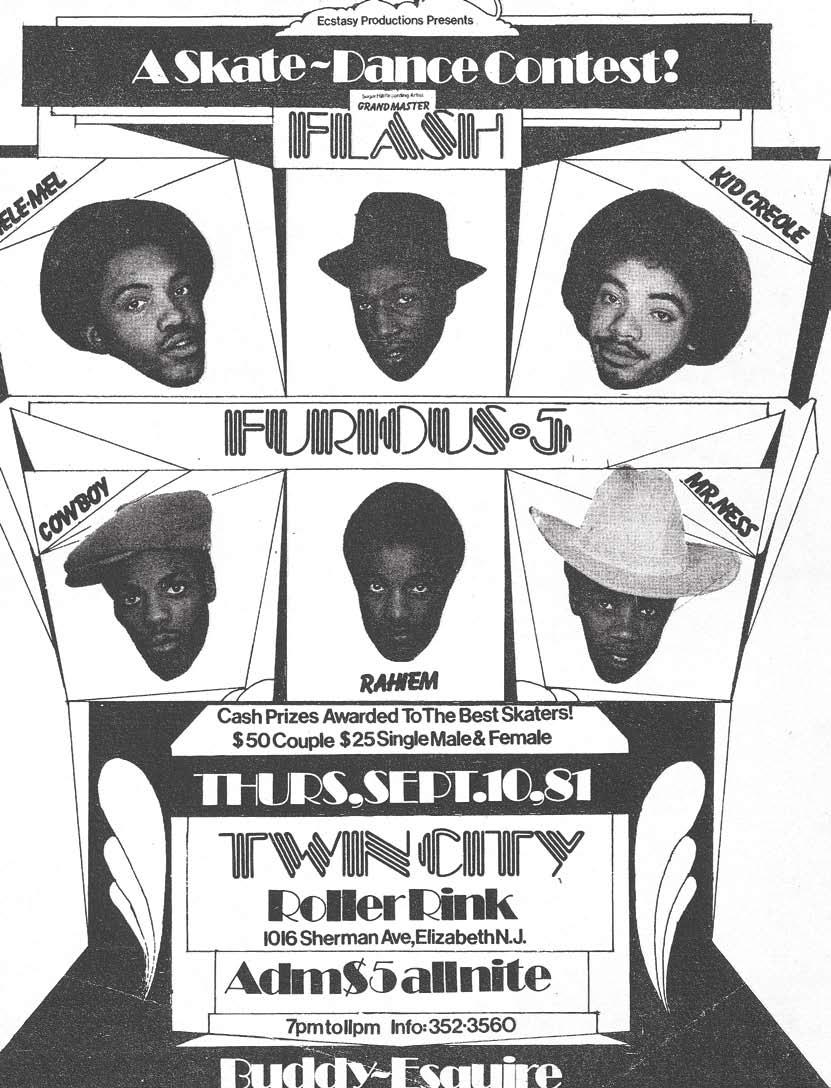
and I think I accomplished that. People would still say I was biting his style, but it was mine, believe me.
Was there a competition between Phase 2 and you?
If anything, it was a friendly competition. We always got along. I never had a problem with him, and he never had a problem with me. And of course, I respected Phase, because, to me, he was one of the best writers. Still now, he is my favorite graffiti artist of all time.
One of your inspirations also came from art deco… Oh yes, that too. When you look at some of my flyers, you see that I used art deco letters. The Broadway [font] style was definitely art deco.
Were you influenced by the architecture of the old theaters in the Bronx or Harlem?
It had an influence on me, but I was not going around looking at the buildings and sketching them. I only recently started looking at the buildings and appreciating their design. Back then, most of the designs I was doing came straight out of my head.
You were using many of Joe Conzo’s pictures in your flyers…
Some promoters would give me a picture, so I would use it on the flyer. I would always try to do something different with the pictures. For example, with the picture Joe did of the Cold Crush Brothers, with machine guns, I cut the picture and cut their heads off. Sometimes, Arthur Armstrong, the owner of the Ecstasy Garage, would complain because I was cutting the pictures, but I was just trying to be creative. Why did you only meet Joe Conzo very recently?
That’s a good question. I was working with the Cold Crush, but I was never an official Cold Crush Brother, so to speak. I was only going to their parties at the Ecstasy Garage, because I was working with Arthur, but that’s it. I may have seen Joe, but I didn’t know it was him. We were never introduced. I didn’t meet him until 2002. That’s pretty strange. Were you a hip-hop fan?
I was there when they made it up, so, yes, I guess I was a fan of hip-hop. I also had a lot of records at the time, because my brother and I used to collect them, but I was not a dJ. I’m not really a party person. I am a quiet stay-at-home type of guy, but at that time, I was going to parties. First, I was going to Breakout’s parties, and that’s one thing I hated about making flyers for Breakout, because I had to wait until the end of the night to get the money. After they broke up, I was making flyers for Arthur Armstrong, so I was going to a lot of his parties. It was fun, but it was trouble too. Who was your favorite group?
I have to say Breakout was good. Bambaataa was interesting also. But I can’t say I was a Flash fan. I knew some of those guys, some of them I didn’t, and some of them I never wanted to know, because some of them were kind of arrogant. How did you feel when hip-hop started to get more recognition?
I thought it was interesting to see more and more records coming out, but “Rapper’s Delight” was not my favorite. You know what I’m going to say about Big Bank Hank, right?
That he stole Grandmaster Caz’s lyrics? He definitely did. I was at the Pao, the Police Athletic
Organization, one time and that was the first time I heard Grandmaster Caz, who was known as Casanova Fly, doing his Superman rhyme. After that, I heard it in “Rapper’s Delight,” and I was like, “Man, that guy stole his rhyme.” A lot of people say he supposedly didn’t, but he did, believe me.
Were you involved in the downtown scene?
Phase used to make flyers for some people downtown back then, but I was not. There was no way I could make flyers for them. I never asked to make a flyer for anybody, and I never will. It was good that hip-hop was getting that recognition, and of course I was interested in making money, but it just wasn’t me.
When did the party scene uptown start to be on the decline?
There were parties uptown until ’83 or ’84. At that time, you could basically hear everything on the radio and a lot of the venues were closed down. Various reasons caused that decline, but drugs had a lot to do with it. In ’83, I was already doing less flyers, and I made the last one in ’84. Suddenly it was gone, the bottom dropped out. It was upsetting, but what can I do?
Your work was shown in the Born in the Bronx exhibition in London this summer. How do you feel about the resurgence of interest in you?
I didn’t go to London because they didn’t have any money for me. It was my first exhibition ever, and I would have liked to go. Maybe some other time. I never thought my flyers would go so far as other countries. I thought I would just stay locally, and I figured my name would just fade away with everybody else’s.
Hip-hop is now a multibillion-dollar industry and a lot of pioneers are bitter because they never got their dues. Do you think that way?
I could be bitter too, but I’m not. As I said, I never asked for anything. I never tried to make any record cover for any record company. I made one album cover around 1990 for Ellie Matt, but it was because I was introduced to him. I never promoted myself, so what can I say? I can’t be truly bitter, but at the same time, a lot of the flyers I see now are garbage. It looks okay, but a lot of the people making flyers now have no artistic talent whatsoever. I could do better. And if I had a computer, I could do way better.
Don’t you want to get a computer?
Not really. I’m going to need a computer soon, but I’m not in the rush because I have no customers.
Are you nostalgic of these days?
Only slightly. I’m only nostalgic about certain things. Every now and then, I look back at some flyers that I did, but it’s not something I do everyday. Life is to be lived in the present, not the past. .
After a few years in New York, Anaïs Ca R aYon recently relocated to Paris, her hometown. She is editor-in-chief of Brain, a French magazine in the making.
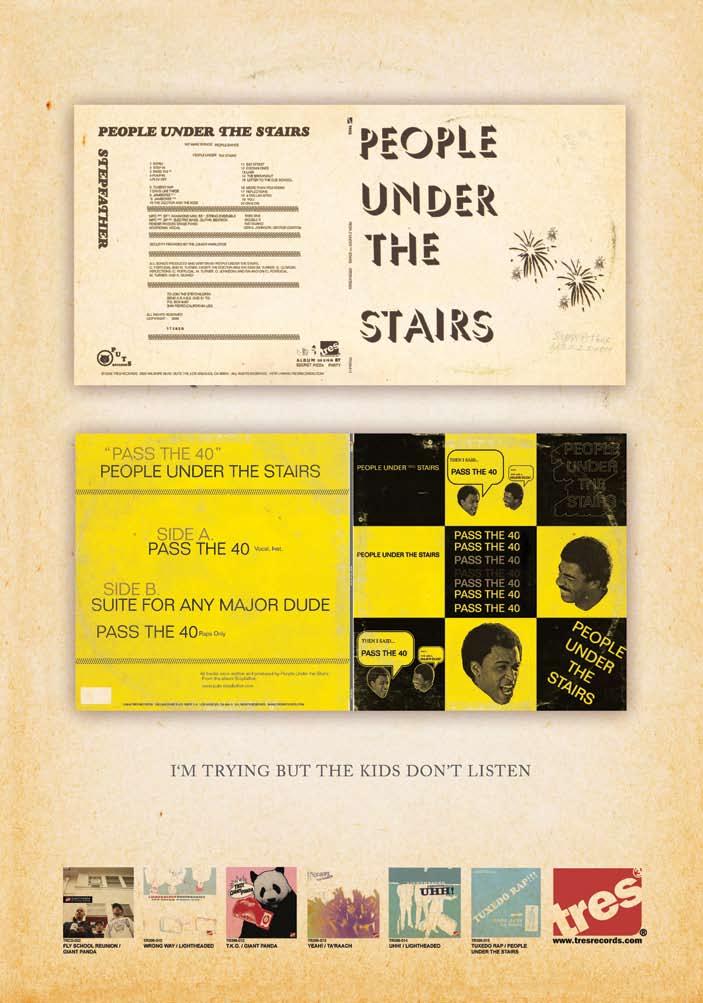



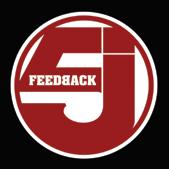
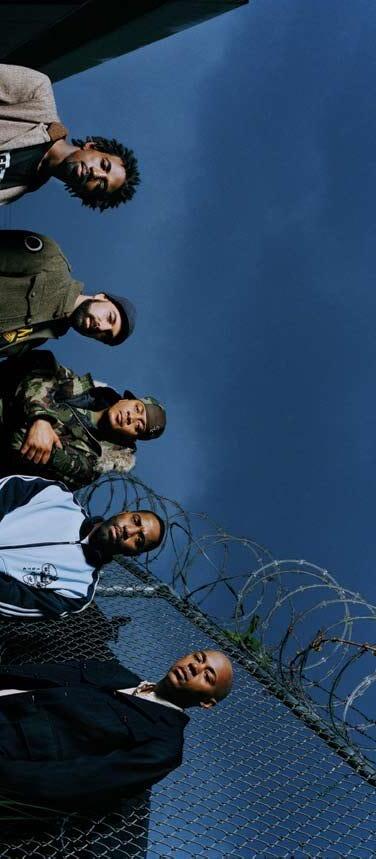
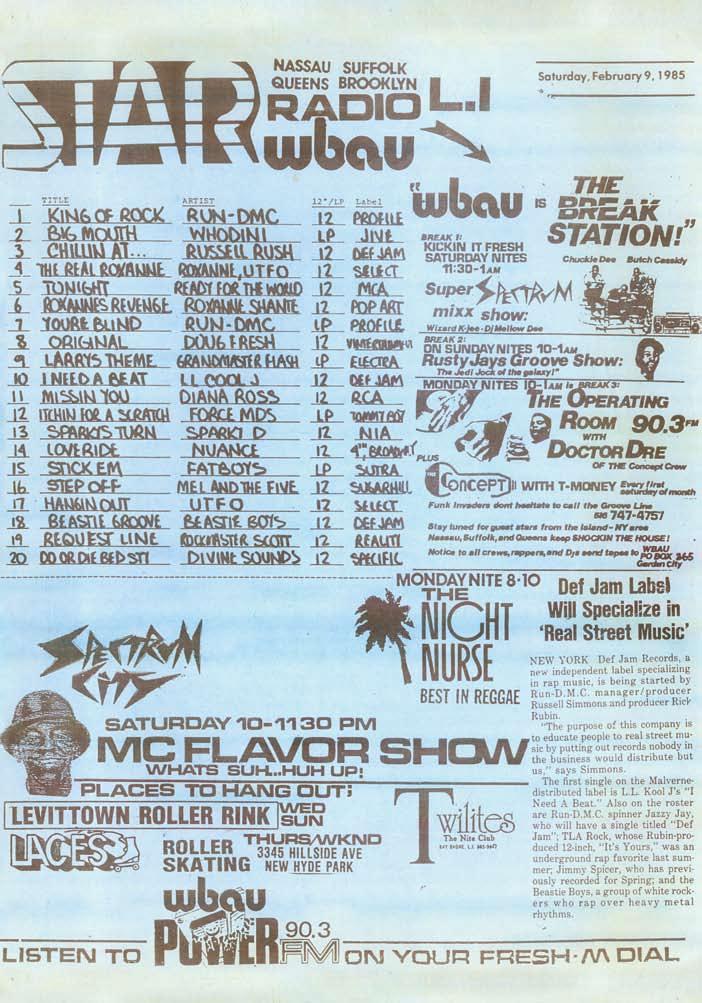
by Jesse Serwer

When Bill Stephney arrived at Adelphi University in 1982, he couldn’t have imagined he’d help birth a cultural phenomenon on the order of Public Enemy, turn Long Island into “Strong Island,” and play a pivotal role in hip-hop’s maturation. But these were just a few of the results of Stephney’s involvement at WBAU-FM (90.3), the campus radio station at Adelphi, where he had won a four-year Urban League scholarship. Under the future Def Jam president’s guidance, WBAU would become a one-of-a-kind talent incubator from which a relative diaspora of suburban Black kids—many of them only several years removed from Bronx and Harlem addresses—would bum-rush the burgeoning show that was urban, fiveborough hip-hop.
To be fair, Stephney would tap into a talent pool that brothers Hank and Keith Boxley (or Shocklee, as they had begun calling themselves) had already begun corralling into Spectrum City, the mobile dJ set they formed in their hometown of Roosevelt during the mid-’70s. By the time of his arrival, B aU already had a handful of R&B dJs catering to the local Black community in Bob Thomas, Rusty J, and J. D. Walker. But, inspired by a summer job he’d landed in the promotions department at local rock station WL i R, Stephney would set into motion a chain of events that would make WB aU one of the country’s most unique college radio stations until its demise in 1995.
“WL i R was one of the country’s top progressive rock stations—the jocks joked around and played everything from Charlie Daniels to Herbie Hancock,” Stephney explains.
“Then they changed to ‘new music,’ playing songs like ‘Buffalo Gals’ with new wave. It was very contrary to Black radio, which was rigid in only playing love-oriented R&B When I got to B aU, I wanted to take that attitude and apply it to a format reminiscent of the hip-hop gigs where we heard everything from Kraftwerk to Bob James. College radio at the time was basically new music shows playing the Dead Kennedys, Flock of Seagulls, but it was incredibly White to me. So I’d play something like ‘Too Many Creeps’ by the Bush Tetras, then T-Ski Valley and Spoonie Gee.” Landing a show from ten to one on Monday nights—a
time-slot that would become synonymous with Long Island hip-hop—Stephney launched The Mr. Bill Show, finding the last piece to his show’s puzzle when he spotted a member of Long Island’s top dJ crew in Adelphi’s cafeteria.
“I was eating this horrible quarter-pounder called the Adelphi Burger, and I saw this guy wearing a Spectrum City jacket,” Stephney recalls of his first encounter with the future Chuck D, graphic design major Carlton Ridenhour.
“Everyone who went to parties in the Black parts of Long Island knew Spectrum, [but] Adelphi was a predominantly White suburban commuter college—most of the population was into Dan Fogelberg or Rush. So I was like, ‘Hey, what are you doing here?’ ” While Chuck recalls this meeting occurring at a bus stop, both agree the conversation ended with Stephney inviting Chuck and the rest of Spectrum to join him at B aU.
Although previous incarnations of Spectrum City had included several dJs, the 1982 version consisted of promoter/ idea man Hank Shocklee, MC Chuckie D, hype man Butch Cassidy, and Keith “Wizard K-Jee” Boxley as the sole dJ (Terminator X, then Norman “Melo-D” Rogers, would join shortly thereafter).
“They all had a lot of charisma—Butch Cassidy later worked as an Eddie Murphy lookalike, which is funny because all the Spectrum cats grew up with Eddie,” Stephney says. “Having them cemented the idea of combining the cool
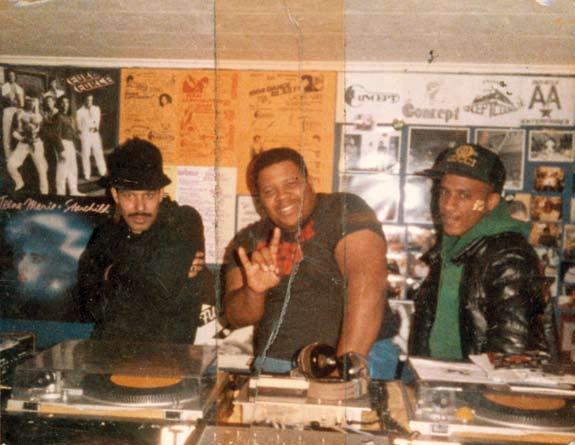
urban dJ thing with this rock and roll-ish format but playing hip-hop, with all these characters and different Mc s. And me as the centerpiece, because I sounded like the conventional radio guy. Monday nights became a clubhouse. It was one big snap session, with sports talk, political talk, and music.”
As Stephney slid into the program director’s role, he gave Spectrum their own Saturday night showcase, The Super Spectrum Mixx Show, from 11:30 to one . “We agreed radio gave us way better exposure than the mixtapes we were doing,” says Chuck. “We couldn’t understand why people would spend money on what you could tape over the radio. BL s and Kiss weren’t doing mixshows then, so we were able to be an alternative and give people what they really wanted.”
Calling himself “Carl Ryder,” Chuck began using his booming voice to call sports games. While answering phones for The Mr. Bill Show, he also copped the soon-tobe-ubiquitous term “Strong Island” from a caller.
“We needed a system for answering phones, so I started giving nicknames to all the towns,” Chuck says. With the exception of Adelphi’s campus, Garden City was an allWhite town, but it was adjacent to Hempstead, Roosevelt, and a string of other towns that had become predominantly Black following wholesale White flight in the ’60s and ’70s. “Uniondale became Chill City, Hempstead was the Hills and the Heights, and there was an area by the bus terminal we called Termiteville. Roosevelt was already the Velt and
Freeport was already the Port, but we really expanded upon it. That these names stuck the way they did really showed the power radio and music had for high-school kids.”
Chuck and Hank furthered Strong Island’s identity by recruiting and coordinating groups to make tapes for B aU and perform at Spectrum parties. Renting a studio at 510 S. Franklin Ave. in Hempstead with producers Eric “Vietnam” Sadler and Paul Shabazz, they began banging out budget recordings. “We made our own music because there wasn’t enough hip-hop records to play on our show,” Chuck says. “We needed to fill the space. But people always thought they were actual records.”
“N-41,” the first song made expressly as a promo for WB aU, featured Butch Cassidy, Chuckie D., and Tony “T.A” Allen of the Townhouse Three, with music and cuts by K-Jee. “N-41 was the bus that went from Roosevelt to Hempstead—all the rappers would be in the back just busting,” recalls Butch Cassidy, who later recorded for T n T and Profile Records as Butch Cassidy’s Funk Bunch and Aaron Allen (his real name), respectively. “From there, we played it on B aU and people were like, ‘How can we be down?’ ”
Groups like the Townhouse Three (later known as Son of Bazerk) and the Choice Five MCs (who morphed into Arista artists Serious Lee Fine) soon emerged from these sessions; Leaders of the New School, Young Black Teenagers, and Kings of Pressure would form in a similar fash-

ion years later. The Townhouse Three’s Tony “T.A.” Allen would inadvertently introduce Flavor Flav to the Spectrum fold when he brought his piano-playing friend to play Cat Stevens’s “Was Dog a Donut” over a beat.
Chuck remembers ordering the hyperactive Flav to answer the phones during his first visit to WB aU He never left. “I remember we were joking, ‘Can you imagine Flavor having a show?’ ” Chuck says. “Bill gave him one then and there.” The MC DJ Flavor Show led into the Super Spectrum Mix Show on Saturday nights and quickly rivaled anything on the station in popularity. “You want to talk about classic—if those tapes were unearthed—” Chuck pauses. “His show was the most unique and the most egotistical. As many people loved it as hated it.”
The hosts of another popular BaU show, Who Knows What —several of whom would later join The Howard Stern Show (Gary “Bababooey” Dell’Abbate attended Adelphi at this time)—devised a method to measure the popularity of BaU’s shows. “Every phone call you got meant a hundred people were listening,” Chuck recalls. “Which was bullshit—in college radio, whoever calls is probably the only ones listening. But we were getting ninety phone calls on a Saturday night.”
Interestingly, many of these calls came from the city.
“BaU had a strong fanbase in Southeast Queens,” Stephney explains. “The signal was only one hundred watts, but they were only twenty minutes away—which was cool,
because that was becoming the heart of hip-hop. The first rap artist we had at the station was Spyder-D. Guys like DJ Divine and Infinity Machine were listening, which was cool, because we looked up to them. Davy DMX and Kurtis Blow came up around this time. In early ’83, my loudmouth friend Russell was screaming about his brother coming out with a record with this guy DMC. We had them come for what I think was their first interview, and that’s when things started taking off for all of us.”
In time, Run, DMC, and Jay would become semi-regulars at BaU, and the Beastie Boys, LL Cool J, and the rechristened Fat Boys (who changed their name from the Disco 3 at Chuck’s suggestion following a gig at Adelphi) would do some of their first, if not their very first, interviews at the station.
“The B aU era was when everybody connected with each other,” Keith Boxley recalls. “People called Long Island ‘country,’ but you could hear all the new shit on B aU two weeks before anyone else. We didn’t have to wait for what the city was doing. In those days, we ran a club called Entourage. People from Brooklyn and the Bronx came through, which was unheard of, because it was another half hour east of us. Everybody’d be listening to B aU while they were driving out to the club.”
While a boost to the station’s wattage began pumping B aU as far as New Jersey and the Bronx, the station’s signal always faded just twenty miles to the east, meaning

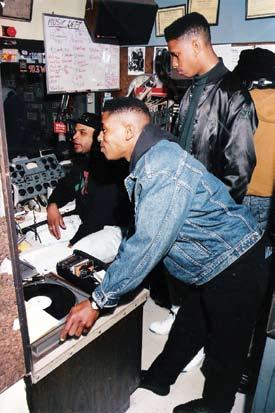


it was out of range for heads in Central Islip, Brentwood, and Wyandanch—predominantly Black towns in adjacent Suffolk County with their own burgeoning hip-hop scenes.
BaU tapes made the trip, however, says AJ “AJ Rok” Woodson of the JVC Force, who credits WB aU as an inspiration for their seminal 1988 hit, “Strong Island.”
“We heard Chuck saying ‘Strong Island’ and started using it. At the time, you still had to be from the boroughs to be considered hip-hop. When they played ‘Strong Island’ on B aU years later, cats from Brooklyn called saying they were gonna bum-rush the station, because they thought we were dissing them! We were just saying you don’t have to be from the city to be hip-hop—you can be from somewhere else, and we were from Long Island.”
Another crew who found a home at BaU was the Concept Crew, who would become Original Concept after signing to Def Jam. Led by communications major Andre “Doctor Dre” Brown, Concept would take over Stephney’s Monday night slot after Mr. Bill graduated and moved into a paying gig at CMJ (College Music Journal ). Their show, The Operating Room, would also be the inadvertent birthplace of Public Enemy.
“ ‘Public Enemy No. 1’ was made in 1984, two years before there was a Public Enemy,” Chuck explains. “Somebody wanted to battle me, so I made a station promo out of it. I was a big rollerskating buff, and ‘Blow Your Head’ was this big underground thing in our area. Kids at the Roosevelt Roller Rink used to skate their asses off during that part where the guitar went nyehhhhh. The dJs would try to bring that part
back, but it was impossible! It was always in my head, ‘If that beat could just be longer…’ I made what I wanted to hear all that time with a pause tape, then rapped over it. When I brought it to B aU, Jam Master Jay was sitting there with Dre. Jay thought it was hot and gave it to Rick Rubin. It became a B aU staple then took on a life of its own.”
Another B aU staple that took off was Dre and Tyrone “TMoney” Kelsie’s “Knowledge Me.” Like “Public Enemy,” the song was essentially a station promo (“I went to check out Mr. Bill, most chill”) but with its pioneering combination of 808 kicks and chrome-rattling bass, it secured a Def Jam deal for Original Concept. Shortly thereafter, Rick Rubin—who had since hired Stephney as the label’s publicist—came looking for Chuck to sign a deal.
While the tale of how Chuck resisted Rick Rubin’s record contract offers because he thought he was too old to be an Mc has been well-documented, it’s also true that he preferred a career as a jock to one as an artist.
“I wanted to do radio more than I wanted to do records,” Chuck says assuredly. “If we had gone on [commercial] radio back in the day, we would have been dominant. We were like a combination of Red Alert, the World Famous Supreme Team, and an informational think tank. Back in ’85 and ’86, we were looking at doing syndicated radio. Russell had brought some pretty credible sponsors like Sprite, Swatch, and Adidas to the table. I really thought it could have been.”
While Public Enemy would take Chuck and crew away from B aU, Dre increased his presence at the station even
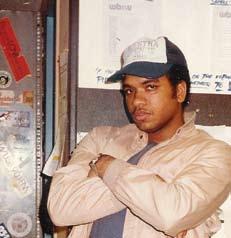

after making Straight from the Basement of Kooley High! with Original Concept and touring as the Beastie Boys’ dJ “I left the show in [co-host] Wildman Steve’s hands, went on tour, and came right back and took it over again,” Dre says. “We always kept the crew together, and we’d always find somebody registered at Adelphi so we could put them in the interview so they’d keep giving us shows.” Around this time, a pre-L ons Busta Rhymes and Charlie Brown began cutting classes at Uniondale High School to answer phones and hang out at the station. Dre could use the help. “I had Monday, Thursday, Friday, Saturday, and Sunday nights, and I was on Monday through Friday in the mornings, the first hip-hop morning show anywhere,” says Dre, who would go on to host “wakeup” shows on major commercial radio stations like New York’s WQh T-f M (“Hot 97”). “I used to go to school, work in a store, do B aU, and dJ parties every weekend. I had a van with a big double bed in the back and I’d sleep there or at the station, get up and go to class.”
Following Dre and T-Money’s departure for Yo! MTV Raps in 1988, “Wildman” Steve Adams’s The Hip-Hop Spot held down Monday nights until the station’s closure. Spinbad, DJ Eclipse, and Cipha Sounds are among the dJs who got their radio feet wet spinning alongside the show’s resident dJ, Riz of Crooklyn Clan fame.
While hip-hop shows had become standard on college radio by this time, Steve and co-host Marnie 411 blazed new directions with First World Dialogue, a newsy, hour-long call-in segment. “People like Chuck and Doug E. Fresh called in and discussed issues,” Steve says. “To this day, no one is really discussing topics and playing music.”
Long before it would become the nation’s highest-rated urban morning show, an early version of The Star and Buc Wild Show aired on B aU for several months in 1995. “I needed a way to promote my magazine I was publishing at the time,” explains Star, aka Troi Torain. “It was my first dabble into radio. Eventually too many letters of complaints to the dean’s office got me tossed off. The things we were talking about, like interracial dating, were too risqué, which was amusing, because Garden City was the same town supporting Howard Stern. Ah, Garden City—the
home of Susan Lucci.”
Several months later, Adelphi president Peter Diamandopoulos, who would soon be ousted for using school funds as his own personal bank account, sold off the station’s license for a fraction of its value without consulting the student government association, which funded WB aU “Being in Garden City, some people felt the station might have been too Black,” Wildman Steve suggests. “But the administration was probably afraid the faculty might say what was really going on with Diamandopoulos.”
The downfall was inevitable, Steve suggests. “Hot 97 kind of destroyed underground radio. Before, hip-hop was only on the weekends. Even two years down the line, kids growing up only knew Hot 97.”
Ultimately, Chuck notes matter-of-factly, B aU “went the way of the tape deck.” But, while Adelphi itself failed to recognize the significance of their defunct station, its former dJs remain profuse in their praise for their radio alma mater.
“Those were the best years of my life,” says Dre. “All the doors that opened for us, opened because of what we did there. Other colleges were doing hip-hop. The difference was, at B aU, the show was the icing. The work, the promotion, the parties, everything else—that was the cake.” .
Jesse Se RW e R is a writer from Long Island, New York. He currently lives in Brooklyn.




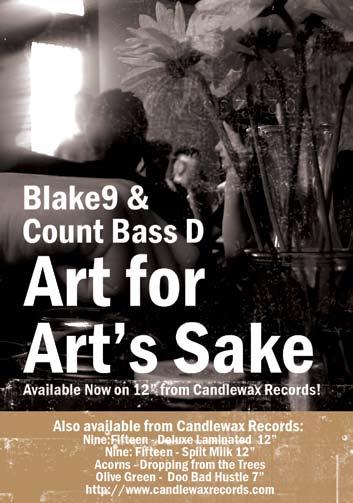


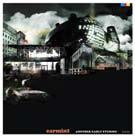


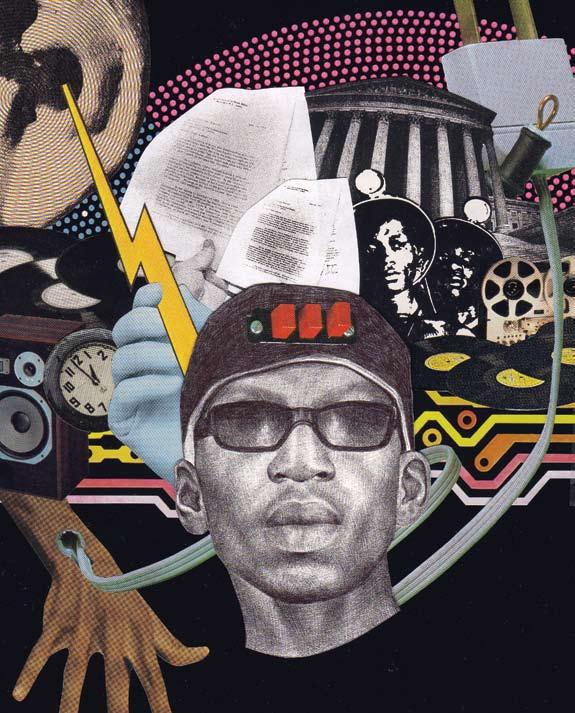
by Joe Allen illustration by Luke Rocha
I’m interested in sonics and how frequencies relate to us. After all, sound is all a perception.
–Hank Shocklee
In November of 2002, Stay Free! magazine released a special issue on copyright law1 that contained an interview with Public Enemy’s Chuck D and Hank Shocklee titled “How Copyright Law Changed Hip-Hop.” They reminisced about their early days of sampling when they “thought sampling was just another way of arranging sounds,” as Chuck D explained. “It was all bits and pieces,” continued Hank. “Collaged together to make a sonic wall,” added Chuck D. When they mentioned the early 1990s, both lamented that the record companies, publishing companies, and lawyers made it impossible, or at least not cost-efficient, to make an album composed of dozens of samples, let alone the hundred or thousands required to make a PE album. Dr. Dre’s groove-based samples became the norm, because, as Chuck said, “It’s easier to sample a groove than it is to create a whole new collage. That entire collage element is out the window.”
In “Sample This!,”2 Hank Shocklee was equally resigned in his discussion of the 6th U.S. Circuit Court of Appeals in the Bridgeport Music Inc v. Dimension Films case that essentially ruled that all samples, even unrecognizable samples, must be cleared. His interpretation of this decision reflects a broad cultural hesitancy to challenge the current direction of copyright law, unless of course it means downloading songs for free.
After hearing Hank speak freely about the various Bomb Squad production techniques during a 2005 conference at New York University celebrating the making of It Takes a Nation of Millions to Hold Us Back and in an extensive interview at the Red Bull Music Academy, I wanted to explore a few issues further with him. We started talking about his work on a book about the production of It Takes a Nation , as well as recording a new album under the moniker Shocktronica—which is also the name of his new record label. Throughout our conversation, Hank would often return to his fascination with frequencies. No matter the project, Hank remains an architect of sonic frequencies.
What is the concept behind your book?
The book will explain the philosophy of the making of the band Public Enemy. It will also be a guide on how to create music in a digital age. PE was of the first to move from an analog world to a digital world. We mixed technology, marketing, promotion, [and] film soundtracks with a squadron of producers to keep PE continually visible.
The book will also discuss the production techniques and the philosophy behind them. The music might have sounded spontaneous, but it was thought out and planned to make it feel like it was spontaneous. We included calculated mistakes by design, such as leaving the bass fuzzy or the beat slightly off, to create a certain kind of energy. We created the emotion and energy of the soul of hip-hop and the streets at that moment in time. All of that was by design.
For the NYU conference, Hank assembled a panel of the album’s engineers. Greene Street Recording Studio, its engineers, and the mixing board were as much a part of the relentless sound of PE as the Bomb Squad. Since so much information was squeezed into each frame of the album, Public Enemy approached what French theorist Jean Baudrillard termed the “ecstasy of communication.” Public Enemy saturated their music with dense layers of unrecognizable samples with a sampling technique that is obscene by today’s standards. For Baudrillard, “It is the obscenity of the visible, of the all-too-visible, of the more-visible-than-thevisible. It is the obscenity of what no longer has any secret, of what dissolves completely in information and communication.”3 One of their composition techniques displays how far they had taken the process of sampling. All four members of PE would play samplers, drum machines, and turntables at the same time, recording the jarring, juxtaposed sounds. When listening to the playback, they would find a groove amidst the utter noise and chaos, as Hank explained, “then lift a sample from it.” Hank later spoke about how he would listen to a mix in the hall outside the studio and listen to the music resonate, because “frequencies had to align in a certain way to create a certain vibration.” In that alignment, “We liked grit. We wanted to make sure we had grit in the mixing board” and in the final mix.
Will you share another recording technique? PE added human elements that can never be recreated, because they weren’t sequenced. We played many things by hand [on the mixing board]. We added subtle differences to the rhythmic loops, so sound would move forward the same way life moved forward. A loop would never be looped at two bars. It might be looped at 2 1/4 bars, so it wasn’t precise. We wanted it to feel infinite. We didn’t want the listener to feel the finiteness of it. Sampling gave us so much variety within the variety of music.
Greene Street engineer Chris Shaw said the track sheet was “like a jigsaw puzzle.” Everyone was on the board, literally, when doing a final mix. That’s probably why the results of their sampling aesthetics and practices have such an organic feel and sound.
When Hank speaks about such production techniques, nearly all of the discussion is in general terms when the issue of sampling is broached. Sure, Hank might mention a James Brown break or “Impeach the President,” but the other dozen samples layered on top of the kick or snare on any given track are never addressed with any specificity.
An album like It Takes a Nation would not even be envisioned with today’s copyright restrictions. According to Hank, “Those records can never be created again on a multitude of levels. One major reason is the sample clearance alone—you can never do that again. There are billions and billions of morsels and goodies in there. I can’t tell you all the goodies in there, because people will still sue me today.”4 In addition, no major company would ever undertake the task of clearing hundreds of samples or risk the potential lawsuits of not clearing samples. This fear of lawsuits hinders artistic creativity and actually makes It Takes a Nation more of an anomaly, frozen in time, unable to influence future producers and artists. Green Street Studio engineer Nick Sansano said, “Nobody was using sampling techniques with the creativity of the Bomb Squad,” and now, thanks to the copyright police, no one can.
Do you wish you could openly talk about the samples?
I don’t mind giving information. I don’t mind teaching. I don’t believe in secrets. I’d love to share those with the world. I have shared techniques, for instance, with DJ Muggs and Pete Rock.
Why did we sample James Brown? It was not because of his soul. He had this jungle grit to him. His music was so rich in African roots that the samples could create a frenzy in people. James Brown had the ability to tap into deep African rhythms. Although the rhythms were very loud, most people didn’t hear it. They only heard the bass, drums, and funk sounds. PE tapped into that James Brown energy, this feverish, vibrant energy. This energy stirs an emotional response. It was music that transcends. We used his jungle grit in a way that was never used in a James Brown record. We brought out the soul behind the soul . When listeners respond to our music, they are responding to something beyond the mere sound of it, something beyond the mere funk of it. We all vibrate on the same frequency.
Would you consider sharing the rationale behind any of your other samples?
James Brown is the main course. Other samples are the flavoring. Like spices, they came from all over the place. It might be a synthesis of jungle rhythm, funk guitar, rock organ. When two sounds are put together, they create subharmonics. Two sounds colliding together create a third sound. Rhythms collide to create new rhythms. The mix radiates back to the listener. They probably did not feel the individual samples. The astute might recognize some of the samples, but even they were feeling this other
vibration [created by the collision of sounds]. This is exactly why sampling music is so fascinating.
If you could still freely sample, would you?
I would love to sample. Sampling is so beautiful, because I get a chance to get a sound that I might not necessarily process on my own. For instance, take Sly Stone’s guitar sound. There are so many variables to that sound, such as the sound board, the effects, the recording room. So many elements go into the sound. With a sample, I can take that sound and use it in a whole new sound that moves the original sound forward.
Now, producers are forced to use the same sounds, which is why so much music sounds the same. The beauty of sampling was allowed in the 1980s when everybody had their own sound that added to the flavor of their artistry.
For Hank, the art of sampling has been greatly weakened by sample laws. “Sampling spawned a resurgence of classic music,” and this led music companies to reissue all kinds of classic and obscure records, but yet, he ironically says, “We can’t sample from the reissues.” Presently, Hank has found a creative solution to all the legal restrictions of copyright law. He expressed his excitement over his latest recording project:
This is why I moved to electronic music. Electronic music is now where hip-hop music was back in the ’80s. I am trying to create my own sounds within sound. In electronic music, I can use any kind of sounds to create landscape. Shocktronica is my electronic label. Music is a mosh of different styles: ambient, trip-hop, hip-hop, drum and bass, and more. My new album is titled Subsonic Frequencies of the Fourth Dimension . It’s a sci-fi project that will be released on Astralwerks. A film is also part of the project. This is my version of electronica.
Is the music sample based?
I don’t have to sample anymore. There are so many ways to achieve the sample texture that there is no need to rely on samples. In the 1980s, we had to rely on samples to get certain textures from records. Now I can emulate all the ingredients without taking a sample. I can start with horn then mix with it grain, noise, bring down the bits, compress it. It’s then going to sound like a sample. I might still add some discord and maybe the discord will be in concert with the listener.
I am still creating frequencies and vibrations. .
Notes
1. Available for free at http://stayfreemagazine.org/archives/20/index.html.
2. Remix Jan. 1, 2005
3. “The Ecstasy of Communication.” The Anti-Aesthetic: Essays on Postmodern Culture Ed. Hal Foster. Seattle: Bay Press, 1983. p. 131.
4. Red Bull Music Academy. Seattle, WA. November 2005.








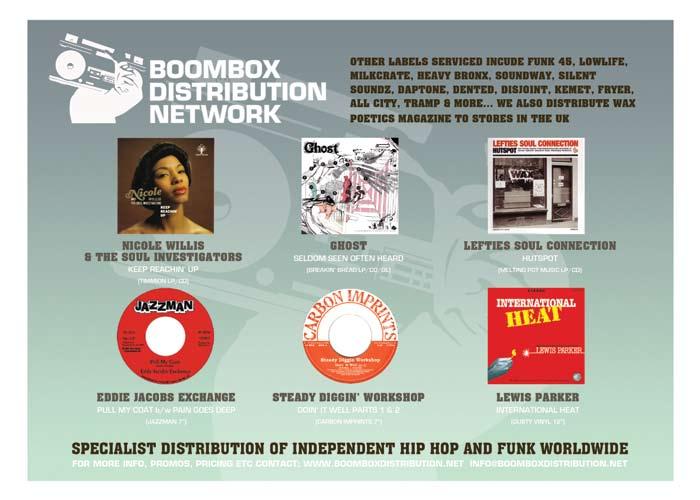
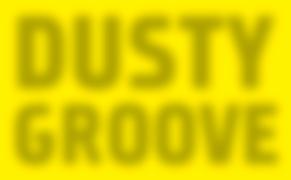









by Andrew Mason
When Grandmaster Flash was asked to donate something to the Smithsonian National Museum of American History’s permanent hip-hop exhibit in early 2006, he chose, along with a mixer and his trademark Kangol, two worn 12-inch singles. Carefully marked, with oddly spaced lines radiating from the center holes like twin Theo Geisel clocks, the labels looked like some arcane code-breaking device or an advanced-radar screen. In fact, the records—doubles of Chuck Brown’s “Bustin’ Loose”—were both. The lines deciphered the inscrutable black surface, pointing the way to the specific sections of the wax where gold was hidden in the form of murderous musical segments. These juicy slices of sound, strung together by DJs like Flash, wreaked dance-floor havoc—a portent of the music world’s future fascination with stripped-down rhythm and patterned samples. Below are twelve singles that contributed heavily to the infant hip-hop scene. Their summa cum laude donor status has earned them the revered title of “The Breaks.”
“Bustin’ Loose” Chuck Brown and the Soul Searchers (Source) 1978
A powerful and influential record in many ways, “Bustin’ Loose” not only was a cornerstone of the nascent hip-hop movement, but is also seen by many as the seminal go-go track. Native to Washington D.C., go-go is rhythmically defined by a swinging, distinctively airy web of percussion built over a simple, mid-tempo kick-and-snare pattern. Chuck Brown illuminates the origin: “One day I heard Grover Washington’s song ‘Mr. Magic’ on the radio, and it reminded me of a beat we used to play in church. I slowed it down to that kind of George Clinton funk groove that people in Washington like so much and added the congas and timbales. Other bands started catching on, and they started calling it go-go, because it goes on and on. That was around 1976.”1 Prior to that, Chuck Brown and the Soul Searchers had released a couple of LPs on Sussex revered among funk aficionados. “Ashley’s Roachclip” from 1974’s Salt of the Earth (and illicitly included on Ultimate Breaks and Beats #12) had a drum-and-tambourine break that rose to uncredited ubiquity in the late ’80s thanks to a certain braided duo’s pop smash. The thunderous percussion section in “Bustin’ Loose” was naturally heavily sampled as well, originally and most effectively by D.C.-based hip-house hero Doug Lazy for Stezo’s “Freak the Funk.” (Though Nelly’s borrowing of the chorus for “Hot in Herre” may be more widely noted.)
“Knock Him Out Sugar Ray” Experience Unlimited (Vermack) 1980
On November 25, 1980, I was at my grandmother’s house in Chevy Chase, Maryland, for Thanksgiving. I remember the radio buzzing with Roberto Duran’s now-famous “no más” defeat at the hands of “Sugar” Ray Leonard. Somewhere less than five miles away, on the other side of Rock Creek Park in northwestern D.C., E.U.’s tribute to the boxer was surely playing. Experience Unlimited’s first recordings betrayed rock/fusion ambitions, but by the time the ’80s began, they were wholeheartedly fueling D.C.’s growing go-go mania. The tune was one of the band’s early salvos and made good use of the similarity between their subject’s name and that of bassist/bandleader Michael “Sugar Bear” Foreman (who a few years earlier had played in John Davis’s Monster Orchestra on the break classic “I Can’t Stop”).
In “Knock Him Out,” a cascade of cowbell and conga is capped with a chiming guitar riff and a slippery bass line. It wasn’t long before dJs in Philly and New York got hold of this single, an easy add to the burgeoning b-boy repertoire with its multitude of breaks and potential cut-in/cutting points. The Boogie Boys’ 1981 single “Rappin’ Ain’t No Thing” shows DJ Darryl C in action, giving a good demonstration of how the cut was being flipped. In case you got tired of side A, the reverse of the wax, “E.U. Freeze,” had plenty potential of its own. It was later re-recorded for 4th and Broadway on the 1985 Good to Go! soundtrack, prompt-

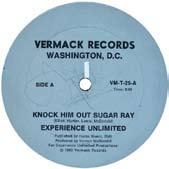

ing a New York Times reviewer to note approvingly, “ ‘E.U. Freeze’ plays audacious games with the discontinuity inherent in the stop-and-go format.”2 Indeed!
“You Are the One” AM-FM (Dakar) 1981
Third in our go-go triptych is this oft-overlooked gem from AM-FM. The band was led by Mike Hughes, a prominent name in go-go’s ’80s heyday. In addition to playing with Rare Essence and E.U., Hughes was a busy soundman whose mixing and engineering credits are rife on records of the era. AM-FM got their chance to record for Dakar in 1981 when a song they’d played on for parent label Brunswick the previous year blew up: “Bounce, Rock, Skate, Roll,” by Vaughn Mason and Crew; the “Crew” being essentially AM-FM. Michael Hughes is credited on that record as playing Moog bass, and may be the man we have to thank for that titanic low-end riff (E.U.’s “Sugar Bear” Foreman played electric). For an early go-go band, AM-FM had the unusual angle of lacking a horn section, a daring move for the day but a challenge ably handled by Hughes and lead guitarist Gerrad “Hot Rod” Butler. Discerning dJs have made a habit of flipping directly to the B-side of “You Are the One” for the instrumental, a punishing procession of percussion unimpeded by vocals.
“Apache” Arawak All Stars (Incredible Bongo Band) (Arawak) 197?
If one song had to represent the ultimate hip-hop breakbeat—no disrespect to Flash—it would probably be this one. Bottom of the ninth, bases loaded, two outs, “Apache” is your guy. How it came to assume this role is a charmingly convoluted story, beginning with a Burt Lancaster film and somehow ending up embodied in this piece of Jamaican vinyl. In 1954, British songwriter Jerry Lordan saw the film Apache (in which a rather ridiculous Lancaster plays Massai, “the last Apache warrior”) and was inspired to write a heroic theme. U.K. surf-guitar striplings the Shadows recorded it in 1960 and had an immediate smash, a feat rapidly replicated by California groups like the Ventures, the Surfaris and the Arrows. The song was a popular choice to fill out albums throughout the remainder of the decade, but had
grown a bit outdated by 1973, when producer Michael Viner was looking for numbers to pad an LP by a bunch of studio musicians he’d dubbed the Incredible Bongo Band. Viner had put together a couple kooky covers of Preston Epps songs for the soundtrack to The Thing with Two Heads, and one of them, “Bongo Rock ’72,” was successful enough as a single to merit a full-length follow-up. Naturally, to fill the album, Viner returned to the same early ’60s instrumental well that gave him the Preston Epps tunes, and came up with “Apache.” Viner was a bongo player himself, and obviously knew enough to hire funky Nassauan King Errisson to handle the skins on the recording, a decision that break-dancers would be eternally grateful for. The Incredible Bongo Band’s version of the noble theme was gigantic, larger than life, with drums like a freight train bearing down, surrounded by a swarm of angry hornets in the form of fuzzed-out guitar. It was a perfect megablast for DJ Kool Herc, who turned it into a rallying cry in a blighted Bronx neighborhood whose police precinct had been nicknamed Fort Apache. The mid-’70s pressing here is an odd bootleg that was a favored alternate to the official MGM /Pride album. Cleverly, if utterly incorrectly, credited to the Arawak All Stars (Arawaks being the indigenous tribes that inhabited the Caribbean), the record holds simple edits of “Bongo Rock ’72” and “Apache” that reprise the all-important drum interludes. Arawak was a well-respected reggae label in the ’70s, and why they took a break from tunes like Errol Dunkley’s “Every Man a Little Way Different” to issue this is unclear, but the quirky karma of Jamaican expat Herc influencing a Kingston label to reissue one of his trademark selections seems somehow correct.
“Frisco Disco” Eastside Connection (Rampart) 1978
In this case, “Eastside” refers not to the coast, but to East Los Angeles, the Chicano capital of the U.S., and where Rampart Records is based. Rampart, along with its parent label Gordo, has been responsible for several cuts near to the hearts of breakbeat disciples. The Village Callers’ “Hector (Part Two)” was immortalized on Ultimate Breaks and Beats #21, while One G Plus Three’s version of “Summertime” has become a noted member of the funk


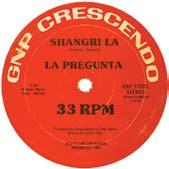



45 A-Team. Hector Gonzalez, a one-time student of Chuck Rainey, is the bassist and bandleader of Eastside Connection, and, much as I wish it were true, isn’t the same “Hec-tor” who gets goofed on in the Village Callers tune (although he did go on to became the owner of Rampart in the mid-’90s). Their second single, “Frisco Disco,” is, as the title makes clear, a straight-up disco tune, with all the brisk hi-hat patterns and perky string arrangements you might expect. Although I’m partial to the chatty airline stewardess (“…welcome to Disco Airlines, our captain tells us we will be flying very high but oxygen will not be necessary”), the real highlight comes when the band concentrates on a catchy, staccato three-note riff and the drummer clamps down on that pesky hi-hat. This perfect moment became ingrained in the consciousness of millions thanks to Slick Rick’s “Mona Lisa” and a generation of uprock-friendly dJs who made doubles mandatory. Original copies of this 12inch sport technicolor spin-art vinyl that has made “Frisco Disco” a frequent choice for decorative display on thrift store walls, much to the chagrin of hungry beat hunters who wish their prize wasn’t tacked to the wood paneling.
“Shangri La” La Pregunta (GNP Crescendo) 1978
The question is: who were La Pregunta? The faceless group, who sound like they should be gigging with Eastside Connection, had a handful of singles on Gn P Crescendo, an oddball label best known for its science-fiction soundtrack releases. Though La Pregunta’s furious disco-fied cover of Herbie Hancock’s “Chameleon” is probably the most compelling of their records (which include a version of Jobim’s “Insensatez” and the cringe-worthy “Girl from Uganda”), “Shangri La” deserves a special place in the b-boy hall of fame. The 12-inch has the same song on both sides, one playing at 33 RPM and the other at 45. The 45 RPM side has saxophone player George Nardello blowing top to bottom over the track, and while connoisseurs of organ-sax combos may wish to find Nardello’s 1971 LP (His Kind of Jazz , Roulette) for more, those with a fetish for breakbeats need look no farther than the 33 RPM surface of “Shangri-La,” on which Mr. Nardello is absent. If that drum break reminds you a little of John Davis’s “I Can’t Stop,” then you’re on
the right track, as Davis produced this cut, and may have been the man behind the band. Doug King, the co-producer here and the only other name listed on La Pregunta’s records, was (along with Davis) based in Philadelphia, and also worked on Philly act Direct Current’s underground disco nugget “Everybody Here Must Party” (TEC, 1979).
“Get Up and Dance” Freedom (TK Records) 1979
Henry Stone was born in the future cradle of hip-hop, on Jackson Avenue in the Bronx, but his name is inexorably linked to Miami, where he settled around 1950. TK Records was just one of his many musical ventures—he also controlled the Alston, Glades, Drive, and Dash labels, to name a few—but for collectors of 12-inch singles, TK is the only one that matters. Thanks to the early success of KC and the Sunshine Band’s “That’s the Way (I Like It),” Stone made the decision to issue all his labels’ extended disco mixes under the TK banner, no matter what sublabel they originally came out on. “When we sent out that TK jacket, it got played immediately,” he recalls. “That TK jacket was a valuable asset.”3
“Get Up and Dance” joins Herman Kelly’s “Dance to the Drummer’s Beat” as a TK sureshot for the b-boy crowd, and is nearly as omnipresent as Kelly’s record in early hip-hop dJ sets and recordings. The Crash Crew’s landmark “High Powered Rap” (“And you say New York City, to the sounds you hear so def to your ear…”) from 1981 is probably the first recording to use Freedom’s loping bass break, complete with party noise built in. As with many of the records shown here, there are multiple spots to double up the record other than the obvious one, and, accordingly, special mention must be made of the kazoo intro; surely the funkiest use of the plastic instrument this side of Skyy’s “No Music.”
“Dance to the Drummer Beat” Herman Kelly and Life (Electric Cat) 1978
Speaking of kazoo choruses, I think I’m going to retract my last statement. “Get Up” by Pookey Blow is hands down the craziest kazoo joint out there. This primal rap recording was recently reissued, but, for years, the only place to find it was on the Octopus bootlegs, which studious hip-hop historians will know were the direct predecessors of Ultimate
Breaks and Beats Young Pookey and his army of kazoos used Herman Kelly’s Miami-born monster as the basis of “Get Up”—an apt choice as the music exemplifies the imperative of the title. “Dance to the Drummer Beat” (yes, no “apostrophe s”) was originally issued as the single you see here; one of a handful of releases on the Electric Cat subsidiary of TK. It was re-released on TK proper in 1978, sporting a grammatically corrected title and a Jim Burgess remix that lost the cheering studio crowd and a lot of percussion. Burgess’s mix, while adding a nice bit of flanger to a cue-point crash cymbal, never seemed to usurp the popularity of the original, which featured a coda breakdown redux prefaced by the non sequitur basso profondo utterance of “please, somebody…” Miami’s electro and bass communities took the unfinished portion of the sentence to be “sample me,” as the co-opted 120 BPM beat has resonated from refitted trunks for years, first coming to attention on Ghetto Style’s (aka 2 Live Crew) “Trow the D” in 1986. The year before, Double Dee and Steinski used the Grandmaster Flash favorite (Burgess mix) as the basis for the third installment of their “Lessons” series; the Herman Kelly song already a longtime essential for New York City’s uprock crews. In the liner notes to his The History of Rap, Pookey’s namesake Kurtis Blow recalls that dJs Hollywood, Eddie Cheeba, and Starski also ran the record regularly. The pneumatic, uptempo bounce, with its bright guitar and keyboard stab, has far transcended its Miami roots and Bronx branches to become a well-worn platitude of urban music, but whatever happened to Herman Kelly? The legal paper trail of his song indicates hard times, as Kelly has repeatedly sued for copyright infringement, only to not appear at the hearings. The song is currently administered by Varry White Music, the punningly named company founded by Dust Brothers Matt Dike and Mike Ross.
“Scratchin’ ” Magic Disco Machine (Tower Records) 197?
In 1975 and ’76, Motown grabbed a seat on the rapidly accelerating disco bandwagon by releasing a set of compilations of some of the more boogie-flavored cuts from their vaults. The three numbered volumes of the DiscoTech series contained previously released tracks like Eddie Kendricks’s
“Keep on Truckin’ ” and Willie Hutch’s “Sure Know How to Love Your Man,” but the first, unnumbered LP was an instrumental affair credited to the Magic Disco Machine. For the most part, the album is comprised of vocal-less versions of songs that ended up on other Motown albums. “Let’s Go Back to Day One,” for example, is an alternate version of a song on the Mahogany soundtrack, and “Window Shopping” is a Jackson 5 scrap that squeaked on to the Joyful Jukebox Music LP —itself a collection of J5 outtakes. “Scratchin’ ” is no exception to the rule, originally appearing with vocals under the name “You Made Your Bed” on Reuben Howell’s self-titled 1973 LP Howell, a Southern soul singer of the Caucasian persuasion, recorded with Terry Woodford and Clayton Ivey, a pair of Muscle Shoals music moguls who had successfully lobbied Berry Gordy to become Motown’s Deep South connection. The 1973 vocal version of the song is swampy soul, sounding something like a less-stoned Dr. John. For DiscoTech, Howell’s vocals were omitted and the track sped up, transposing the key a whole step higher and raising the tempo ten beats per minute. This unlikely formula resulted in a groove that’s become a foundation element of hip-hop music, appearing often in sampled form (the horn hit that precedes the bass break is especially popular) but more notably as a crucial part of dance routines and battles. This Tower Records pressing, a notorious bootleg issued in the late ’70s, clocks in at over eight minutes by simply segueing the two-minute tune together four times. Hard-core disciples will want to seek out the German pressing of the Magic Disco Machine’s “Control Tower” (was that song title the inspiration for the knock-off label’s name?) for its B-side, the only legitimate 12-inch pressing of “Scratchin’.”
“Computer Game” Yellow Magic Orchestra (Horizon) 1979
Lazy music journalists have been known to refer to Y.M.O. as “the Japanese Kraftwerk.” A catchy phrase, no doubt, and not entirely without merit, but the cute description discounts much of the Tokyo-based group’s personality and reveals a plain unfamiliarity with their music. Would Kraftwerk ever have released a wacky (and funky) version of Archie Bell’s “Tighten Up,” complete with the procla-
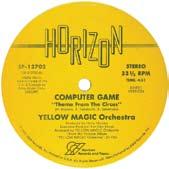


mation that “we are the funkiest dance band in Tokyo”? Y.M.O. were comedians (just look at the name) who could play very well. Or maybe they were musicians who were very funny. Their e P x∞ Multiplies (Alfa, 1980) was my introduction to the group. It’s a comedy record; bizarre Japanese/ English jokes are interspersed with goofy grooves, including the previously mentioned “Tighten Up” (which was released as a 12-inch). But while I was chuckling over this trifle, the band’s earlier single was blowing up dance circles from the Bronx to Houston Street. “Computer Game” was taken from the band’s first LP, distributed in the U.S. by the Horizon imprint, a risk-taking a &M sublabel in the spirit of their earlier CTI collaboration with Creed Taylor. The LP version begins in a montage of bloopy synth patches with an 8-bit video-game melody thrown in and white noise explosions resolving into drummer Yukihiro Takahashi’s steady kicksnare. On some pressings, this intro is named “Computer Game” and the song itself “Firecracker,” which is a more correct description, as it turns out, since the melody is lifted straight from a 1959 Martin Denny song of that name. The 12-inch version seen here jumps right into the groove with Takahashi’s drums a joy in the mix, alternating dry snare and cavern clap providing the all-important and unquantifiable headnod factor. On the subject of head nod, the curious should search out Y.M.O. keyboardist Ryuichi Sakamoto’s “Riot in Lagos” (Island, 1980) and note that drummer Takahashi was also behind the kit in the Sadistic Mika Band, a combo whose early ’70s output is the subject of much attention from drum- and groove-obsessed diggers.
“Mambo No. 5” Samba Soul (RCA) 1977
Masayoshi Takanaka, who played guitar in the Sadistic Mika Band, recorded a disco-fusion version of Pérez Prado’s “Mambo No. 5” in 1977. The same year, a group of studio musicians in Brazil had the same assignment. Samba Soul, as Rca labeled the unit, recorded an album’s worth of disco takes on popular Brazilian tunes like Jorge Ben’s “Chove Chuva” and “Mas Que Nada” (a medley on the flip of this single), Antonio Carlos and Jocafi’s “Voce Abousou,” and the mandatory run through Jobim’s “Garota de Ipanema.” “Mambo No. 5,” of course, is not Brazilian at all, but who’d
nitpick after hearing a heavy rhythm section like the one here? Certainly not the break-dancers and dJs who were magnetically drawn to this single. A consistent highlight throughout this song, and the entire full-length album, is the electric bassist, whose clean, round tone is hermetically locked with the drums. This mystery man, listed on the LP cover only as “Claudio,” is revealed on the group’s second LP (1979’s Once Again) to be Claudio Bertrami, noted jazz session man and brother of Azymuth keyboardist Jose Roberto Bertrami. Warren Schatz’s lean and limber remix on this 12-inch strips most of the vocal corn from the album version and doesn’t shy away from letting the bass and drums go on lengthy tangents. Not a surprise, really, when you consider Schatz and David Todd’s infamous drum-heavy mixes for the New York Community Choir.
(Shadybrook) 1977
After all this high-tempo disco fun, we need a nice come-down tune. Cue “Oh Honey.” A top ten R&B hit, this one will require no metaphors or convoluted phrasing describing drums or breaks. Although it was included on a latter-era Ultimate Breaks and Beats volume in 1989, “Oh Honey” is pure late-night quiet-storm material, and would quickly clear the dance floor of all but the smoochers. Delegation was a U.K.-based vocal trio that worked extensively with producer/songwriter Ken Gold, who had a hand in the success of Liverpool group the Real Thing, often noted as the first Black group to have a number-one hit in England. “Oh Honey” was first released on State Records in the U.K., but was quickly picked up by the fledgling Shadybrook for distribution in the U.S. This extended version includes an extra minute or two of music to prolong the pleasure, but eventually, like this column, it fades to silence. .
Notes
1. Geoffrey Himes, Baltimore City Paper October 3, 2001.
2. “Go-Go Music Brings a Fresh Beat to Summer Dancing” by Robert Palmer, New York Times June 9, 1985.
3. Interview with Bernard F. Lopez, discomusic.com.
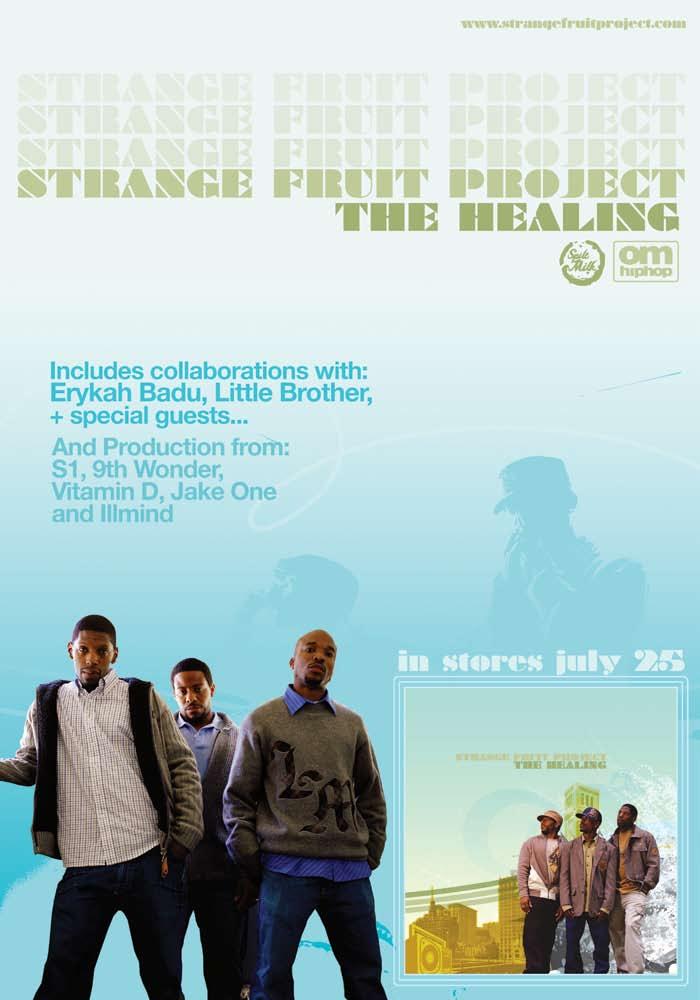
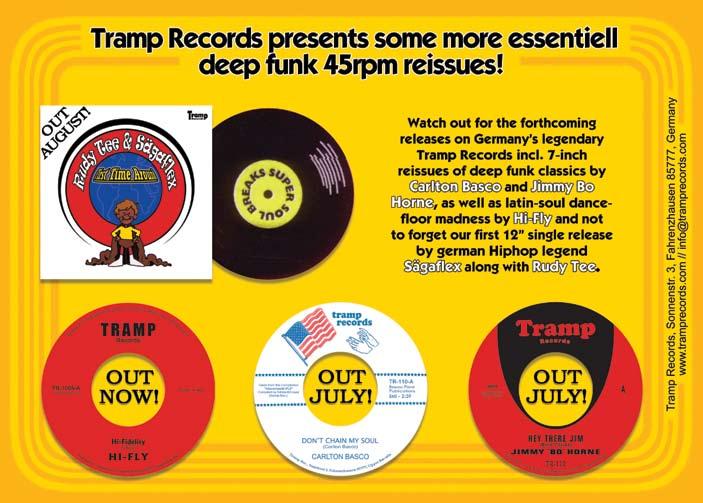
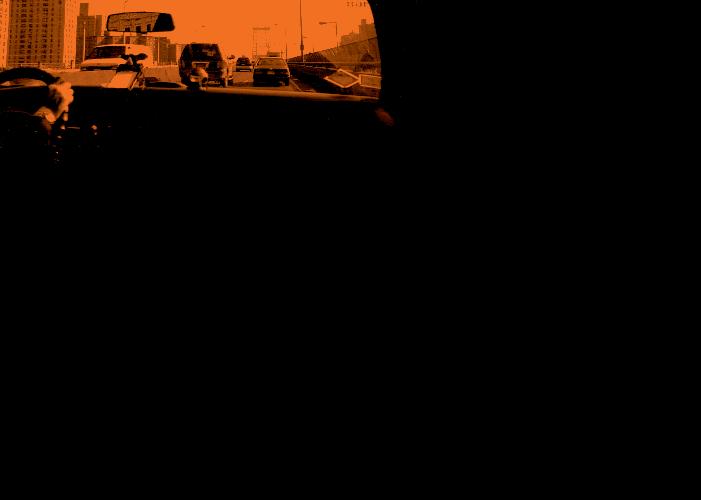




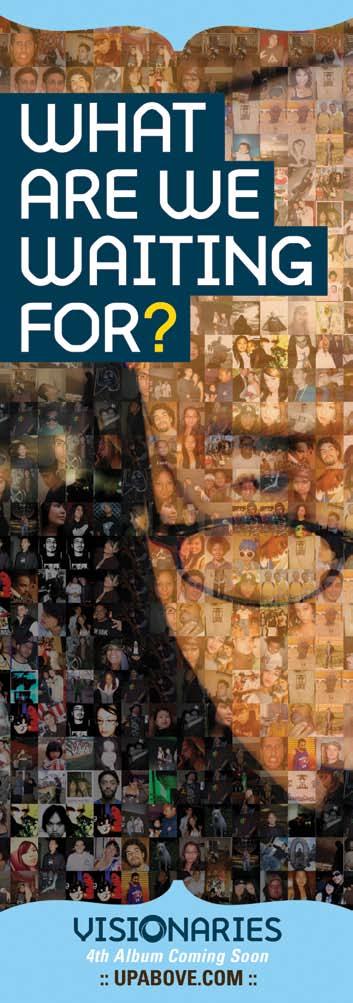
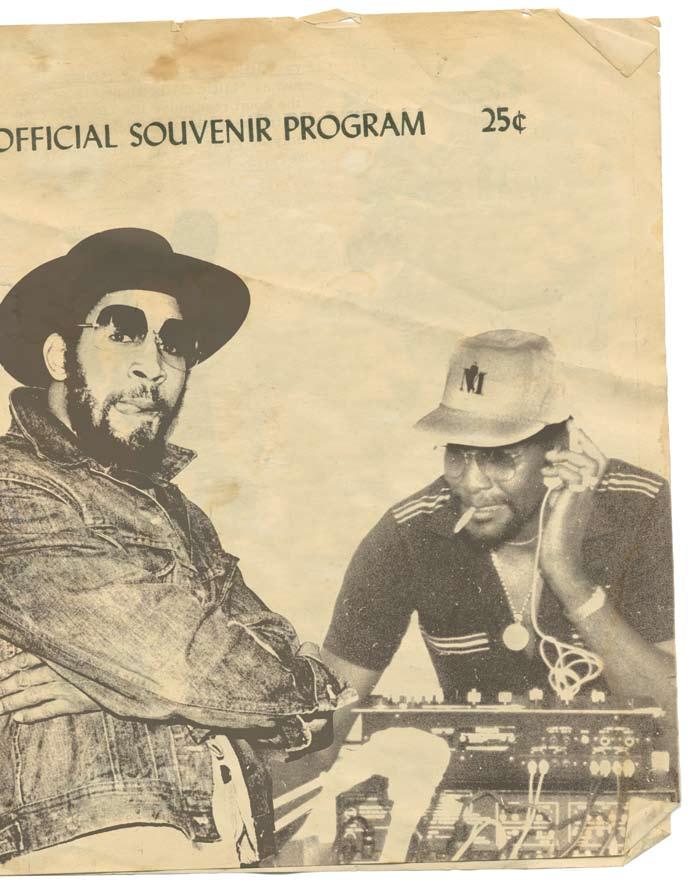
by Mark McCord // illustrations by James Blagden
Back in the good old days of 1977 when gas lines were long and unemployment was high, there were two schools of DJs competing for Black and Latino audiences in New York City: the Pete DJ Jones crowd and the devout followers of Kool DJ Herc. One group played the popular music of the day for party-going adult audiences in clubs in downtown Manhattan. The other played raw funk and breakbeats for a rapidly growing, fanatic—almost cultlike—following of teenagers in rec centers and parks. Both sides had their devotees. One night in the Bronx, the two masters of the separate tribes clashed in a dark and crowded club on Mount Eden and Jerome Avenue called the Executive Playhouse.
You can’t miss Pete DJ Jones at a party—or anywhere else for that matter. He is somewhere near seven feet tall and bespectacled. Today, at sixty-four years old, he is a retired school teacher from the Bronx, but if you listen to him speak, you immediately know he ain’t from New York—he’s from “down home,” as they say in Durham, North Carolina. But no matter where he was from, back in the ’70s, Pete Jones was the man.
“I played everywhere,” Mr. Jones says in a voice that sounds like your uncle or grandfather from somewhere down deep in the South, even though he’s been in New York for more than thirty years. “I played Smalls’ Paradise, Leviticus, Justine’s, Nell’s—everywhere.
“Looky here,” he says to me in the coolest Southern drawl before he asks me a question. “You ever heard of Charles Gallery?”
“Yes,” I said, as I tell him that I’m only thirty-six years old, and I had only heard about the place through stories from people who had been there. “Oh,” he says in response, “that was one hell of a club. Tell you what, you know that club, Wilt’s Smalls’ Paradise?”
“Yep,” I said, “that place is internationally known—but I never went there either.”
“That’s okay,” he says, still as cool as a North Carolina summer breeze. “When I played there, GQ and the Fatback Band opened for me.”
“No way—are you talking about ‘Rock Freak’ GQ?”
“One and the same,” he says. Jones suspects that I don’t

believe him, so he says, “Hey, we can call Rahiem right now and he’ll tell ya.” As much as I would love to speak with Rahiem LeBlanc, I pass. I believe him.
In his heyday, Pete DJ Jones was to adult African American partygoers what Kool Herc was to West Bronx prototype hip-hoppers; he was the be-all to end-all. He played jams all over the city for the number-one Black radio station at the time: WBL s It was at these jams where he blasted away the competition with his four Bose 901 speakers and two Macintosh 100s—which were very powerful amps. At certain venues, he’d position his Bose speakers facing toward the wall, so that when they played, the sound would deflect off of the wall and out to the crowd. The results were stunning to say the least. His system—complete with two beltdrive Technics sL -23s (which were far before 1200s) and a light and screen show, which he says he’d make by “Taking a white sheet and hanging it on the wall and aiming a projector that had slides in it from some of the clubs I played at”)—wowed audiences all over the city. He went head to head with the biggest names of that era: the Smith Brothers, Ron Plummer, Maboya, Grandmaster Flowers, and the Disco Twins. “Oh yeah,” he says, “I took them all on.”
On the Black club circuit in Manhattan at that time— much like the Bronx scene— dJs spun records and had guys rap on the mic. “I ran a club called Superstar 33. Ask anyone and they will tell you: That was the first place that Kurtis Blow got on the mic at,” says a gruff-voiced gentlemen who, back then, called himself JT Hollywood—not to be confused with DJ Hollywood, whom JT remembers as “An arrogant ass who always wanted shit to go his way.”

“I wouldn’t call what we did rappin’—I used to say some ol’ slick and sophisticated shit on the mic,” says a proud JT. “We spun breaks back then too,” Pete Jones says. “I played ‘Do It Any Way You Wanna,’ ‘Scorpio,’ ‘Bongo Rock,’ B.T. Express, Crown Heights Affair, Kool and the Gang; we played all of that stuff—and we’d keep the break going too. I played it all, disco, it didn’t matter. There was no hip-hop, per se, back then, except for the parts we made up by spinning it over and over again.”
There have been so many stories written about hip-hop’s early days that have not reported on the guys that spun in Manhattan and Brooklyn in the early and mid-’70s, that many crucial dJs of that time feel left out.
“Kool Herc and guys like that didn’t have a big reputation back then,” explains Jones. “They were in the Bronx—we, meaning guys like myself and Flowers—we played everywhere, so we were known. Their crowd was anywhere between four to seventy. Mine was eighteen to twenty-two. They played in parks—where anybody could go; no matter how old you are, you could go to a park. We played in clubs.”
With a sense of urgency, Mr. Jones says, “I have to clear something up: Many people think that we played disco—that’s not true. There were two things happening in Black music at that time: There was the ‘Hustle’-type music
being played—which was stuff like Van McCoy’s ‘Do the Hustle.’ I couldn’t stand that record. And then there were the funky-type records that mixed the blues and jazz with Latin percussion that would later be called funk. Well, hiphop emerged from that.”
He places special emphasis on the word “emerged.” He says that because “If you know anything about the history of music, you know, no one person created anything; it ‘emerges’ from different things.”
The s econd MasT er: The c ulT l eader
There must have been a height requirement for dJs in the ’70s, because like Pete DJ Jones, Kool DJ Herc is a giant among men. In fact, with his gargantuan-sized sound system and six-foot-five, two-hundred-plus-pound frame, the man is probably the closest thing hip-hop has ever seen to the biblical Goliath. Today, some thirty years since his first party in the West Bronx, Kool Herc is still larger than life. His long reddish-brown dreads hang on his shoulders giving him a regal look—sort of like a lion. His hands—which are big enough to crush soda cans and walnuts, reveal scarred knuckles, which are evidence of a

rough life. During our conversation, Kool Herc, whose street-hardened voice peppered with the speech patterns of his homeland Jamaica and his adopted city of New York, made several references to “lock up,” “the precinct,” and the “bullpen,” all in a manner that showed that he had more than a passing familiarity with those types of situations.
As the tale goes, Kool Herc planted the seeds for hiphop in 1973 in the West Bronx. Along with his friends Timmy Tim and Coke La Rock, and with the backing of his family—in particular his sister Cindy—he threw parties that are the food of urban legend. In the 1984 BBc documentary Beat This! A Hip Hop History, an eight-millimeter movie is shown—it is perhaps the only piece of physical evidence of those historic parties. In the film, teenagers of anywhere between seventeen to twenty years old are grooving to the sounds of James Brown’s “Give It Up or Turn It Loose.” Young men wearing sunglasses and sporting fisherman hats with doo rags underneath them are seen dancing with excited young women, all while crowded into the rec room of hip-hop’s birthplace: 1520 Sedgwick Ave.
As the camera pans to the right, the large hulking figure of Kool Herc takes the forefront. Sporting dark sunglasses and wearing a large medallion around his neck, Kool Herc is decked out in an A. J. Lester suit. He isn’t just an impos-
ing figure over his set; he looms large over his audience as well. His sound system—a monstrous assemblage of technology—was large and intimidating too; so awesome was it that his speakers were dubbed the Herculords. When Kool Herc played his gargantuan-sized sound system, the ground shook. And so did his competition.
Legend has it that with his twin-tower Shure columns and his powerful Macintosh amplifiers, he is said to have drowned the mighty Afrika Bambaataa at a sound clash. “Bambaataa,” Herc said with the volume of his Echoplex turned up and in his cool Jamaica-meets-the-Bronx voice, “Turn your system down…”
But the mighty Zulu chief was unbowed.
So once again Herc spoke into the mic: “Ahem, Bambaataa…turn your system down!” And with that, Herc turned the volume of the Echoplex up, and brought in the notorious breakbeat classic “The Mexican,” all the while drowning Bambaataa in a wall of reverberated bass and funk drumming. According to Disco Bee, “That was typical of Herc—if you went over your time, hell yeah, he’d drown you out.”
In his arsenal, Herc had the mighty twin speakers dubbed the Herculords and his crew, a mixture of high school friends and neighborhood kids called the Hercu-


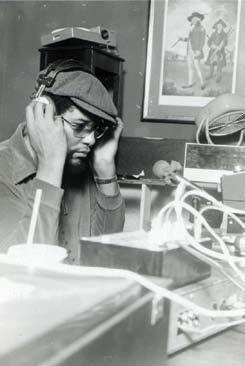
loids. The squad consisted of the Imperial Jay Cee, LaBrew, Sweet and Sour, Clark Kent, Timmy Tim, Pebblee Poo, Coke La Rock, Eldorado Mike, and the Nigger Twins. According to Herc, “Coke and Tim were friends of mine; it’s like I got the Chevy, and I’m driving. You my man, so you roll too. So when Coke wanted to play, he play—you know what I mean?”
Although the core crew was Herc, Timmy Tim, and Coke La Rock, many of the people that frequented these parties could also be dubbed Herculoids as well. Even though they weren’t members of the crew, many of these people would become disciples of a new musical gospel. They would help spread the musical message and further build upon the foundation that Herc had laid down. Much like the early Christians, who endured all manner of harassment, the early followers of Kool Herc would lead what would later be called hip-hop, through the parks and rec centers of New York and then onto the international stage. These devotees would be active figures in this new genre from the late ’70s into the mid-’80s.
“Man, Herc was a monster,” remembers DJ AJ Scratch, who Kurtis Blow paid homage to on the classic record “AJ Scratch.” “I wasn’t even on back then—I was trying to get in the game back then,” reminisces AJ. “I was a nobody. I was like a regular dude, you know what I’m saying? I was a Kool Herc follower—I was a loyal follower. I would’ve followed Kool Herc to the edge of the earth.”
“Yo, Herc was unstoppable back then,” says DJ EZ Mike. He and Disco Bee were Grandmaster Flash’s left- and righthand men; they helped Flash develop his quick-mix theories and rock shows back in the day. “Back then, no one could touch Herc and his system—it was just that powerful.”
Disco Bee concurs: “The first time I heard Kool Herc, I used to always hear his music, I used to live in these apartments and I would hear this loud-ass music. We used to go to the park and we would hear his shit from three or four blocks away! We would hear this sound coming out of the park. You’d be like, ‘What is that sound?’ You’d hear [imitates the sound of the drums] shoooop, shoooop, donk, donk, shooooop You wouldn’t hear any bass until you started getting closer. But you could hear his music from very far. And you’d know that Kool Herc was in the park. We used to go to Grant Ave. where Kool Herc would be giving block parties. We’d hear him while we’re coming up the street—we’re coming up from the 9 and we’d be coming up the steps and you’d hear his music on Grant Ave. It used to be crazy.”
“Herc had the recognition; he was the big name in the Bronx back then,” explains AJ. “Back then, the guys with the big names were Kool D, Disco King Mario, Smokey and the Smoke-a-trons, Pete DJ Jones, Grandmaster Flowers, and Kool Herc. Not even Bambaataa had a big name at that time, you know what I’m sayin?”
According to Herc’s own account, he was the man back then. “Hands down, the ’70s were mine,” he says. “Timmy Tim is the one that bought me ‘Bongo Rock,’ and I made it more popular. He bought me that album, and after I heard that album, I said to Coke, ‘Listen to this shit here, man!’ We used that record, and that was what kicked off my format called the merry-go-round.”
“Pete DJ Jones was basically a whole other level,” says AJ. “He played disco music, and Herc played b-boy music, you know what I’m sayin?”
“When you say he played ‘disco’ music, what do you mean?” I ask him. “Give me an example of a record that

Pete Jones might play.”
“Okay,” AJ clarifies, “he played things like [MFSB’s] ‘Love Is the Message’ and [Cheryl Lynn’s] ‘Got to Be Real’—stuff like that. He played stuff with that disco pop to it. He didn’t play original breakbeats like what Kool Herc was on. He played like a lot of radio stuff. That’s what Pete DJ Jones did—that’s what made him good. I mean, he had a sound system, but he played a lot of radio stuff. Kool Herc played the hard-core shit you ain’t ever hear: ‘Yellow Sunshine,’ ‘Bongo Rock,’ and Babe Ruth—a whole variety of stuff. James Brown ‘Sex Machine’—you know the version with the ‘Clap your hands, stomp your feet’?”
Before hip-hop was a multibillion-dollar-a-year industry, it was a subculture. All of the elements were coming into place, sort of being cooked like a stew, in a melting pot: a spoonful of funk, a fistful of bass, a heap of raw energy— all cut up on a platter with a dash of angel dust.
Deep in the heart of the Bronx, located on Mt. Eden and Jerome, was one of the first indoor hip-hop spots. The owners of the venue probably gave it other names over the years, but the two most popular ones were the Sparkle and
the Executive Playhouse.
“It was real dark,” remembers AJ. “It wasn’t really, like, put together. It had a little stage, [and] it had, like, a little miniature light show, you know what I’m sayin’. It was, like, a low-budget venue. Right around the corner from the Executive Playhouse was the Parkside Plaza—that was a disco. The Executive Playhouse was something that maybe the guys went into the Parkside Plaza and got the idea to open up a club. So they went right around the corner on Mt. Eden and Jerome and opened up the Executive Playhouse—maybe they had the idea, but it wasn’t comparable with the Parkside Plaza. You go in [the Executive Playhouse] and would be looking around, and you probably wouldn’t wanna go to the bathroom, because of the lighting, you know what I’m saying? There were lights, but it was dim. That was hip-hop back then—everything was dimmed out.”
The drug of choice back then was weed sprinkled with P c P —the “dust heads” and the stick-up kids were all over the place. “That was the vibe back then,” declares AJ, “and you wanted to be a part of that. The lights, the breaks, the dancing, them talking on the mic with the echo—that was hip-hop back then. You would go through anything just to hear Kool Herc’s performance. Kool Herc was special back

then. It didn’t matter what the venue was like; it was what he displayed the night of the show. He did his thing.”
By day, Pete Jones was an English teacher in the Bronx. However, at night, Pete taught another set of students a whole other set of skills.
“I had several young guys that came around me trying to learn the dJ business,” explains Mr. Jones. “Magic Mike, Herby Herb, and a lot of others, but none of them could figure out how to hook my system up. Except for one guy: Lovebug Starski. He went everywhere with me.”
Lovebug Starski was one of the few dJs of that time that could play for either a hard-core hip-hop crowd with an underground dJ like Kool DJ AJ, or for the adult audiences downtown with Pete Jones, or in Harlem with DJ Hollywood. His original mentor was his stepfather Thunderbird Johnny, a man who ran after-hours spots uptown in Harlem. Starski was one of the few cats that could rock the mic and the wheels of steel at the same time.
But Pete had another protégé whose talent was immeasurable. In fact, he would forever change the skill set necessary to be a dJ. He was one part scientist, another part
electronics wizard, who possessed a sense of timing that was not of this world.
“One of the baddest dJs I ever saw was Grandmaster Flowers,” Jones says, “He could blend. He was a mixer. The things he did with records were incredible. He could hold a blend like you wouldn’t believe. He was the baddest thing I had ever saw.” That was until he saw a young man that had grown up in the Hoe Avenue section of the South Bronx.
He was named Joseph at birth, called Joey in the neighborhood, but would later gain fame under another name, a name that was partly inspired by a comic book hero. EZ Mike, his best friend since childhood, remembers it like this: “He got the name Flash because he was fast at everything he did. When we played basketball as kids, none of us could keep up with him. No matter what we did, he was always faster than the rest of us. He could outrun us all.” Later, a local guy named Joe Kidd gave him the title of Grandmaster.
Before he became the Grandmaster Flash of legend, he was a student of Pete DJ Jones. Friends described him as being intense: “When that guy caught the dJ bug real bad around 1973, we didn’t know what was happening,” says EZ Mike. “He had a messenger job,” Mike continues. “He would get paid and by the next day, he would be broke.

We’d be like, ‘Yo, where’s all of your money?’ He spent it all on records.”
From 1973 to 1977, Flash and his crew—which first consisted of Mean Gene, Disco Bee, and EZ Mike and then later Cowboy, Melle Mel, and Creole—were struggling to gain a foothold in the Bronx scene. They could not get around Kool Herc. He was a giant.
“We’d try and get on Herc’s system,” Mike recalls, “but Herc wasn’t going for it. Flash would ask, ‘Could I get on?’ and Herc would be like, ‘Not.’ You see, back then,” Mike explains, “nobody wanted Flash to touch their system. They’d be like, ‘Hell no, you be messing up needles and records and shit.’ ” Both Disco Bee and EZ Mike agree that Herc used to publicly embarrass Flash on the mic by talking “really greasy” about him.
There have been many stories told about Flash’s early sound system. Both EZ Mike and Disco Bee confirm that
wood—so that the speakers wouldn’t look like they were wood. We didn’t have any bass—there was no bass whatsoever. Just mids and highs,” Mike remembers.
The only person willing to give Flash a break was Pete Jones.
“The first time I met Pete was when I went with Flash to [a club Jones owned called] Pete’s Lounge,” Mike recalls. “Like I said, Flash had gotten real serious about this dJ stuff and he would hook up with Pete and learn a lot of shit from him.”
It must’ve been on one of these meetings at Pete’s Lounge that Flash and Pete plotted against Kool Herc.
a s ound c lash on T he WesT s ide o F Jero M e ave.
“When I battled Pete,” says Herc, “it wasn’t even a battle. It was telling my audience, ‘What you think you gettin’?’
although Flash was an electronic wizard (EZ Mike says, “Flash could build a TV from scratch”), his first system was the technological equivalent of a ’75 hoopty.
Disco Bee recalls that “Flash built his own cueing system. Anything he could think of, Flash would try to invent it,” Disco Bee laughs. “His system looked so raggedy— ahh man, we had some raggedy junk. We were soldering stuff together right before we’d get ready to play, because he just built this thing, and he didn’t finish it. We used to get to a spot early and set up everything, and he would be soldering stuff trying to get it to work. Man, we had some raggedy stuff.”
“Ahh man this is gonna make you laugh,” EZ Mike says. “Flash had these two speakers that he built from scratch. They were about six and a half feet tall, they were wood; he had three speakers in each one, and on the top he put a piece of plastic with Christmas lights on the inside of it, so that when he dJed, the top of the speaker would be lighting up. Then he took white plastic and wrapped it around the
And you tried disrespectin’ and all that; let’s see what the other side of the spectrum sound like by a guy by the name of Pete DJ Jones.”
Jones remembers it a little differently: “I guess he was somehow down with the club; he was like the resident dJ [at the Executive Playhouse], and they wanted to get a big crowd, so I guess it was his idea to battle me.”
It was inevitable that the two masters would clash.
The way Herc describes Pete’s audience is as “the bourgeoisie, the ones that graduated from the little house parties: You grown now, you out your momma’s house. You puttin’ on Pierre Cardin now. You wearing Halston. You getting’ into the Jordache and Sassoon era. You down there where Frankie Crocker hangs out at, places like Nell Gwynn’s, or the big spot, whaddaya call it? Oh yeah, Leviticus—you down there. ”
“I’d say it was a week before the battle, when I was out one night, and I ran into the twins,” Pete remembers, referring to the Nigger Twins, a couple of dancers from Herc’s
crew. “They must’ve had some kind of falling out with Herc, ’cause they were real mad at him. They said, ‘I’ll tell you all of the records he’s gonna play.’ And [they] wrote all of them out for me, right there on the street. They said, ‘He’s gonna play them in this order.’ ”
The night of the battle, Pete had a few cards up his sleeve, so he went on first. “I broke out all of the records that the twins told me about, and I played them in the order that he would play them in. The next thing I knew, I saw him walking around talking on the mic, saying, ‘It sounds like I’m listening to a tape of myself.’ He sounded real frustrated. I figured if I went first and played what he was gonna play, it would look like to the crowd he wasn’t doing anything different. That was the edge I had over him that night.”
But Herc’s followers were a devoted bunch. After Pete played, Herc went on and he dug deep into his playlist for the rarest of records.
“That was Kool Herc’s venue,” remembers AJ. “The Executive Playhouse was a place that he played at constantly, so maybe they was using Pete to get a little extra audience. But Pete had notoriety. Kool Herc was big back then; he was probably number one in the Bronx. No matter if he took his playlist or not, that doesn’t matter.”
AJ—a man who is well into his forties—is still a devout practitioner of the “keep it real” mentality. “Nah, Pete didn’t get the edge over Kool Herc [like that],” AJ says. “You know why I think he [might have had] the edge over Kool Herc?” he asks me. “To be honest with you—this is only my opinion—Pete DJ Jones was a [good] dJ, but he was mad lazy, yo. Pete DJ Jones used to hire dudes to come and play for him. The Executive Playhouse was not Pete’s kind of crowd. It wasn’t [so much] that he was a lazy dude, it just wasn’t his crowd. It wasn’t Nell Gwynn’s or Nemo’s, it wasn’t downtown, so he wasn’t comfortable, so he put on the people that could rock that kind of crowd.”
After Herc played, it was Pete’s turn again. This time he played his R&B and funk records—but the crowd wasn’t feeling it. So he pulled out a couple of ringers—in the form of his protégés, Lovebug Starski and Grandmaster Flash.
“Flash tore Herc’s ass up that night,” remembers EZ Mike. AJ adds, “When it came crunch time to see what was what, Pete put Grandmaster Flash on. That was the first time I ever saw Flash play. The people were amazed. You see, Flash was a dJ; he was doing all that quick-mixing and spinning around and stuff—the Bronx lost its mind that night, because we had never seen anything like that before.”
To the crowd of hundreds, it looked like Pete Jones was winning. No one knew who Grandmaster Flash was that night. He was an unknown dJ playing on the set of one of the most popular jocks of that time. People yelled and screamed, because it was the first time that they had seen a dJ with a magician’s flair for showmanship. No one had ever played like that before. Kool Herc would haphazardly drop the needle on the record—sometimes the break was there, often times it wasn’t. Pete Jones could mix his ass off, but he wasn’t entertaining to watch. Both men had huge sound systems, but they weren’t charismatic spinners. Flash was. On this night, the crowd at the Executive Playhouse was
entranced with Flash’s spinning techniques, which were revolutionary at this time. He had perfected a new technique called the backspin.
EZ Mike remembers the first time Flash did the backspin: “He spent the night at my house. He woke up out of his sleep and turned the equipment on—it was like two or three o’clock in the morning. The first record he did it with was Karen Young’s ‘Hotshot,’ and he backspun it a bunch of times, and then turned to me and said, ‘Yo, remember that and remind me about it when I wake up.’ And he jumped back in his bed. When he woke up the next morning, he did it again.”
One could only imagine Flash cutting “Hotshot” to pieces that night at the Executive Playhouse in front of hundreds of stunned spectators: “Hot shot, hot shot, hot…hot shot hot shot hot…hot shot. Hot shot. Hot shot…hot...hot…hot .”
“You know what? At that battle, Flash showed the Bronx that he was for real,” says AJ. By Herc’s own admission, by 1977, he was on the decline. Whether or not it had anything to do with him getting stabbed at the Executive Playhouse is open to speculation. What is a fact, though, is that after this battle between two of the biggest stars of the era, the name Grandmaster Flash was no longer relegated to a small section of the Bronx. His fame spread like wildfire throughout the city. According to more than just one person interviewed for this story, the long-term effects of the battle on Kool Herc were not good. In the weeks following the battle, Herc’s audience got smaller and smaller. They were leaving the Executive Playhouse for another hot spot: The Dixie, which was the home of Grandmaster Flash and the Three MCs.
Soon the Dixie would become so crowded that by four a.M when the house was still packed, the only way they could get people out of there was by playing Jackie Wilson’s “Work Out.” But the fly girls and b-boys would still want to party. “We’d put that record on,” says Disco Bee, “and you’d look out on the floor and folks would be doing the twist.”
The battle between Kool Herc and Pete Jones was also a pivotal moment in time, because previous to it, battles were all about equipment, records, and who moved the crowd. Grandmaster Flash added the next dimension: showmanship. This was at a time when the sound system was king. Breakout and Baron had Sasquatch, DJ Divine had the Infinity Machine, Kool Herc had the Herculords, and Grandmaster Flash would later have a system called the Gladiator. Today’s dJs know nothing of sound systems; even fewer know how to hook one up. .
Ma RK McCoR d, aka Mark Skillz, wrote about the Bronx’s Disco Fever in Issue 14.
Quotes from Kool Herc taken from the author’s 2005 radio interview on Breakdown FM.
Thanks to Jeff Chang, Davey D, Christie Z Pabon, Cindy Campbell, Kool Herc, Kool DJ AJ, EZ Mike, KC the Prince of Soul, Pete Jones, Disco Bee, and to Elemental magazine for providing the Pete DJ Jones images.










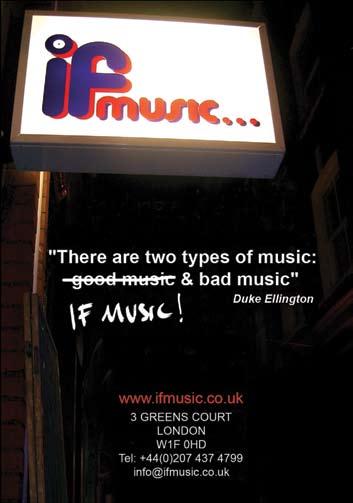

by Ronnie Reese // photos by B+
James DeWitt Yancey. Deep down, he may have been thinking, “I’m killing it with this beat thing,” but that sentiment would never be made public. During conversations with those closest to him, humility is a common theme, as are consistency, reinvention, and creative thought. At the time of his passing, might Jay Dee, aka J Dilla, have been hip-hop’s best producer since the culture’s inception in the late 1970s? Probably, especially when you consider the still-evolving nature of the position. Production didn’t officially step into the foreground until Dr. Dre passed us The Chronic, some twenty-five years after rap music began to matter to people other than its creators. Shortly thereafter, Jay became both the answer and the truth. To understand his approach to music is to understand breathing, to understand life, which means you’ll never get it. Nothing else mattered. Junk food, titty bars, and an unshrinking intent to stay fly all came close, but all fell short of his tireless composition at a near-constant rate. Jay Dee was the rose that grew from concrete—that one tree growing in Detroit’s Conant Gardens district on the city’s lower east side. He was the best because he embodied the aforementioned themes at times when other influential producers did not. This is the story of his life and work.
M aUR een “M a DUK es” yanC ey: He was always a night person. Since he was a couple of months old, he wouldn’t go to sleep unless he heard jazz. Even though he couldn’t talk yet, he would gurgle, and he would gurgle in perfect pitch. No matter where my husband went on the notes or scales, he would be in perfect pitch harmony. He was born with that. He started playing records at two years old he’d spin records in Harmony Park. My husband would get off of work and take James to the park, and he’d have his arms full of 45s his little arms, you know, fit right through the holes. [laughs] He’d take his 45s and his record player to the park and spin records adult records, not kiddie records. My husband would take him record shopping so he could play all the new releases.
James Brown was always a big part of it. By the second beat of any James Brown record, he would tear to the side of the playpen and stand up and dance profusely until it ended. Then he remembered that he couldn’t walk or stand up yet, and he’d ease down and go back to what he was doing. He didn’t think about the fact that he couldn’t stand up or walk, not when James Brown was playing. [laughs] He had no fear.
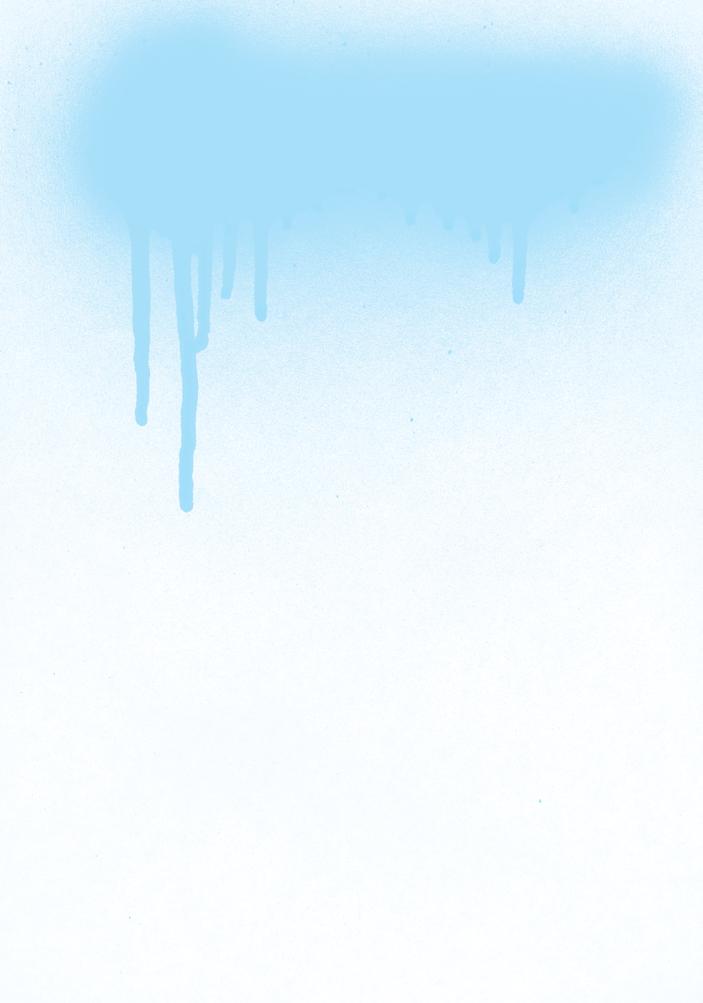
FR an K: The first live show we ever did was at the neighborhood church. Dank had a job at the time, and we were waiting for him to get off work. He got off and ran from this grocery store to the church. I’m dJing, Dilla’s rhyming, Dank brought the homeboy Therm out.
Dan K: I brought the homeboy Therm to dance with us. We both worked at the grocery store. We ran to the church. I had a Pistons hoodie on, the old school [one] with the logo on the back and the front pocket. Dilla had a Chicago Bulls one. I took it and gave it to Therm and we danced at the church. Frank cut it up, Dilla rhymed it was phenomenal. Him and Frank used to dJ all our parties, all the school parties. He dJed like crazy. Before a beat tape or anything, the dJing and the pause and record thing came into play. Then he decided he was going to rhyme and be Silk. He was MC Silk before he was Jay Dee or Dilla.
B aaTI n: When I first met James, he was going by the name MC Silk. I was Scandalous T Eazy T I was doing the gangster rap. He was already dJing parties at school, so he had that, plus his stutter-step flow. He had all three dJing, Mcing, and beats. I remember he would come pick us up in the Escort, and me and T3 and his brother, we’d
MAUREEN “MA DUKES” YANCEY: Mother.
FRANK, DANK: Members of Frank N Dank and childhood friends; featured on Welcome 2 Detroit; Jay Dee production featured on numerous Frank N Dank projects.
BAATIN: Original member of Slum Village; left the group after 2002’s Trinity QUE. D: First cousin; Jay Dee production featured on 2000’s Quite Delicious EP and other projects. T3: Original member of Slum Village.
AMP FIDDLER: Musician/producer/composer whose home studio (“Camp Amp”) was the site of early training and production.
Q-TIP: A Tribe Called Quest; member of production team, the Ummah, with Jay Dee and Ali Shaheed Muhammad; introduced Jay and his music to many in hip-hop and R&B, including Busta Rhymes, Common, D’Angelo, and the Pharcyde.
DJ DEZ: Slum Village touring DJ; trained at “Camp Amp.”
R. J. RICE: CEO of Barak Records and owner of R. J. Rice Studios; founding member of Detroit R&B group, RJ’s Latest Arrival; represented Jay Dee in the early 1990s along with partner, former Detroit Piston John Salley. YOUNG RJ: Son of R. J. Rice and member of Barak Records production team BR Gunna; studied under Jay Dee.
ELZHI: Member of Slum Village; featured on 2001’s Welcome 2 Detroit
WAAJEED: Detroit native and member of the Platinum Pied Pipers; was the catalyst for the release of Fantastic Vol. 1; received first MPC from Jay Dee, which was allegedly broken by the Roots’ Ahmir “Questlove” Thompson and left in Jay’s basement.
IMANI: The Pharcyde; Jay Dee production featured on 1995’s Labcabincalifornia
AHMIR “QUESTLOVE” THOMPSON: The Roots; member of production team, the Soulquarians, with Jay Dee, D’Angelo, and James Poyser; arguably Jay’s #1 fan among his peers.
DAVE, POSDNUOS: De La Soul; Jay Dee production and contributions featured on every album from 1996’s Stakes Is High to 2004’s The Grind Date
JAZZY JEFF: DJ/producer; added scratches to Slum Village’s “I Don’t Know” on Fantastic Vol. 2; Jay Dee and Slum Village featured on his The Magnificent EP
J. ROCC: Member of the Beat Junkies and Stones Throw artist; Jay Dee’s touring DJ.
JAKE ONE: West Coast producer and one of the first in the region with Slum Village’s Fantastic Vol. 1 cassette.
HOUSE SHOES: Detroit DJ/producer and longtime friend.
HI-TEK: Cincinnati producer and member of Reflection Eternal with MC Talib Kweli; contributed to Jay Dee’s unreleased MCA project.
COMMON: MC, Los Angeles roommate, and longtime friend; Jay Dee production featured on every album from 2000’s Like Water for Chocolate to 2005’s Be
KARRIEM RIGGINS: Native Detroit musician/producer and longtime friend.
DIAMOND D: Original member of Diggin’ in the Crates crew; contributed to Jay Dee’s unreleased MCA project.
BUSTA RHYMES: MC and longtime friend; Jay Dee production featured on an unprecedented six albums, from 1996’s The Coming to 2006’s The Big Bang
TODD FAIRALL: First Engineer at Studio A in Dearborn, Michigan; worked on Welcome 2 Detroit and various Slum Village, Roots, Common, and Busta Rhymes projects, and remixes.
JUST BLAZE: Producer for Jay-Z, Kanye West, Cam’ron, Ghostface Killah, and many others; approached Jay Dee with big-budget projects, which Jay passed on in deference to artists he was currently working with at the time.
PETER ADARKWAH: Founder of Barely Breaking Even (BBE) Records; released Jay Dee’s solo debut, Welcome 2 Detroit, in 2001; will release BBE follow-up, The Shining, in the summer of 2005.
JAMES POYSER: Musician/producer/composer; member of production team, the Soulquarians, with Jay Dee, D’Angelo, and Ahmir “Questlove” Thompson.
PEANUT BUTTER WOLF: Founder of Stones Throw Records; released Jay Dee and Madlib collaboration, Jaylib’s Champion Sound, in 2003, and Jay’s solo LP, Donuts, in 2005.
DAVE NEW YORK: Industry associate of artists such as Common, Talib Kweli, and the Roots’ Black Thought and Ahmir “Questlove” Thompson; introduced to Jay Dee by Common, becoming a close West Coast friend and confidant.
PROOF: Member of D-12 and longtime friend; Jay Dee production featured on early 5 Elementz releases; passed away on April 11, 2006 at the age of 32.
PHAT KAT: Detroit MC and longtime friend; featured on 2001’s Welcome 2 Detroit; Jay Dee production featured on the classic “Dedication to the Suckers” 12-inch and upcoming full-length, Carte Blanche

roll around listening to beats he made with the pause and record on two tape decks. He was just a genius at that, even back then. The beats sounded so perfect.
QU e . D: When he first started getting serious with the beats, he took this tape recorder apart and rigged it some way so he could extend certain parts of the tape to sample. That shit, to me, showed that he was more than a beat maker he was like a mad scientist. He was crazy with it, taking tracks off of Nintendo games and making beats out of them.
T3: I heard about him and he heard about me and Baatin me and Baatin already had a group together. I
set up a battle at my grandma’s house and invited all these dJs, Mc s, and producers over. We just had a big rap battle, although it wasn’t really a battle. It was more like a talent show in my grandma’s basement.
From there, we decided to form a group because we really liked each other’s styles, but our first group, it wasn’t Slum Village. There were a bunch of us me, Waajeed, Que. D, Baatin, and Jay Dilla. It was called Senepod “dopenes(s)” spelled backwards. We were doing high school stuff rapping in the lunchroom and vibing. Just basically keeping it moving.
“Deep in the black of your mind lies the funky of another kind—it’s the rhythm, the rhythm God give ’em.”
M a DUK es: James played piano, guitar, drums, cello he was an excellent cello player. He did read music, so it was just a little easier for him. He started out with piano and cello, as far as formal training, in middle school and high school. I started him out early with piano lessons, but my children have a way of—when I initiate something, they let it go. I’m getting too excited about it, so they’re not going to be excited about it at all. When I left him alone, he began to pick up the instruments, but he really strengthened his abilities going to Amp’s.
a MP FIDDle R: Jay was respectful and quiet. He was basically here to learn, and that’s what it was all about. He would sometimes mess with my keyboards, and the bass guitar was down there, too. For the most part, I think he was most concerned with learning the machine and getting that shit under his belt. When he first started making beats, he was just looping, but he had a particular way of doing it. Most people would start on the one of the kick, but he would start on the snare or the hi-hat or some other shit and just fit it into the equation, like a mathematician.
Q-TIP: He would write out physics equations for me, just to bug out, like, “Yo, here, here,” with no explanation.1 I’m like, “Yo, what’s this?” It would be some little equation, [laughs] and he would just start laughing and eating Red Vines, like, “That shit is crazy, right?” Then he’d get back to the beats. It was funny—he was a funny dude.”
a MP FIDDle R: I worked with a lot of people coming by and trying to learn the MP c, trying to learn how to produce, but nobody came like he did. They could do basic shit, but they couldn’t do anything exceptional. He had an exceptional ear for putting rhythms together.
DJ De Z: A friend of mine named Cricket brought me to Amp Fiddler’s house, and that’s where I met Jay Dee. At Amp’s house, he had a drum set there, he had the Rhodes there, and he had the MP c. Slum recorded a lot of their first, real material at Amp’s. At that point, Baatin wasn’t in the group—it was just T3 and Jay Dee.
a MP FIDDle R: Him and T3 were really tight they were the basis of Slum Village. It was basically just the two of them. Before they met Tip, they were fucking with John Salley and R. J. Rice.
R. J. RIC e: John Salley and I had a label, and we signed Jay Dee in 1992. When John Salley and I split up, I moved the studio into my home, and Jay Dee started coming to the house to work on tracks. I suggested he try the sP1200 to get a feel for it. I thought the 1200 would serve his purpose at that time. I gave him that and the Akai s950, and that was when he started working a lot with filtering.
yoU nG RJ: Jay Dee taught me how to program. When I first met him, I was little he was coming to the house, working with my pops. My pops would give Jay Dee the key, and after he left the studio, Jay Dee, T3, and Baatin would come in and record after-hours. This is around the time they were doing [Fantastic] Vol. 1 and stuff before that demo stuff.
“It’s whatever, it’s however you like, think a nigga tryin’ to move ahead of you, then you right.”
el ZHI: Hip-hop was always poppin’ off in the D, in the late ’80s with cats like the Box, Detroit’s Most Wanted, Smiley, AWOL, Awesome Dre, Merciless Amir, Da Enna C, Dopeadelic. It was always out here. We just didn’t have an outlet to push it nationwide. Dilla was really one of the first cats to get on.
a MP FIDDle R: I got to bragging and boasting about this kid I had at the crib, and Phife, Tip, and Ali were like, “Yeah, yeah, right,” but they were listening to me at the same time, so I brought them a cassette and they were feeling it. When we got to Detroit, I went and picked up T3 and Jay Dee and made the introduction. It took Tip a while to get back, but he did, and everything else was history.
Q-TIP: I really liked the music a lot. It spoke to me as if it were a voice all its own, and it made a distinct impression. I was familiar with it because it kind of resembled mine, in a way.
waaJ ee D: When I went to school, Dilla had just started to get on as a producer and was just starting to get noticed. For us, it felt really good, because we already knew the nigga had something. This was, like, ’94. I was in school hearing about him being managed by Q-Tip, working with the Pharcyde, and I was proud. The whole crew was proud.
IM an I: Tip played us Jay’s beat tape and we were creaming on ourselves. It was just ten seconds here, twenty seconds there, but the shit was ridiculous. It was like, “Yo, we gotta get with this kid.”
a HMIR “QU es T loV e” THoMPson: We [the Roots] took the Jimi Hendrix route of getting our foot in the door, so we had to move to Europe for, like, two years to figure out a master plan. Our very first show back from Europe was at Irving Plaza in New York City. The Pharcyde were there and they played me the instrumental for “Drop” on a Walkman after the show. I really couldn’t hear it because the club was too loud, but Tre told me we had some dates with them in North Carolina, so I could peep it then.
IM an I: People wanted J-Swift on the production again, but we were kind of looking past that. They wanted Labcabincalifornia to be like Bizarre Ride II the Pharcyde because that was the shit. The funny thing is, when we did Bizarre Ride, it wasn’t the shit. People were looking at us like we were crazy, like, “Why in the world did we go and sign these wild-ass L.A. niggas?” After that, we were geniuses.
QU es T loV e: We opened up for the Pharcyde, and we had to get on the bus immediately after our show so we could make a radio station before it went off the air. I’m walking out and their first song comes on. It’s a song that later I would know as “Bullshit.” As I was getting on the bus, I was straining to hear it, and something kept bothering me. I was like, “Yo, is there a discrepancy in that kickdrum pattern?” I ran to the front of the club I didn’t want to hear it from in back so I ran all the way around to the front of the club, and that kick drum…I never heard a kick drum that sloppy before. I was like, “What. The. Fuck. Is. This?!?” That whole four-day tour…that fucked me up.
Q-TIP: His drum-bass thing was dope. Coming from
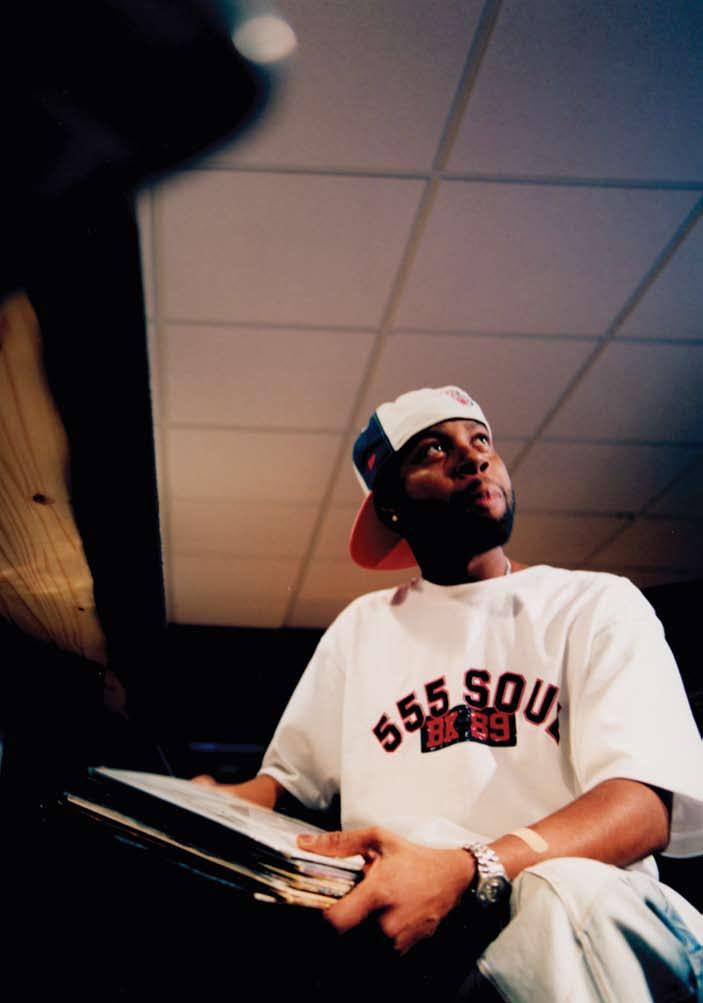
Detroit, that’s what it is anyway, so his drum-bass approach was really something. He had a real understanding of harmony and melodies, but he still had the b-boy aesthetic and the hip-hop aesthetic. His stuff was clean, but then he would go through phases where he would purposely make it dirty— real dirty.
IM an I: We went to New York to freak it, to change up our whole shit, and that’s when we got with Jay Dee. We brought him back to L.A. and got him soaking up the life out here. We were giving him, like, $2,500 a track, and the label was like, “What are you doing, giving this unknown nigga all that money?!?” All folks cared about was the end result the video, whether or not the single was banging but with Jay, it was bigger than that.
DaV e: When we did Stakes Is High, everybody was there. It was back to 3 Feet High and Rising, when you’re hearing beats all day, and you’re hearing and seeing newcomers and people who are planting seeds in the soil that’s becoming family, and everybody’s vibing off of each other, and it’s a good feeling. It definitely rejuvenated us and made us feel good about our career again. Always, musically, that’s where it began, and Jay played a big part in that. We had stepped away from Prince Paul at that time and were doing beats ourselves. And just to hear somebody on the outside who could fit into our circle and be a part of what we do—that definitely made us work harder.
P osDn Uos: I was sitting at Tip’s house listening to some beats that Jay had sent, and the “Stakes Is High” joint was one of them. I knew this song would fit the concept of Stakes Is High. We had the title of the album, but we still needed a title track. That song was it I loved it so much. Tip was looking at me and I was doing everything in mind to keep from looking like, “This is incredible!”
QU es T loV e: You’d have to Jedi mind trick Q-Tip in order for him not to take a beat from you. Tip was playing Jay Dee’s beat tape for Pos, and when “Stakes Is High” came on, Pos felt like he had won the million-dollar lottery, but knowing Q-Tip the way he knew him, he had to play it off, like, “Yeah, it’s alright.” He instantly knew that he wanted that beat, but he was like, “Play the next one.” He then went into the next room and got on the phone with Dave and freaked out, but all day long he had to make Tip think the beat was corny so that Q-Tip wouldn’t want it.
P osDn Uos: At that time, filtering was kind of on its way out. Nobody was really doing what people like the Beatminerz made so known, as far as filtering a beat. I was like, “You know, he’s kind of filtering it, so I don’t know if that’s going to play out,” and Tip was like, “Yeah, I know.” Then I went into the other room and called Dave and let him know how incredible the track was, just getting him to understand, like, “Yo, this is it. This song is the one.”
“I get offended when you waste my time, you ain’t gotta wait for the bill, I sent it, sealed, delivered…”
J a ZZ y J e FF: It’s a blessing when you figure out what you want to do in life, and it’s an even bigger blessing when you figure it out and you do it, but the ultimate blessing is when you can make a living doing what you love. Jay devoted his
life to his love of music, and we all reaped the benefits.
Dan K: When he came [back to Detroit] in 1995—for me to get in the backseat of the 4.6 Range Rover 50th Edition, in Rover Blue, on chrome 18s? It was over for us. I never looked back. From that point? On the real? I ain’t looked back at another job. My job was for me to fulfill my dream, and my nigga gave me that.
waaJ ee D: We were so proud of him, but nonetheless, T3 and Baatin are at the crib, hurting. Jay was doing his thing, but he’s such an integral part of the group as the producer. If your foundation leaves, you’re kind of like, “Whoa, what the fuck am I supposed to do?” At the time, I lived near this spot, St. Andrew’s, and cats would be coming through on their way to the club and they all had Slum Village shit. It started out of frustration with everybody having their music. I was sick of everybody talking about Slum Village—and those cats didn’t have any money. I knew their situation I knew Dill[a] was getting caked out doing his thing and they were hurting.
One morning after the club, I busted in on T3 with a plan. Put all the songs on one album, make a cover, sell a couple of hundred, and make yourself a few dollars. He’d been thinking the same thing, so we called Baatin. Baatin was down. I bought a portable camera and started shooting for the cover. Somehow that made me the executive producer. We approached Dilla and he was like, “Oh, hell yeah,” and in seven days, from start to finish, we completed Fantastic Vol. 1
B aaTI n: We put out Fantastic Vol. 1 and went down to St. Andrew’s with two hundred tapes and sold all two hundred that same night. They started leaking into Ann Arbor, into Canada. MC Lyte got hers from Canada. The first “Fantastic” 12-inch, I think, came out in Japan, then hit over in London and started getting bootlegged heavily. That’s when we really got our start.
J. Ro CC: My boy Jake One, he was the very first person out here to have Fantastic Vol. 1. I remember dubbing that shit at Fat Beats on a broke-ass double cassette deck.
J a K e one : I got Fantastic Vol. 1, and that shit just totally blew me away. I thought the Tribe joints were dope maybe “Word Play,” when I look back, was a sign of what was coming but that Fantastic Vol. 1, I had never heard anything like that before. That shit was so raw to me. The fact that the shit was on tape, with a black-and-white cover, and the shit went around the world just shows you that when you make something that powerful, people will find it and it will turn into something.
HoUse sHoes: Working in the record store back in the day this is, like, ’95 I would see Jay come in digging. He would take a stack of records up to the turntables and put the headphones on, and I’d watch him find something. He’d bring it back for second, go through it again, then take the headphones off and start nodding his head and beatboxing to himself. You could see the whole shit forming in his mind exactly what was finished when he was done with the track. He heard that shit before he even turned the MP[c] on.
HI-T eK: It’s something about how funky he was with the drum machine how he could interpret what was in his head
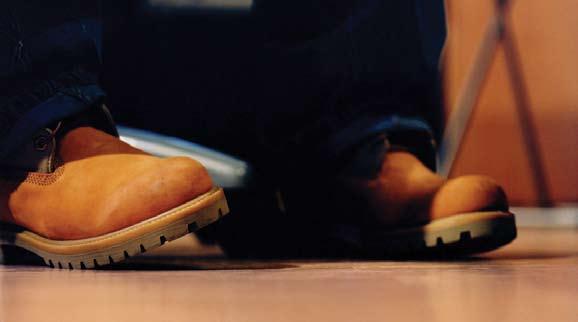
and put it out through the machine. You could feel the soul that he had. To be able to control the MPc and make it speak the way you feel, that’s how you really hit people. A lot of people can work the drum machine, but you have to be able to put your feeling into it, too, and that’s what Jay brought that soul, jazz, funk, “Funky Drummer” feel. That’s what a lot of people don’t get. They get drum machines and they might make a hot beat, but is that feeling going to be there forever? A lot of people don’t make everlasting music they make music for today. They’re like the disco era.
C oMMon: I think he embodied what a lot of Midwestern hip-hop brothers are about. He had the ghetto elements about him, because he’s from Detroit. He grew up on the east side of Detroit, so he would be talking about his chain and his truck and getting some ass. He would be on that, but then he would go and sample Ahmad Jamal, or create something from some obscure rock record. His hip-hop embodied the soul and the funk and the spirit of what the Midwest is about.
HI-T e K: He might be gone now because he did his job on earth. His originality was so pure, he came and did what he was supposed to do he inspired people in such a way, he’s got hip-hop going the way it’s going now.
“The remix will have your chick head noddin’ till she need her weave fixed, the whole team’s sick…”
B aaTI n: Back when he was young getting $100 a week for an allowance, getting the freshest gymmies, driving the Escort at sixteen, seventeen he was blessed. He had a good childhood. The spot he was at, Conant Gardens, was a little rough. As we grew up, cats got older and started listening to NWA. Cats would be doing their thing, but he was never in that circle. He knew those cats, but he was never in that circle. He was always in the basement.
K a RRI e M RIGGI ns: I met Jay in ’96, and the brother was focused real focused. I met him at this spot called St.
Andrew’s Hall. He was like, “Come to the basement, man, come to the basement!” So I end up going over there with Common, and Jay was just real open. We grew together, got real close musically, and started working together. We would make beats together, listen to music together…that was one of my closest friends.
DI a Mon D D: I used to see him at the Roosevelt Hotel, but I didn’t really know him back then. The Roosevelt was the spot in New York where producers used to meet up, the ones who knew about it. We’d get there early—like, seven in the morning. It was like a fucking cattle rush in there. All we did was drive the price of records sky high, everybody digging for shit and looking for the same drums. Tip was in there, Pete Rock, definitely, Lord Finesse, Buckwild, the Beatminerz, Salaam Remi, Large Professor, Rashad Smith. There were a lot of people in there. The 45 King. Nobody would ever see Mark, and that nigga was up in there, eight in the morning. It was just a cool little movement.
BUs Ta RH y M es: The first time I heard a Dilla track, QTip was still at his mother’s crib back in ’93, ’94. I don’t think he was living there, but he kept his record collection at his mother’s crib, so he left his production equipment over there in the bedroom where he used to sleep. I definitely don’t think he was living there anymore because that room was too packed with records. His record collection was so fucking stupid, he didn’t want to move the shit. We would always go and meet up over there, because his mom’s crib in Queens wasn’t too far for me to get to from Long Island. He introduced me to the whole Dilla genius. C oMMon: I first met Jay over at Q-Tip’s space. I think this was ’96. He had something about him that was just real special. He had been staying with Tip for a minute, and I remember him being on the phone a lot because I think he missed Detroit. He’d be on the telephone sitting down on the floor, talking and digging through records. When he told me he had his group, I was thinking, “You rap?” He
was so quiet, I was surprised that he was rhyming, but when I first heard Slum, I was overwhelmed.
BUs Ta RH y M es: I heard about fourteen beats on a cassette—a beat tape he sent to Q-Tip—and I lost my mind. I could not believe that a man had figured out a way to make the machine do shit like that. Shit was happening in the beats that I just never heard niggas do before in production, and I couldn’t believe he was making the MP c or the sP sound like that. Of course, that’s what attracted Q-Tip. QTip brought him in and started this production company called the Ummah—him, Q-Tip, and Ali Shaheed. I was just trying to be the motherfucker that had first dibs.
Q-TIP: I was trying to develop the Ummah as something of a network. With Tribe, I didn’t really say “produced by Q-Tip.” I said “produced by A Tribe Called Quest” because I felt the individual notoriety is something that we get into it for, but I think we succeed as a unit. That was the MO. I was trying to follow. I was trying to develop the Ummah the same way, but it didn’t really pan out like that. Jay had his own wings, and he had his own ideas, and he was like, “Yo, I gotta get my own, because people won’t know that I did this or won’t know that I did that.” He wanted to have clarity, so it was all good.
QU es T loV e: In my world, Fantastic Vol. 2 was life changing, just like Vol. 1 was before it. Common heard it, and had a whole new vigor about his career that took him out of the Relativity period into the Common we know today. It brought Mos alive, it brought Kweli alive it was just breathing new life into people. It was bringing D’Angelo alive, it was bringing Erykah alive, it was bringing the Roots alive. How one demo and one unknown group could spark a fire like this was unheard of. If these motherfuckers’ demo could turn people’s careers around, then what about an improved album? The shit was crazy the choruses were perfect, the production absolutely unheard of.
ToDD Fa IR all: Fantastic Vol. 2 is one of the greatest records I’ve ever worked on, definitely as far as a hip-hop record. I learned so much. Jay opened a whole new world to me that I didn’t even know existed, just watching what he was doing. When he would ask for things, no matter how weird they might have seemed to me, just trying to find what he was looking for was definitely a huge learning experience.
JUs T Bla Z e: Fantastic Vol. 2 felt like he was on the verge of perfecting something. Sonically, it sounded like he was coming out of that Beats, Rhymes and Life sound and moving forward towards what we have now, what his last couple of years of work were. That album was like the end of one generation of Dilla beats, moving on to the next. The way he was combining the live drumming with the keys and the samples, nobody was doing anything like that at the time.
DI a Mon D D: I didn’t know all of the samples, but, me being a digger, I knew a lot of them, and I liked how he flipped them. There’s this horn player, Chuck Mangione, and this album by his brother. What’s the song he used it for? [hums “Fall in Love” ] I’m not gonna call out the name of the record, but that’s the Mangione sample. I heard that—I was like, “Yo, this nigga’s hot!”
C oMMon: You could tell we were all children of Tribe,
but what Jay Dee did so well was bring that aesthetic, but also bring some street to it, so that real cats on the street could appreciate it.
Pe T e R a Da RK wa H: Jay Dee’s album on BBe was his first solo album and the first artist album to be commissioned by and released on BBe I went to Detroit to hang out with Jay Dee or Dilla as he had just become known as to talk about ideas for the album. To my pleasant surprise, he had various BBe comps on his wall. I also noticed he had a lopsided collection to what I expected way more jazz, Brazilian, funk, and soul albums than hip-hop records. We drove around Detroit and I suggested the title Welcome 2 Detroit to him and he loved it. Jay really loved the fact that the Beat Generation series would allow him to do things no one had ever suggested.
J a ZZ y J e FF: When I was talking about doing my record with BBe , the first person that was supposed to do a record was Kenny Dope. It was different, for the first time in your life, having someone give you the opportunity to basically say who you are as a producer. Because a lot of us are under the hypnotism of the industry, I had no idea what to do. Peter gave me complete freedom, and as much as I begged for that, I was scared, because it’s kind of like, “What do you do when somebody gives you complete freedom?” What happened was he got Jay, and me and Kenny both said to let him go first. His Beat Generation album set the tone for everybody that did it.
T oDD Fa IR all : Jay was really hands-on as far as his beats, especially when it came to mixing he was definitely right up there at the board, right along with you. He would work different ways, though. Sometimes he would do the track from beginning to end as far as the music. Sometimes he would build a foundation, then bring players in and see what they would bring to it. Whenever he brought in musicians like that, he didn’t really stay on top of them. He just brought in people he was confident in and let them bring what they heard to the project. It was the same thing when he was working with artists. He would really let them do what they were feeling. He’d give his input if they asked for it, but he really wasn’t a controlling type of producer when it came to what other people were doing, trying to tell you what to do. Even [with] me as an engineer, he definitely let me do what I was hearing. If you went too far in the wrong direction, he’d bring you back in, but he was into it and he loved mistakes. He would actually make you stop the tape and back up. “Play that again for me…keep that, we’re using it.”
“Keep it movin’, keep the questions, and, maybe I can bless you with test pressings, man…”
QU es T loV e: The primary reason why I even started the idea of a Soulquarians was so I could get first-hand Jay Dee beats.
BUs Ta RH y M es: His ability to e Q and hear the music a certain way—you didn’t really have too much to do but rhyme on the shit. He definitely made it easy for Mc s. Dilla would give you a beat for about thirty seconds on a beat tape. You usually have to put the chorus where you want the
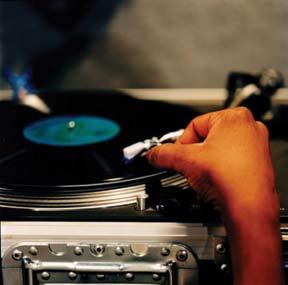
chorus and the verse space where you want the verse space. That’s what Pro Tools is for, but, overall, you didn’t have to do too much to a Dilla track. That shit was damn near a finished production by the time you got it on a beat cd He was extremely thorough.
J a M es P oyse R: De La and the Pharcyde—I remember hearing that stuff and being blown away. All that stuff messed me up, but one thing in particular was this remix [of “Sometimes”] he did for the Brand New Heavies. [sings] “Sometimes you gotta do right…” And I was like, “Whoa.” I had heard about him, and I had heard the music, and I was like, “This dude is absolutely incredible.” I’m a producer as well as a musician, so his talents in that sense were amazing. As a piano player, I’m really into harmonies and things like that, so when he’d put these layers together, it was like, “Yo, what kind of chord is that?!?” It was so right and so wrong at the same time.
C oMMon: I never felt that he was trying hard—he just innovated. He’d go off of whatever sound he was on at the time. After we did Like Water for Chocolate, which I have to say is heavily influenced by Slum Village, just like Things Fall Apart and D’Angelo’s Voodoo —Slum Village was the muse for a lot of the music that came out at that time—Jay Dee could go from that Like Water for Chocolate sound to Electric Circus sound, to Frank N Dank sound, and it was all authentic. He wouldn’t even be trying to do it.
QU esT loV e: Before Fantastic Vol. 1, we had a nice little 200-beat collection of Dilla treats, so once we got our hands on it, that basically kick-started Voodoo Even though his songs didn’t technically make the album, he was very much a part of the production process. Virgin was mad at us because instead of working on the album like we were supposed to do, we spent two months straight not even recording anything—like, literally putting the record on, learning the chords, then going into the studio and redoing it. We were so stuck on that record. For the longest time, we would just sit there and listen me, D, and [engineer] Russell [Elevado].
J a M es P oyse R: It was my little joke about the whole
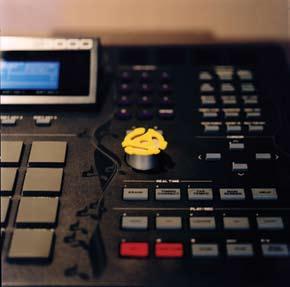
Soulquarian thing Ahmir was the intellect, D’Angelo was the genius, Jay was the innovator, and I was the Jamaican… I’m just happy to be here with everybody.
QU es T loV e: There’s Jay’s Ummah period, which led into his Slum period, which led into his Soulquarian period, which led into his Electric Circus period. I would like to think that whole Electric Circus phase was a Hail Mary throw and the ball is still up in the air. I’m seriously banking on that album having some sort of inspirational result ten years down the line. I feel somewhat vindicated now because the Sa-Ra cats and Platinum Pied Pipers are embracing the Kraftwerk side of things.
Ja Mes Poyse R: A lot of people didn’t really understand the Electric Circus album, but coming up with some of the music for that was crazy. Common wanted to go to the next level and be really experimental, and we were going there doing different things, trying different things, trying different sounds. That was an amazing time. There was so much music we made that couldn’t possibly be used for anything else, because it was so left field things with different tempos, different time signatures. It was just really creative extra creative. We tried to go as far as possible with it.
QU es T loV e: As quiet as it’s kept, the ringleader of that whole period was Dilla. If anybody was the reluctant student of that experiment, it was me. The pressure on my head was greater because I was listed as the executive producer, and Mca, our label, was looking at me like, “Don’t let this motherfucker go off the cuff,” and Common’s like, “I’m ready to go off the cuff,” and Dilla’s like, “Yo, let’s go off the cuff!”
Q-TIP: He considered himself “underground,” but Jay had all sensibilities working for him. He was such a diverse artist. He knew so much about music, having studied music, and he came up in a musical environment, so he knew how to adapt, which is why his shit is just so lethal.
JUs T Bla Z e: In my conversations with him, the one thing he would always talk about was how he didn’t really like the spotlight he was more of a regular people’s champ. If you notice after he did that wave of albums, he kind of
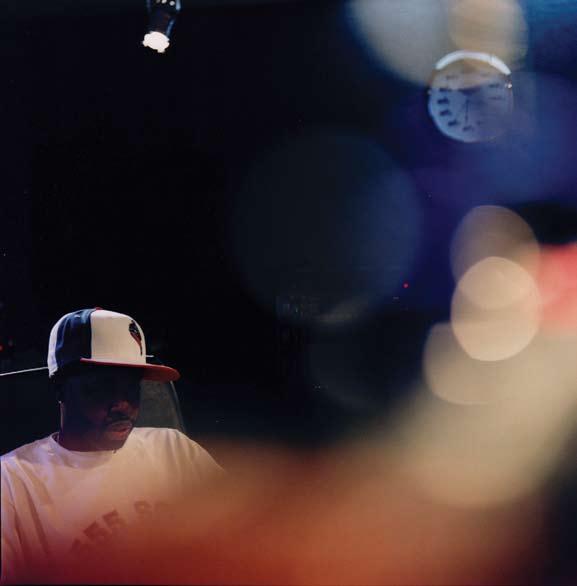
went back to his regular hip-hop and put out the Ruff Draft e P and started doing his thing with Stones Throw.
“Madlib and Dilla, the illest, my nigga, only haters holler they can’t feel us…”
C oMMon: I remember talking to him on the phone, like, “Man, you need to come out here [to Los Angeles]. I got a spot out here.” I just felt he needed salvation—he needed to get away. It was a time in his life where he knew he was sick and he wanted to get to a more peaceful place in his heart, a more peaceful environment. I think he was going through different trials and hard times, and I felt like his salvation was out here, like this was his home.
Pean UT BUTT e R wol F: I used to work at this record distributor, TRc, in the Bay Area. I had this record out called Peanut Butter Breaks, and House Shoes called me up from Detroit. He was ordering it for a record store he worked at out there. We started talking and he’s like, “You have to
check out my boy Jay Dee; he’s got beats.” This was, like, in ’95. House Shoes said Jay Dee was the shit, and he sent me a cd of all these remixes that Jay had done that didn’t come out for whatever reason. He’s like, “Yo, I think we should put these out.” His remixes were good, but I think because of the fact that he wasn’t a name yet, a lot of times, the labels would ask him to do stuff on spec, and it wouldn’t come out.
HoUse sHoes: The first record I ever put out, the Jay Dee Unreleased , it kind of tripped me out, because I would get more frustrated, it seemed, than he would. He had all these remixes that he had submitted to all these different record labels and they all fronted. I was like, “Man, give me that shit on daT that shit’s about to be shared with the world.”
Pean UT BUTT e R wol F: I always stayed in touch with House Shoes. Through that, House Shoes was showing him the Lootpack and Quasimoto and all that. Eventually, I started talking to Dilla when Slum Village came out here and did a show. I remember that was when he and Madlib
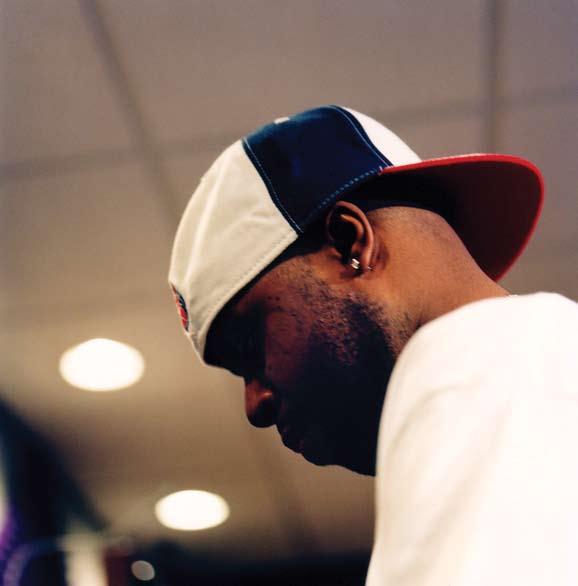
first met. We all felt like it was a historical moment.
HoUse sHoes: I was backstage at an Alkaholiks concert ten years ago I took those cats around digging and shit, and Madlib was DJing for them. That was the first time Madlib had heard any Dilla shit, right when Stakes Is High came out. I played him “Stakes Is High” and he was like, “Damn, I just fucked with that!”
J. RoCC: He moved out here [to L.A.] in, like, January or February of 2004, and after that, it was on and cracking. Everybody loved him. We were like his second family, more or less, in addition to the family he’s got in the D, like House Shoes and those cats. Out here, it was like, bam! You’re down. You’re Dilla if you’re down, we’re rolling with you.
CoMMon: I’d be waking up at the crib grateful—thankful—that I could wake up and listen to Jay Dee making beats. I could wake up to that. How many people can say that?
J. Ro CC: We’d go digging all the time, at home and on the road. I’d pick him up and that was it spots in Venice,
spots out here, wherever the car would travel. I’d pick up Madlib sometimes, or we’d meet over at Madlib’s house, and we made a day out of it. Jay was always looking out for folks. “We going digging? If not everybody can do it, I don’t wanna go. I’ll wait—I’ll wait for everybody.” He wanted to wait for everybody, so we could smoke some weed and crack jokes, and he was funny with it because he was the opposite of Madlib. Madlib don’t give a fuck he’ll buy everything. If it looks dope, he’s buying it. Madlib would buy the whole store. Dilla would buy, like, two records. DaV e new yoRK: Even though Dilla was out here [in L.A.], he repped the D to the fullest, like, “I’m from Detroit, don’t get it twisted.” When I was in Detroit with him, it didn’t feel like folks had that kind of love for him out there. Out here, he’d walk into a 7-Eleven and motherfuckers would go bananas. That shit never happened in Detroit unless we were at St. Andrew’s or somewhere like that. Dilla never let that shit bother him, though. I think it bothered
everyone else more than it bothered him. All he wanted to do was make music.
M a DUK es: When you’re from [Detroit], you don’t get that big break, because nobody’s looking inside for anything. They’re looking outside. If you’re coming in from another country or another state, they’ll get all their due before someone from Detroit. Detroit will look at you and let you go they don’t embrace you. In Los Angeles, it’s totally different. The love there is like you were born and raised there. Here, we’re kind of coldhearted. Maybe it’s because we have so many people here that are talented, that we take them for granted, and it takes something like people like leaving here for us to look.
“You know what love is…”
J a ZZ y J e FF: I let other people pay attention to what I do. I pay attention to what somebody like Jay does.
PRooF: I think he’d just hear different. You know how running water sounds? It would have a different swagger when Jay would hear it.
QU es T loV e: Jay Dee was the cat that, if you were a freshman on the first day of school, the creative equivalent would be him rocking a polka dot T-shirt with some plaid plants and multicolored sneakers, but walking with a confident stride. He did everything with such confidence. Everyone else would be rocking a track suit or some color-coordinated shit, but his feng shui was just totally out of whack.
M a DUK es: Artists, you know, are a different breed altogether. Some like Jay might be a little alien. He had a fixation on little alien figures at one time or another, and I half-expected him to be from another era or another place in time. He was a little ahead of his time.
JUs T Bla Z e: Some people are in tune with another part of the musical spectrum that most of us don’t even realize exists. Back in that Beats, Rhymes and Life era, no one was making music like that. Fast forward to today, nobody’s making music like his now. It’s just so far to the left but right on point that sometimes I think dude was an alien his brain just worked so differently. It’s almost like he was the brother from another planet.
PH aT K aT: Jay was a different kind of nigga. That nigga was trading secrets with the aliens, and that’s on everything. The nigga had this little alien doll sitting on the speaker. We’d be down there laughing and smoking, but when he’s getting ready to make a beat, he’d tell everybody to step out of the room. Niggas would walk out of the room, then four or five minutes later he’d be like, “Alright, y’all can come back in.” Then he’d play them the shit on the loudspeaker. Get the fuck out of here. He was trading secrets he’d make us step out of the room, then the fucking tentacles and those other arms would come out of his back and he’d get to making that shit, then he’d let us come back in when he’s done, on some other shit. You’d come back in the room like, “What the fuck?!? What’s going on, dog…what’s going on?”
M a DUK es: During one period of recovery in ic U, for two days, he sort of rambled and talked to himself. His eyes were wide open and he was looking at the corner of the wall and talking not whispering, but talking out loud. One of the
things I remember was him saying, “Okay, I’ll wait on the bus, the white bus…okay, I won’t get the red bus. Don’t get the red bus.” He kept referring to “O.D.” I knew Madlib’s name was Otis, but I didn’t know his last name. I was trying to think of all his friends’ names so I could figure out who he was talking about. The nurses were asking me if he had ever done this before. They did all kinds of scans to make sure nothing else was going on. After the two days, I was afraid to bring it up because he was so sick, but a week later, I asked him, “Who is O.D.?” He looked at me real funny, then he asked me why I was asking. I told him that he had been talking to “O.D.” for two days and everyone was concerned. He said, “I was talking about ODB.” I didn’t even know he knew ODB! That really floored me. He said he remembered saying it, and he explained that ODB told him not to catch the red bus everyone that catches the red bus goes to hell. He was to wait for ODB and the white bus. Everyone that is true to the game, and true to their music, could have any ride that they wanted. That’s what ODB was telling him, and he was to wait for ODB to come back and get him. It really kind of threw me for a loop, but it didn’t seem to phase him one bit.
It just blew me away how he had this out-of-body experience. It was so calming. I really do believe this was the beginning of his preparation to leave us. He realized that he wouldn’t be here long. After that, he became a person on a different type of mission. He had a certain purpose.
J. Ro CC: Dilla, forever now, is number one in my eyes, just because he’s gone, and that makes him even more of a number one. People ask, “What about Premier? What about Pete Rock? What about such and such?” Pete was out here for the funeral and everything, and he came to the club tribute and me and him just rolled one up, building on Dilla, and he was like, “Man, that cat was the illest, yo…my whole next album’s gonna be on some Dilla shit.” [laughs] Pete definitely knew. It’s dope to see that someone that only had ten years in the game can change things that much and get that respect from his peers people he looked up to, people he bit when he first started, people he learned from. That’s dope. It’s humble for those cats to be like, “Hands down, that guy was the illest. We’re ill, too, don’t get it twisted, but that guy right there was the illest. Jay Dilla.” .
Ronnie Reese wrote cover features on the Meters and the Mizell Brothers for Issues 13 and 15, respectively. He can be reached at ronnie@waxpoetics.com.
Note
1. Jay attended Detroit’s Davis Aerospace Technical Center for three years before transferring to Pershing High School for his senior year.
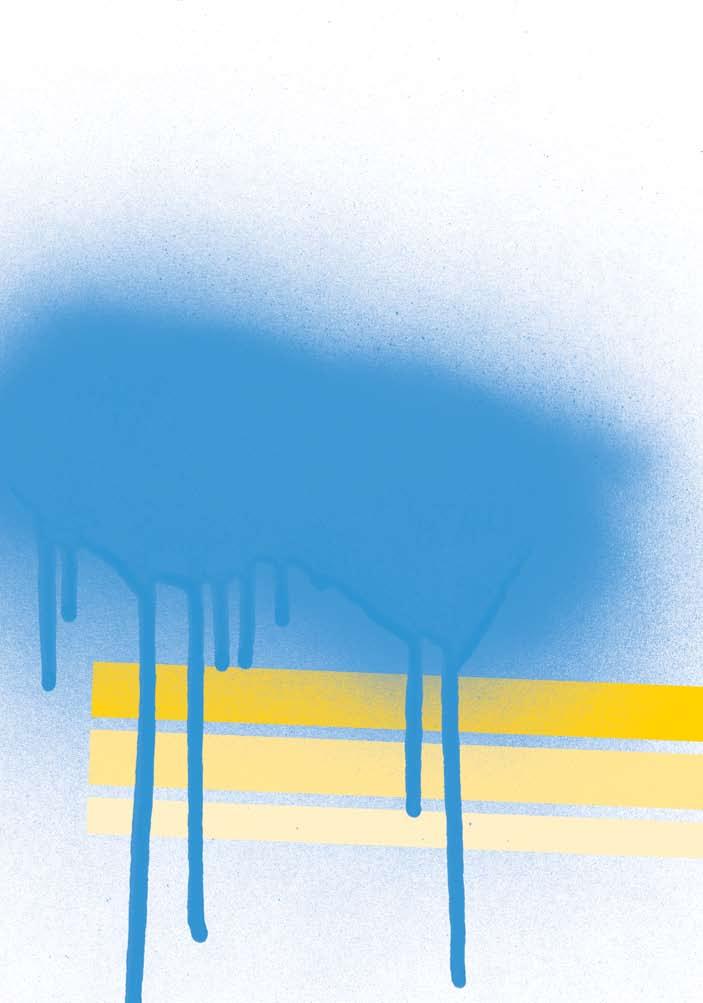


by Ahmir Thompson // photo by B+
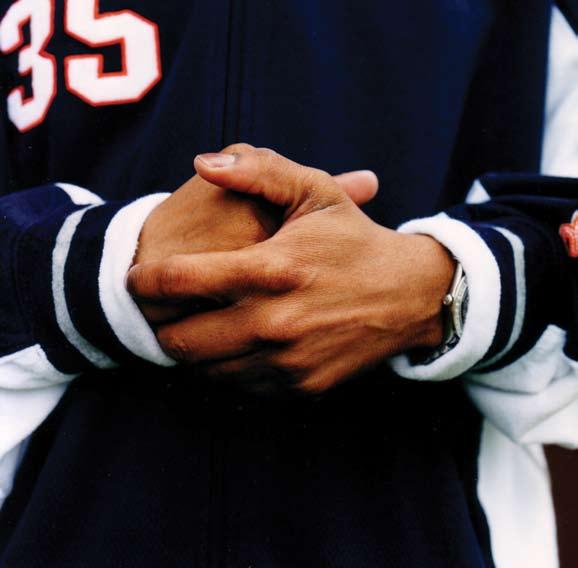
LIFE LESSON: You can drum as drunk as you wanna, as long as it’s done with conviction and authority and not a trace of Scotch.
The initial song that hooked me onto Dilla’s programming madness was the Pharcyde’s “Bullshit.” However, the song that showed me that dude was no one-trick pony was Tribe’s “Word Play.” All too often I heard of half-assed musicians sounding like amateurs while making and faking it all the way to the bank (see the Malcolm McLaren darlings the Sex Pistols), and occasionally someone’s primitive di Y approach could be just what the doctor ordered (see RZA’s prime Wu-Tang output). And then there is a madman who with his best Pee-Wee (“I meant to do that”) Herman conviction dares you to question your sobriety while listening to the most demented undanceable-but-totally-danceable kick pattern this side of sneakin’ grandpop’s moonshine. The fact that Tribe cosigned such a beautiful flaw with a straight face made it that much better. Once I heard this kick-drum pattern, all bets were out the window. This was the assurance I needed to be as nasty as I wanna be in a world full of drummers whose Arsenio Hall funk was tasting more like broccoli instead of collard greens. The big debate of 1996 was “Did Dilla kill Tribe?” Yes and No: No, because all of the Dilla-led tracks they chose from had incredible rhythm to them and samples so obscure you swore they were played by musicians hired by the band. However, the Yeses also believed that the key ingredient that makes a Tribe album magic (the Beats were there and so were the Rhymes, but the Life of the record had none of the spirit that its three predecessors had) was best displayed on Dilla’s own outfit’s one-two punch: Fantastic Vol. 1 and 2.
Slum Village Fantastic Vol. 2
LIFE LESSON: Who says you always gotta give the drummer some? Sometimes you gotta take some! I don’t know what is the cooler shit about my life: participating in projects that will go down in history…or just playing the lucky Forrest Gump fly on the wall, watching it all unfold. I can proudly say that I was a part of a few of these Gumpish moments of my favorite Dilla highlights. On the initial Welcome 2 Detroit– ish The Jay Dee Project (woulda come out in 1999, but he sliced it in half and made it the J-88 Best Kept Secret album instead), there was a song called “2U4U,” which was incredible on its own. But Dilla was always trying to fix what was always fixed (!!!!)—and sure enough, during the embryo stages of Common’s Like Water for Chocolate production, I gave Jay a rare 12-inch of D’Angelo’s cover of Prince’s “She’s Always in My Hair”—he sat it in the corner and I thought nothing of it. Next morning, he was all over it (this is when I discovered that Dilla makes beats as early as 9 a.M —the only other person I know that keeps this professional schedule is Pharrell)—he had changed the whole landscape of “2U4U.” He explained that he felt he ain’t freak the “Jonz in My Bonz” sample enough the first time he used it on Fantastic Vol. 1 ’s “Hoc
N Pucky”—so this was his chance to “outdo himself.” (I was always interviewing him, trying to keep mental Post-it Notes on how he did stuff.) And how did he do it? Well, that is the miracle aspect of it: I knew I had something to do with this song, but I couldn’t quite tell when I had woken up out of my sleep to get on a drum set to give it to him. It was what I called the Immaculate Condrumtion: there was no drum break on ad-lib-laced “She’s Always in My Hair”—now the 12-inch was on his turntable…my first and only clue I had something to do with this—and yet my drums were clear as day! I asked him, “Did I leave a break open?” He said, “Kinda.” I left a snare open in verse one, and a hi-hat and kick “somewhere towards the end”—I was jaw-dropped, because all over that song is guitar galore and screaming harmonies everywhere. Where in God’s name did he find isolated drums that clean? He told me later that he had “to take the lesser of hi-hat evils” but a “good one came through loud and clear over D’s screaming toward the end.” My reaction? “So you are allowed to just…take that? Doesn’t bother you if there is sound underneath the drums?” And with a shrug he told my ass: “Don’t bother me…it feels good.”
“Think Twice” w/ Dwele 2000 LIFE LESSON: Trash is good!
During a visit to Detroit, ever so the ready apprentice, I volunteered my services for the payoff of just being a fly on Dilla’s wall once again. This time I was needed for a threepart coda ending on his protégé project called 48 Hours (for fellow D micsmith’s Frank N Dank). Before he got his own studio setup off the ground, Dilla always used Studio A out in Dearborn. It was about a half-hour drive out of Detroit. It also had history (the walls were adorned with platinum plaques from fellow Detroit luminaries such as MC Breed, Ready for the World, and Anita Baker). It was lo-fi for Hollywood/New York standards, but for a lo-fi guy like me, this was right up my alley. However, once I saw what I was working with...well, let’s just say I was jaw-dropped once again. There was a beat-up dime-store drum kit in the middle of the main recording room. A Gretsch 20-inch kick, a 16inch floor tom with the nuts and bolts missing, a snare with broken wires dangling, and the poor drum sticks…damn, five used sticks all brittled and chewed in the middle. Two even had toilet paper Scotch-taped on its ends on some homemade MacGyver orchestral tympani shit.
I didn’t wanna bitch on some high-class “you too good to be working in these conditions” thing, but I was thinking it. And then he played me what he created on this very set some weeks earlier. Donald Byrd’s “Think Twice.” Oh shit, son. It just hit my ass like a ton of kicks: He Likes It This Way Very Much, Thank You! He knows that you got access to all those thousand-dollar vintage drums, and access to all your heart’s desires, but you lose yourself in all that gloss and perfection. And sure enough, everything about this setup was all “wrong.” The mics were placed “wrong,” the drums weren’t tuned to that usual Dilla “snap” standard, and how was I supposed to get maximum funk hitting layers of toilet tissue–tipped sticks?
I joked with his engineer that I’d never done a professional studio gig with such an amateur setup. He quipped, “Oh, he was excited you agreed to do this session, so he made us break out the good kit instead of what he normally uses.” Ha ha, MacGyver indeed.
Common Like Water for Chocolate “Funky For You” w/ Bilal and Jill Scott 2000 LIFE LESSON: What time is it??!?!!
Well, the Soulquarian multitasking team of Yancey (the innovator), Archer (the genius), Thompson (the intellect), and Poyser (the Jamaican) was in full swing for 2000. We were treating Common’s Like Water for Chocolate album sort of like the late-night jazz sessions during the uptown heyday of the ’40s: By day and evening, your art belonged to “the man”—but at night, you went uptown and, without the hustle-and-bustle pressure of the world on your heels, you just had a good ol’ time. We began Water in late 1998 when I just finished my band’s Things Fall Apart and D’Angelo was a year away from unleashing Voodoo. By this point, we were studio vets: Wet behind the ears in ’96, we had now turned the House of Jimi into a five-year slumber party. Studio A was for the “serious” stuff (D’Angelo held that down, sometimes Erykah) and its smaller B room counterpart was for the “fun” stuff on the side like Bilal, Nikka Costa, Roy Hargrove, and Slum Village. This was also the room that we took breaks in to work on the music that would eventually become Common’s first near-platinum opus. I don’t even consider this to be a continuation of Voodoo (that album was our ’96–’97 mind state), but more of where we were if D would have released it in 1997 and his third album had come out in 2000 (yeah, we still waiting). I do know that my touring schedule prevented me from some studio dates, and it was usually around these times that Dilla and James Poyser would still hold stuff down till the crew could collab again. One of their concoctions was “Funky for You.” I remember Com coming to Jazzy Jeff’s A Touch of Jazz studio to get then young upstart Jill Scott to add some magic. I remember the original draft of the song being cool but still needing…a kick in the ass. We put it in the can and I been forgot about it. Once it was time to mix the song, I told Com, “I’m not too sure about this one…we still need something.” And he laughed, “I never played you part two?”—“Part two? What the...?” He pressed play.
Now, in jazz music, I knew about turning the rhythm around and flirting with time. But I never thought that I could apply all those theories in hip-hop. Sure enough, with one masterstroke, Dilla managed to turn a regular boombap song into a 12/8 meter waltz canvas that Bilal used to Paul Revere his announcement to the world. Ever since I heard Jeff “Tain” Watts turn Wynton Marsalis’s 1987 version of “Autumn Leaves” into a time/meter expedition of 2/4, 3/4, 4/4, 5/4, 6/4, 7/8, 12/8 time, I always wondered if someone in hip-hop could marry the two worlds without coming off like a Zappa experiment gone wrong. Ever since, I’ve used every opportunity to flip the rhythmic script.
“Dancin’ Dilla” “Fellas!” 2005
LESSON LEARNED: Anything is possible.
Imagine this scenario as a letter written by Dilla himself: Yo, I’ll bet you I can take a “passed-on” song that went under the “gotta sample this!” radar. 1. Flip it to make it sound more interesting. 2. Make you do a Friday “ dayuuuuum !!” about seven times over. 3. Make you play this for everyone that you know. 4. Watch them drop their jaws in amazement.
Dilla never had to write me this letter, but I’m certain that this is what he was expecting. “Real” beatdiggers (i.e., the readers of this periodical) were always pushing forward, wanting to sample shit that no one else does. I mean, if you want to sample someone obvious, we would think, “Oh, like Cal Tjader? Or Galt MacDermot?”—matter of fact, in this age of irony, Dilla using the Jackson 5/James Brown samples for this pre-Donuts treat were so “obvious” that it actually seemed obscure again.
But with Dill, it was always a new challenge.
The “Dancing Machine” sample seemed simple enough, but he had to manipulate Michael’s ad lib as to make him sound like he was actually throwing up (if you can find QTip’s mixtape-only “Move,” you can hear what he did)—it’s an old trick (he time-compressed the sample). And it wasn’t like he “had” to do it. And it wasn’t like he “thought” that mofos were gonna fight over the first rights to have the beat. I truly think that Dilla made this shit strictly for the producer heads to cream over. I myself was running around playing this for any open ear willing to listen, as if it were my best creation or if I was showing off my son’s straight-A report card.
The art of flipping ad libs away from a song was nothing new to Dill. My all time favorite Dill flip was “Little Brother” for Black Star. A flip so revolutionary, I would take four pages writing the real story behind it, but I will say if there is any artist with more ad libs than lyrics, it’s gotta be James Brown. And for Dill to make his last opus some back-to-basics beat flip shit? It’s only poetic that he demonstrate one more time his peerless ability. Plain and simple: James Brown’s “My Thing” (“fellas?!,” “yeaaah,” “a brand new funk!,” “tell us about it,” “if you wanna get down with a broad”)—I mean, all over the place. And if James wasn’t talking trash, his brownnose band was cosigning every piece of misguided advice. And even then, the horn section was blasting all over the place. Somewhere in this chaos Dilla found a way to keep the guitar and the bass and drums grooving without interruption. Sounds simple, but believe you me—kids, don’t try this at home.
I’m certain that y’all will be on some “Well, what about…?!”—trust me, if Wax Poe T ics could give me my own Dilla manual to write out, I would overanalyze every nook and cranny. Although I am heartbroken about his absence, I will say that he left a lifetime ’s worth of lessons for us to comb through. Dilla was and will forever be the greatest of all time. Rock Rock On. .
Ah M i R ThoMPson, aka Questlove, is a drummer, producer, and founding member of the Roots.

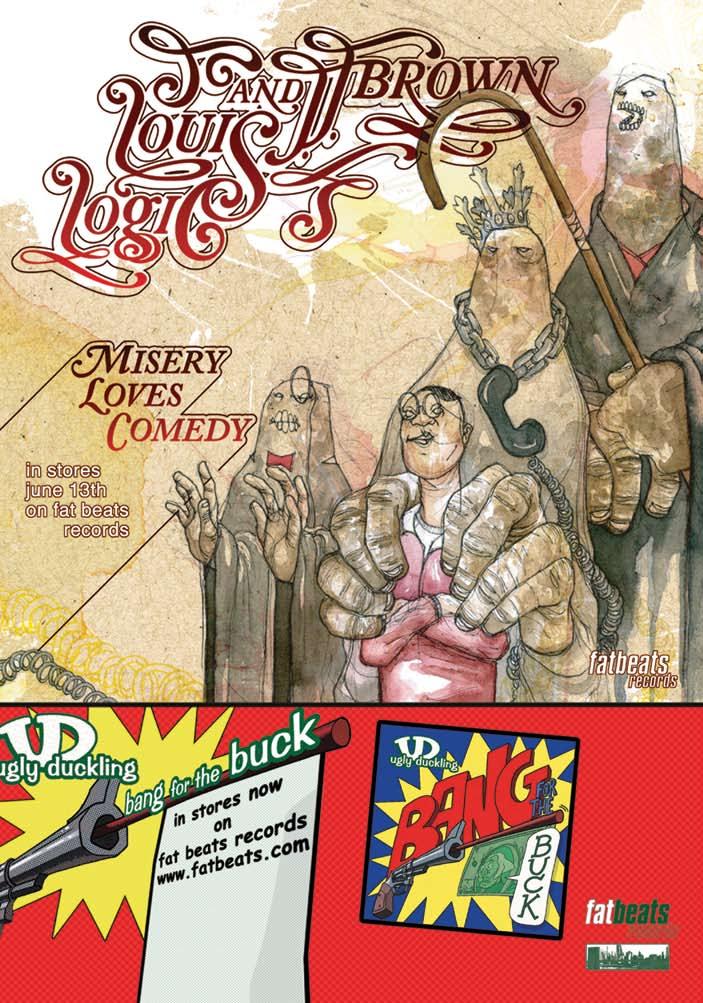




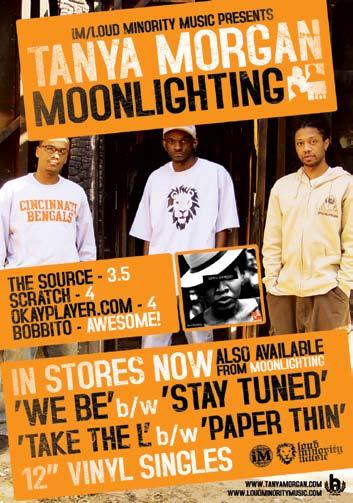


And then came the Bomb Squad.
Between 1984 and 1991, four men from Long Island, New York, made up the production arm of “a revolution crew called Public Enemy”: Hank Boxley (aka Hank Shocklee), Keith Boxley (aka Keith Shocklee), Carleton Ridenhour (aka Carl Ryder, aka Chuck D), and Eric Sadler (aka Eric “Vietnam” Sadler). In the eight years that they worked together, they made albums, singles, and remixes for dozens of hip-hop and R&B artists. They evolved from a neighborhood sound system to radio-show hosts to a music production house, and almost to a label: It was the personal rifts caused by Hank Shocklee’s attempts to start the SOUL (Sound of Urban Listeners) label that brought the Bomb Squad to an end. They informally dissolved, and although some albums on SOUL (Son of Bazerk, Young Black Teenagers) are credited to the Bomb Squad, they are produced only by the Shocklee brothers and new partner Gary G-Wiz. ¶ Those eight years left an indelible mark on music history. They were the first to completely strip away the original music track of a song and replace it with their own, essentially creating the modern remix. They were sampling pioneers, forging an instantly recognizable sound from dense layers of aggressive, staccato noise. They put out arguably the best rap record ever made, It Takes a Nation of Millions to Hold Us Back. And everyone wanted a piece of their sound: LL, Doug E. Fresh, Bell Biv Devoe, and Ice Cube, who even left the West Coast to have them produce his solo record. ¶ To this day, nobody sounds like them. And to this day, nobody has ever told their story. So here, for the first time, is the story of the Bomb Squad, told in their own words.
r ooT s and v i B raT ions
Han K sHo CK lee: I was born in Harlem, and I moved out to Long Island when I was about five. My mother is a pianist and my father was a crazy jazz buff. He also was into sound and wiring, so our house was wired for sound, throughout the entire house—whether you’re in the bathroom, kitchen, bedroom—every place has music in it. Even in the basement.
I was lucky, because living next to me, my best friends were in a band. And that was the thing that really got me excited about music. At this point, I’m about seven years old, and my friends were all ten years older than me. And I used to just wait out, like a groupie outside their garage, just waitin’ for them to open the garage and start playin’. Because it was such an amazing thing to me to hear people playing instruments, and it was live. I’ve always vibed on that whole concept, the band concept. And I’ve always thought that playing in a band, to me, was the best thing in the world.
Ke ITH sHoCK lee: Besides that, my godmother’s brotherin-law was Gene Redd, who discovered [and produced] Kool and the Gang. His sister was Sharon Redd, who was in a group called the Harlettes [Bette Midler’s backing group], and then later on did a lot of disco records for Prelude Records. Now this is all family. So me and my brother, we had a history of music.
h an K : Then I started listening to funk. My cousin came home from the Vietnam War and he had a bunch of 45s with him. He turned me on to Kool and the Gang, Sly and the Family Stone, Wilson Pickett—and that just blew my head, because it had a whole different pulse and a whole
different feel than jazz. My moms, when she listened to her Nancy Wilson records, those records were very, very laid back, and those records were more based around the vocal than it was around the instrumentation. And the one thing I noticed about the funk: it was based around the groove, and the rhythm. So that excited me. Tremendously.
Ke ITH: [My cousin] Rick used to pick up Kool and the Gang, Parliament-Funkadelic, the early Earth, Wind and Fire, some of the Sly Stone, Soul Generation—back then they did a song called “Body and Soul”—New Birth, Tower of Power; it’s so deep, man, it’s crazy.
Han K : I used to always listen to the radio, and I gravitated towards rock and R&B. So the first records I bought was the Beatles, “Twist and Shout,” the Byrds, “Turn Turn Turn,” and the Stones, “I Wanna Testify.” Those records blew my head! Because when you listen to R&B, you listen to funk, you listen to rock—you know, the thing that they have in common—they was based around rhythm and blues and the beat. But rock had a different expression than funk. Rock was more overt in its delivery. So everything is forced out. So you get this [sings] Aaaaahhh just wanna testify! It’s more… Aaaahhhh! You get that drive, whereas funk is a little more understated, so it’s not lettin’ it go, as much as rock and roll is.
You know, music to me is not about sound so much as it is about emotion and feeling. And the sound to me is just something that accentuates the emotion and feeling. So I have a perspective on sound that it has to vibrate to me and it has to do something to me. So ever since James Brown’s scream used to rush through me—no different, no crazier than a funky Clyde Stubblefield solo. It’s the energy

in which people are playing—that’s what radiates to me. I could go on for days, man. I have so much music in me that it’s like it fights to get out; all of them are fighting to get out at once!
Han K : One day, the band didn’t come out and play. And what happened was, the friend of mine—he was the bass player in the group—he had a younger brother, and he decided, “Alright, well, fuck it—the band is not playing, so what I’m gonna do…”—he took a turntable and hooked it up to the band’s Pa system.
Now this is the thing that turned everything around for me. Because once he did that, I got a chance to hear the record at such a loud volume, the amplification turned funk into something that was bigger and louder than a band . So it superseded the band.
So now I’m in my house, rewiring my father’s setup—to try to capture that same emotion and feeling. And I had no power, no amplifiers, so the shit sounded like mess. It sounded crazy, but to me, I was doin’ my thing, because I was making it different from what it was. I was trying to create an experience.
Han K : In Roosevelt, at the Roosevelt Youth Center, with another friend of mine, we created a radio station. We took two turntables and an amplifier head, you know, from my friend; I saw them do that. And I plugged two turn-
tables into the amplifier and had two column speakers. So we took those Peaveys—you know, the Peavey Electronic Systems, basically just for microphones—and we would plug turntables into the microphone jacks. And then channel one would be one turntable, and channel two would be the next. So we’re now mixing.
Ke ITH: It was very old school. I think we had two mismatched turntables. Technics wasn’t even the big turntable. I think one was a Pioneer, and I can’t remember the other one. And we had the booth built like a radio station that you would see back in the day. So the music that we would play, we would pump through the youth center. It was called WRYc —Roosevelt Youth Center—and people thought it was an actual, real radio station, and they wanted to tune into it!
Han K : We have what is known as the Teen Canteen in Long Island. Nassau County would send out a mobile unit, and they would send bands that would play live in the parks. So one day, the Teen Canteen couldn’t do it. So they said, “Do you guys wanna take the radio station to the park?” So we took the radio station and started playin’ that in the park, and it opened up a whole new zone.
Ke ITH: That was the birth of the Spectrum Sound System, when we started takin’ it to the park. And from the radio station, it just grew; members broke off and it grew, and we started to do local, little house parties.
CHUCK D: I was a big fan. Spectrum was actually the major dJ outfit [in Long Island] from ’75 on up into the ’80s, and I was a fan for about four years before I actually joined them. When I first starting following, the dJs were Jerry Jackson, DJ Griff—Professor Griff later on—and Hank Shocklee.

And then later on, when I joined, Keith Shocklee.
Han K : We playin’ anywhere, man! You know, mainly sweet sixteens and high school parties and graduation parties. And there was sometimes I’d do, like, a couple’s silver anniversary. You do a wedding reception, and you know, those things teach you to be versatile. You can’t just walk up into a wedding reception rockin’ breaks.
I would be on that plane—diversity. You know, I’m playin’ all kinds of stuff, but I’m playin’ everything with a groove. So I may throw on a jazz record that I think will fit the mode. I may throw on a rock record. I may throw on a club record. So you’re playing with emotions, you’re playing with tempo, you’re playing with feelings, you’re vibing the whole scenario out.
CHUCK : You heard a combination of a whole bunch of different records. That was in the middle of, quote-unquote, “the beginnings of disco,” and disco then didn’t have the connotation that it had five years later. So, you know, you’re talking about music from the Fantastic Four, a lot of the Philly groups, stuff from Gamble and Huff, First Choice— the guys that blended a lot of the soul, disco, but yet with funk—and you know, funk wasn’t a tremendously popular music in New York, but Spectrum found a way to make funk very popular when they dJed.
Ke ITH: Man, the biggest record was [MFSB’s] “Love Is the Message” at that time, and that was Chuck’s favorite. When you dropped that—no matter what kind of dJ you were, good, bad, corny, whatever the case may be—whenever you played “Love Is the Message,” that’s when everybody went to the floor. There was just something about that record that everybody loved. And Kraftwerk, “TransEurope Express.” Kraftwerk was crazy huge. “Trans-Europe Express” was the ultimate record, from a bunch of White guys from Europe that had more soul than…it was just hot.
Han K : Back then, we didn’t have what is known as classics. You don’t rock classics and everybody goes, “Ooooohhh!!! I feel you!” because they didn’t develop yet. You’re developing the classics.
And then we would take records and mix them up together. My brother was classic. Keith was a better dJ than I could ever be. He was Wizard K-Jee. Keith was retarded. Keith did a joint where he took Kurtis Blow—“Clap your hands, everybody…”—the beginning of “The Breaks,” right? Now this is a set when we’re coming off of another dJ. Kurtis Blow was as hot as a pistol. “The Breaks” was hot as fuck, a’ight? And the other thing that was even hotter was “Eighth Wonder” by Sugarhill Gang. Okay? So he took “Clap your hands everybody, if you got what it takes, I’m Kurtis Blow and I want you to know that these are the ”—then he’ll rock the beginning of “Eighth Wonder”! And then he’ll stop it—
CHUCK : Hank is a technological genius. The way that he would actually take elements of the sound system and make it sound way better than it should have, and more powerful than people that had incredible stacks and systems that looked like they were straight out of Woodstock. Hank would actually make a system based on the proper balance of mids and highs and bass—he’s an acoustic genius. Hank has the best ears of anybody I’ve ever met.
Han K : I built my own sound systems. I had two huge stacks that were as clear as a home stereo set. Most cats, when you listen to Kool Herc, you listen to the Disco Twins, these cats emphasize raw power. They had a lot of bass goin’ on, but they had screamin’ hot mids and highs. So for us, their system didn’t have fidelity to it. They had the boombap together, that’s why when they played the breaks, it always sounded crazy. But when they tried to play a regular record, you lost all the fidelity. It sounded very harsh. So I would make sure that my crossover frequencies—I would make sure that my bass, everything, was working in tune with each other, and I made sure that I covered the entire frequency spectrum. So not only did I have 18s on my lows, I got 15s for my mid-lows. I got 12s for my low mids. I got 10s for my upper low mids. Then I have 5½ for my mids. I created a sound system that sounds like you’re listening to a pair of speakers inside a studio. But just on a crazy-large level.
Han K : Now we come into the evolution of the rapper. You play “Good Times,” and fifty thousand muhfuckas is grabbin’ one mic. I was at a university, and I saw all these guys rappin’, and they were all disgusting, and then they cut the mic off and asked Chuck to make an announcement. And when I heard Chuck’s voice, I said, “Chuck’s voice sound better than all these clowns!” And at the time, Chuck was into being a sports announcer. So that was his thing, he wanted to be Marv Albert. I talked to Chuck for almost a year before he decided to do it. And it was funny, because Chuck was shy. He’s not shy now, but Chuck was extremely shy. Chuck’s really an introvert. And it’s funny; I’m the extrovert, he’s the introvert, but in our musical life, I’m the introvert, he’s the extrovert.
So now I’m bringin’ this to everybody, and Griff is not in the picture no more; it’s just me, Keith and Chuck.
CHUCK : When I first joined, Hank was still dJing, but then Hank realized that he had to handle the business and defer the dJing out to Keith, because myself and Hank as an Mc and a dJ, we was totally devastating; we would just blow people away, but then we had nobody to watch the promoter on the door. And then Keith stepped up to being
“Clap your hands, everybody ”—back then, the niggas was just like, “Yo, what ?” It was like a mixtape. And then when it gets to the point where instead of playin’ Kurtis Blow, when the crowd is gonna go wild? He rocked the most ultimate, which is “Fantastic Voyage.” Now he’s comin’ with “...and these are the—bum bom bom—Come along with me on a fantastic voyage...” From that point on? It was like, yo, muhfuckas was handin’ us the trophy, man. They didn’t have to hear the rest of the set. Trophies was bein’ handed out at that moment.
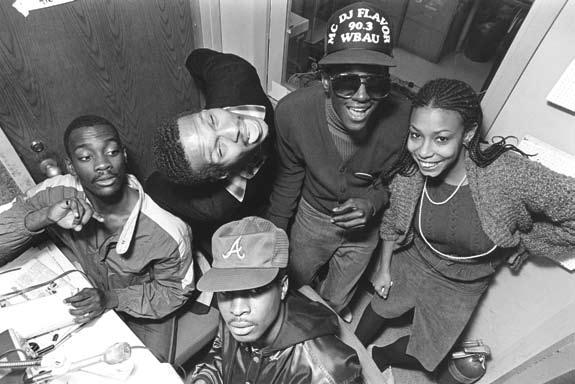
quite a formidable dJ himself.
Ke ITH: Now everybody’s just see and do. But it was a science back then. And I learned from a lot of guys like Hollywood, Eddie Cheeba, Starski, DJ Junebug at the Fever before he got killed, you know. Those cats was hot, and then all of a sudden they became really hot with the vocals on the mic, so Chuck was my man on the mic.
CHUCK : I was rapping in parts of the night and then I developed my craft as an Mc, which is different from rapping. I was in the mode of what Eddie Cheeba and DJ Hollywood were doing—really commanding a peak party presence. It was the missing element that Hank was kind of looking for but he didn’t want to have his mobile dJ unit typecast into one particular category. So I was the Mc that was mature enough but yet still b-boy enough to bridge both areas.
Han K : I built my own thing up from scratch, man. I didn’t take my father’s records. One thing about me, I’m a beast when it comes to collecting. I will go to the ends of the Earth looking for stuff. I would grab Chuck with me, “Yo, c’mon Chuck, we goin’ to the Bronx today, we goin’ to Manhattan.” And we would be deep in the Bronx, Manhattan, late at night. We hittin’ up the record stores, and if the record stores didn’t have, I would look on the labels and go find the record label’s offices.
Ke ITH: I used to cut school to find the hottest records. Downstairs Records was big; Rock and Soul Records was big at the time. Searchin’ is different now than it was back then. You couldn’t hear the records. A lot of stuff you just
went off stuff like, “This title sounds real hot—it might be good!” If the title sound real hot, or the name of the group sound real hot, you might’ve had a hot song.
CHUCK : I was the guy that took it upon myself to come up with a library system for the seemingly endless amount of crates of music that Hank and Keith had acquired from record pools and collecting. I got my musical orientation by categorizing and cataloging the records so they could be findable when we rolled out and did a gig. I realized that looking at fifty crates of records and trying to figure out where was what. I thought that was so time consuming. So I just took, like, maybe four or five months, and I numbered every record and put it in a book. So it made it real easy to find specific records by just going through the book, and then going to the area and picking the record. It was a great learning experience.
Han K : I trained everybody. I taught Griff. Griff is retarded when it comes to goin’ out shopping. That muhfucka ran around, and, like, just put a supercharger on it. He would come back to me with shit, I’d be like, “Ooh, what the fuck is this, Griff?!” He would bring back all the little breakbeats. He the one that brought me “Dance to the Drummer’s Beat.” And not only that, Griff would find—he had the original “Drummer’s Beat,” and then he had the TK [Records] version. And I would be like, “Griff! Yo man, where do you be…where did you find…?” So he made it easier on me, so I could concentrate on other things. Ke ITH: And then you had to find songs that nobody else had. We was always into that. Nowadays, everybody want the same song.
CHUCK : It was almost like Spectrum was a second col-
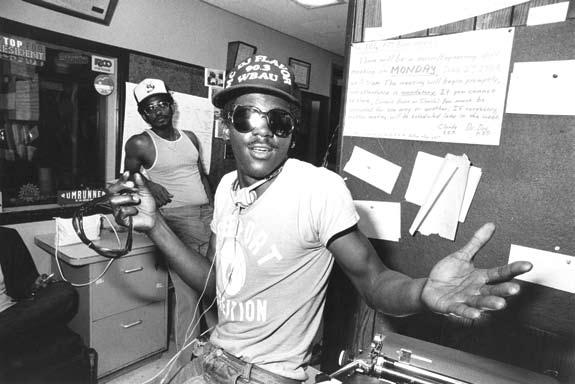
lege for me. Hank was an older brother. I was always the oldest in my family, so, you know, you always look to older cats to actually take some lead from.
Han K : I heard two cats come out here and dJ—Kool Herc and Bambaataa. Now, the reason why those guys are legends, man, is because their level of breaks…are retarded. I mean, these guys got breaks…for days They got all kinds of breaks. See, back then, when you judge a dJ, if you was gonna play breaks, it depends on how long can you play breaks for. Because you can’t play the same things twice. And we talkin’ about breaks—I’m talkin’ about, like, you hittin’ them two minutes, and gone. How long can you play? A half an hour? Can you play an hour? Fuckin’ Bambaataa and Kool Herc and them muhfuckas would be for hours ! And nothin’ you’ve ever heard before! You’d be like, “Oh my god, who is—where’d they find these shits?!”
CHUCK : The thing that attracted me to hip-hop was the intelligence that guys like Bambaataa and Herc and Hank and all these guys put down as far as the playing of records— you couldn’t be a dumb muhfucka to be involved in hiphop. ’Cause you had to know the labels, you had to know the musicians, and that’s why a lot of the dJs covered their records up, ’cause they didn’t want somebody to look at their labels and then all of a sudden go on their own, digging.
Han K : We stopped doin’ our parties because they shut all the places down. They shut down for various reasons. Most of the reasons is these places couldn’t make money during the week. And we would come in with our thing,
maybe biweekly, maybe once a month, and we’d throw on our huge event. But there was no place for us to get down on a consistent basis. And so that’s when we spent more time up at WB aU
And that’s how we met Bill Stephney. In fact, we didn’t meet Bill; we went to go seek him. A’ight? Chuck knew that there was a guy at B aU that had a radio show that was playing some hip-hop. He was playing some hip-hop. eRIC “V I eT na M” sa DleR : There was a dentist, a Black dentist, who lived across the street from me where I grew up in Hempstead, in Long Island, and he was my dentist and a friend of the family. He had a building, and my mom and dad were kind of throwing my band out, ’cause we had been rehearsin’ in my basement, and he offered to give me some rehearsal space, or just rent me some space down in his building. So I said, yeah, that would be great, and talked to the band guys and I rented out the space for two hundred dollars a month. And that was at 510 South Franklin in Hempstead. Maybe about a year and a half later, Hank, out of the clear blue sky—I’d only maybe met him once or twice—gave me a call and said his parents were tellin’ him they’ve gotta get their junk, their dJ stuff out, and could I talk to the doctor about them renting some space. And I did, and then they moved upstairs from me, along with a guy named EJ the DJ. They were splittin’ the space, so they had half of a room, and EJ had the other half. We just kind of became neighbors. Han K : So then we was doin’ our own record. I really wanted Russell [Simmons] and Larry Smith to produce Spectrum. They turned us down. And they sent us to this guy named Rick Rubin. And they gave me [T La Rock’s] “It’s Yours.” And when I listened to “It’s Yours,” it sounded
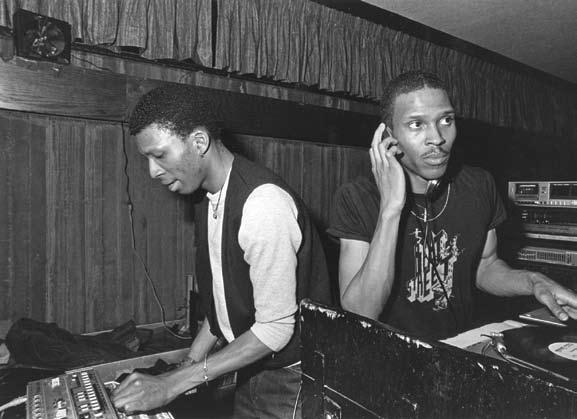
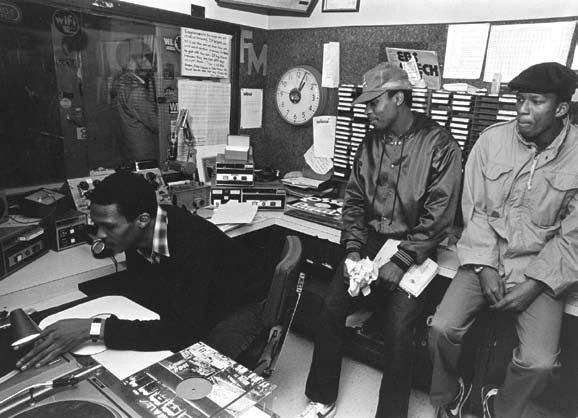
just like the demos we was playing on B aU. Because we didn’t have any keyboards or anything. What we would do was, we would play a beat, and when the beat got to the chorus, we would scratch some stuff on the chorus. And we would have rappers get down on the verses. And we was playin’ those on B aU, well before Rick put out “It’s Yours.” A’ight? So when I heard that, I was like, “This sounds like what we could do!”
eRIC: My musical partner’s name was Charles Casseus. I used to hang out with him, because he wasn’t into doing top-forty stuff; he was doing his own music. So I would hang out with him in the studio and play guitar for his records. I played bass, guitar, keyboards, and, once all the drum machines came into effect, I started programmin’.
Charles went to high school with Eddie Murphy. A lot of times, my band would play places and Eddie would be the opening guy, like the Mc and the comedy guy. So a little bit later on, you know, he wanted to sing and he wanted to do music. And so one of the few people who was doin’ original music was my partner. So Eddie’s like, “Look, let’s hook up. I got some equipment. I wanna put some stuff together.”
He had just gotten Saturday Night Live, so he bought all this equipment, and he didn’t have any place to put it, ’cause he bought a place in Baldwin [Long Island]. And he’s like, “Can I leave all this equipment down at your spot?” And my boy said, “Yeah, fine.” He had a dM x ; he had all of this crazy equipment. So it was summertime; he left all the stuff down there, and I was like, “Shit!” I’m down there twentyfour hours a day. I’m learnin’ this stuff, ’cause I could never afford it, you know; it’s thousands of dollars worth of stuff.
But what happened to Eddie was, his management said, “Well, you think this is a big house, but this ain’t shit.” So they moved him out to New Jersey. And at the same time, Eddie was like, “I’m workin’ on an album. And I’m gonna work on it with Prince, and have my friend Charles help me with this stuff.” So he had Prince send the two-inch tapes of songs out to our studio. And I was like, “Oh shit, we gonna work on Prince and Eddie Murphy,” but his management intervened, and said, “These guys are nobodies. You’re not gonna work with them; you’re gonna work with Rick James.” They just kind of swooped Eddie up, took him away from the situation. But, you know, I had that whole summer to learn all the equipment.
Han K : The only producer that really blew my mind, if you wanna look at it from that perspective, was the Larry Smith–Russell Simmons combination: when they did Whodini; when they did Kurtis Blow; Run-DMC, the first single; Orange Crush, “Action”; Jimmy Spicer. When they did those records, yo, I was amazed, because I thought the sound was amazing. So I wanted to get with those guys, because I knew that those guys were keyboard players, and they were musicians. But I also knew that they were minimal with it. That’s what I liked about it. Because I knew a lot of musicians, and musicians like to play too much. So when I go in and try to work with a musician I might have hired to play some keys, they’re playing all over the place. Musicians and hip-hop was two different worlds.
eRIC: In those days, musicians did not work with hip-
hop. Like, supposedly “real” musicians, they couldn’t stand it. They were like, “This shit is not music; this shit is garbage.” They ain’t tryin’ to hear it, and most of my friends were like, “Yo, it’s garbage, man, you don’t need to be doin’ that.” I was like, “Shit, I ain’t got nothin’ else to do!” You know? Chuck asked me to come up one day, just mess around, and they had some equipment up there, and I was like, a’ight, you know, I’ll come and hang out, and we can just mess around, make some cassettes, and this and that or whatever.
Han K : I wanted to try and get that Kurtis Blow sound, and I knew I needed musicians. I went to Eric, because Eric was the least pretentious of all the musicians that I knew. And he had a place that was right downstairs from us. So I went to Eric and said, “Ay yo, Eric…I wanna sit down with you and work with some stuff.” And he was like, “Nah, I’m not really interested.” So it took me another year to convince Eric. And so all of a sudden, Eric came upstairs one day and said, “Alright, Hank—we’ll start workin’.” And I was like, “Word?”
eRIC: You know, I didn’t have a big head about bein’ a musician, ’cause I wasn’t makin’ any money at it, you know—fifty bucks or whatever. So Chuck had formed a group with Butch Cassidy, and they called it Spectrum City. I remember we went into the studio, and they started workin’ on it, and they brought this guy in named Pinky Velasquez. ’Cause Vanguard Records was the label that they were doin’ the record under, and Pinky was their main guy. Even though he was kind of into house music and all that sort of stuff, but you know, they trusted him the most. So once we got in the studio, Pinky was kind of runnin’ the show, and they said to me, “Well, we don’t really need you anymore. It’s been good, and you can go back to the studio.” At that time, I could’ve cared less, ’cause I was like, “A’ight, I got a hundred bucks. I’m good.” I went back to my studio and started playin’ cards with my boys, ’cause that’s all I did all day. From twelve noon to, like, six in the morning, every day. That’s all I did.
Han K : Pinky Velasquez was a dance remixer. He had produced a record called “Electric Kingdom” for Twilight 22. It had rappers on it. We used him to do our first record, but he did a beat that was 118 BPM It was too fast. The streets, at that time, they were feeling around 90 to 92 beats per minute.
eRIC: Pinky was givin’ them some old—they didn’t like the music. So Chuck gave me a call and said, “Look, can you come up? We just gonna do a jam in an hour or two.” So we did, and I had a good time doin’ it, and that was it. And then the song, of course, didn’t do anything. It was “Check out the Radio,” and the other side was “Lies.”
At that same time, my partner Charles Casseus had formed a group called Keymatic, and had his one big hit, called “Breakin’ in Space.” This was all around the same time. In his group was himself, Naji, who was a friend of ours who played the sax on it, and Hank’s brother Keith, ’cause there was a dJ in it. It was actually the first group to have R&B, with jazz, with a dJ scratchin’. And it was on a label called Radar Records. And then my partner’s head got real big, and he fell off. And meanwhile, Hank and Chuck and them kind of went back to the drawing board.
Han K : So I started bringin’ out all my records. All my little breakbeats and everything else. Eric was a Prince head. He was very much into Prince. So he knew how to program Linn drum machines, but he had that ’80s thing goin’ on. And so I went to Eric and said, “Look…we’re not doin’ the ’80s shit. We’re gonna bring the tempo down, brought it down to like 82, 85 beats per minute, and then I wanna do something that’s more like…” and I started playin’ him some Stax grooves. I started playin’ him some breakbeats. I said, “This is the vibration that we’re gonna work on.”
eRIC: Nobody else at that time could even turn on the equipment. They didn’t know what the equipment was. Me, I had been workin’ with the Emulator, the sP-12, the Linn drum machines, the 808, you know. I knew all this equipment back and forth. It was not really a choice for them.
Han K : There was two things that I told Eric. I said, “First of all, you gotta understand one thing. That I never wanna hear a fuckin’ ’80s snare, ever. Okay? That’s number one.” And then the other thing is, I played him an 808. I said, “This is your fuckin’ God. This is in every fuckin’ record If you don’t do anything in life, you put this shit in there, and it’s a fuckin’ smash.”
He never understood that. He was just like, “Yeah, okay, whatever Hank. Whatever.” But from that point on, he started gettin’ it. He starts seein’ the results, and he says, “Oh, I see. I see what’s happening.” But we worked for three years. In order to come up with something that I would consider to be sonically…enough.
eRIC: It was a strange process, because it was basically me, Hank, and Chuck for, like, thirty days. And Chuck and Hank had all the ideas of what they wanted to do, the different beats they wanted to do, the this and that or whatever, and I was just kind of the tool. The executor to put it together. Because we had different sensibilities. I was listening to Tower of Power and the System. I was into sixtyfourth triplet notes. I was a musician. And they were just throwin’ stuff together. But they were teachin’ me at the same time: fuck all that technical shit; do what’s funky; do what feels good.
So the first album was a trip, because we wrote everything together—they’d give me stuff and I had to put it in order, I had to make it make sense, and especially on equipment that really wasn’t suited for it.
CHUCK : I thought that [giving credit to] Chuck D in every area was too self-serving. And if it reads “Produced by Hank Shocklee and Carl Ryder,” it looks like you got a whole other staff there, and I just didn’t wanna be dominating in all areas. So I used the name Carl Ryder.
Han K : If you listen to those records, you gonna hear offness in those records. Me and Eric used to fight about that. Because when you make it fit, it becomes sterile. It loses that funk that comes from happy mistakes.
I would come with a basic beat. Okay, this is the basic beat, but this is what I wanna put in it. I wanna put frequencies that push and pull against each other. That create new frequencies when you listenin’ to it.
eRIC: The big argument we used to have a lot of the time,
between me, Hank, and Keith—’cause Chuck never argued about anything—was: it’s all fine and well if it’s thrown together, but it needs to be musically resolved somewhere. And they were, “Well, what do you mean resolved?” Well, it can be noise, it can be dissonant, but somewhere it has to circle, it has to resolve itself to where it makes sense. And a lot of time, they’d be like, “Well, what are you doin’?” And I’m like, “I’m trying to move this over a little bit to lock up with this and tune this down and filter this out so it’s not just garbage.” And that always used to take a lot of time. But for me it was fun.
Han K : I got to the point where there would be something that we’d try to get, and I’d be like, “Nah, that shit doesn’t sound right.” So I’d think, yo, let me just lift this shit. For example, there would be a snare. A snare comes in and it sounds like tap-tap-tap…that’s cool, but what about taah…taah…taah ? You want that little bit of air to it too. And then the other aspect of it, sometimes we wouldn’t truncate it right. And then sometimes you get the taah-kkh…taah-kkh…that little “ kkh ” is the shit ! Aw, B! So those samples are not truncated perfect, because I didn’t want them to be perfect. If they were all perfect, it would sound like a Dre record. There was nothing wrong with Dre’s record; it just wasn’t my record. And when you listen to his record, he makes sure his shit sounds correct. But to me that has no character. It’s cool and all, but it doesn’t represent the streets. Because to me, street music has to be a theme music. There’s a rugged rebelness that goes in when something sounds like “I don’t give a fuck.”
eRIC: The only problem we had was with the engineer, Steven Linsley. I was havin’ a lot of problems with him, ’cause he wouldn’t do what I wanted him to do. Chuck wanted things like, “Okay, we’re layin’ down this one track, but I want you to turn up all the e Qs and all the other tracks on the board so it just makes noise.”
And [Linsley’s] like, “Uh…no, you can’t do that.”
“Well, why can’t you?”
“You just can’t do that. It’s a professional place; you can’t do that.”
And I got kind of pissed off, because my experience, of course, was you’re not really supposed to do that, but after listening to Prince in interviews, Prince is just like, “Fuck the rules. Do whatever it is the fuck you wanna do.” And I’m like, “This guy workin’ for us. Chuck wants that shit all the way up, and we want noise, then give us noise.”
Chuck was the type to say, “We don’t want the good mic. We want the mic from your assistant’s little Panasonic cassette box that’s real fucked up. We’re gonna use that mic on this song.” Chuck just had a million ideas and so did Hank. They just had ideas upon ideas.
CHUCK : Musical instruments were played on more than half the record. And Bill Stephney, as a bass player, as a guitarist, and as an arranger, was very integral to joining alongside Eric to make sure that we were in step. And Hank’s dJing and his ears often contrasted the musicianship versus the forwardness of hip-hop and recording, and that combination created the turbulence of Public Enemy’s noise. eRIC: On that first album, it was me playin’ the live
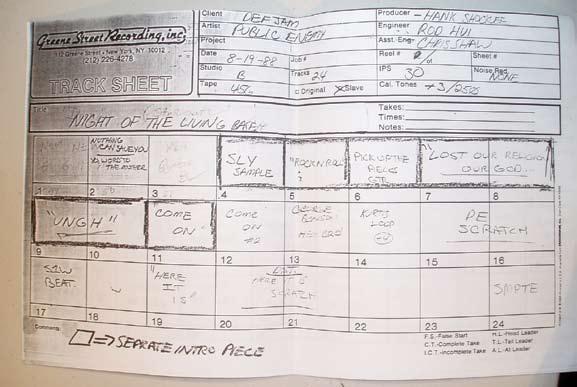
drums, the Simmons drums, programmin’ the sP-12, programmin’ the ddd -9—it was just a whole bunch of different things kind of slammed together. And you know, it was very fun, especially with the Linn-9000, ’cause the Linn9000 could actually sample, but it could only sample maybe a second and a half. So I could maybe get a snare and a hihat, or a snare and something else in it.
It became more about programming for me as far as drums than anything else, because I always wanted to be a drummer. At that time, in hip-hop, you had a lot of dJs who would just play a straight 4/4 beat, but when I did drum work or programmed, I’d do maybe about twenty or thirty patterns, because a real drummer never actually plays the same thing twice. The hi-hat is always in a constant flux of movement. And what I explained to the guys is: you got a roll here, a roll there, a extra kick here, a extra hi-hat here— drum players feel it, they feel the movement, and that creates the song from beginning to end, rather than four- or eight-bar patterns.
So even on the first album, when I could, when I was allowed to, I’d program the drums for the whole song, like maybe four patterns, and then Chuck showed me what he was gonna do on top of it—and this became a pattern for our production. Okay, let’s put down our basic raw thing, see what Chuck is gonna do with it, after Chuck gets on it, now we feel where everything is gonna move and where things should go. Little accents here and there, little movements here and there of the drums, and later on, the samples.
Han K : My favorite song on Bum Rush is “Rightstarter.”
To me, it’s more experimental, because I had programmed the beat in there, but I didn’t like the way it was. It just
felt…regular. It felt good, it was tight, but at the same time it felt regular. So I brought in Johnny Juice, and I gave Johnny Juice a kick drum on the turntable and he would scratch in the kick drum part. And I thought that was the most experimental, because there’s no kick drum on that record. The kick drum is the dJ.
eRIC: It went very quickly, because we did three weeks of laying all the stuff, and then we had Johnny Juice, to do his cuttin’ and scratchin’, because out of the kids that were hangin’ out at our studio 510, he was just phenomenal. And Norman [Terminator X] was just a dJ they got to do stuff when they couldn’t do dJ gigs. DJ Melody wasn’t used to really cuttin’ and scratchin’, but he came in anyway, and he did his cuttin’ and scratchin’.
And Chuck also did cuttin’ and scratchin’. On all the records. People don’t realize, ’cause Chuck doesn’t talk about it. Chuck would have some ideas, and there was no dJ there sometimes, so he’d come in and put in a rhythm, like [imitates scratching ]…some ol’ fucked-up shit! But created a pattern with it that fit there.
And then bring Flavor in. Flavor would come in for maybe about three or four days, and Chuck would say, “This is what you’re gonna do, and this is where I need you to fill a spot.” And the songs that Flavor had himself, he would just prepare himself, and he would come in, and we’d guide him. And the same with Terminator. Terminator got a song per album. It was like, “Look—go home and do your song. When you come in, we’ll help you lay it down, and we’ll help you produce it, and get it done.” And so that’s how the process worked for the first album.

s lick r ick
Han K : We finish the PE record. And I’m sittin’ there, trying to figure out what the fuck next. So I go through the demos, and I’m listening to “The Ruler’s Back.” And I’m saying, “Yo, they rockin’ the shit; where’s his album?” And everybody’s tellin’ me, “Yo, Rick’s out of his mind; Russell and them don’t wanna work with him, Rubin can’t work with him, nobody can, so he’s on hold.”
So I’m sayin’, “Yo man, Slick Rick is a fuckin’ icon! What is he doin’ not being recorded?” So I go up to the Bronx—I asked Chuck to come—and we just have a good conversation in his living room. And he’s playin’ me some stuff that he was thinkin’ about, he said Rick [Rubin] wanted him to do some Run-DMC shit! So I said, “Yo man, don’t worry about it. I’ll be back. I’m gonna come back to you and we’re gonna go in the studio.”
So that was the first time we went to Chung King, and he showed me his ideas. Most of the ideas is his. All I did was structure his ideas. That record was brilliant from a number of standpoints, and one was that it was diverse. Because everybody expected him to come with a “La-DiDa-Di” or “The Show” kind of vibration, and that wasn’t it at all. I mean “Hey Young World”—you play “Hey Young World” right now and it’s bringin’.
eRIC: I was from R&B Back at 510, once they got equipment up in the studio, I’m up there writing ten, twenty songs a day. But every time I was up there working on anything that had anything to do with music? “Ahh, you pussy! Ya hot-pants, Jheri-curl-wearin’ bastard! Get that garbage outta here!” They were killin’ me. And you know, I’m downstairs listening to Earth, Wind and Fire, and Prince,
and I grew up on Elton John, Led Zeppelin, Chicago—I was into music. But every time I played any type of music, like, “Lemme try to put a string line on something”—they start throwin’ shit at me.
But when it came time for Slick Rick, Slick Rick had his own style and his own music. “Teenage Love” was just on one of the cassettes that went to Rick, ’cause we used to send out cassettes—here’s fifty beats, pick one. Rick picked the beat and it was like, alright, great! Damn, I get to play some chords, and I can do some R&B , I was like, “Thanks, Hank!”
’Cause, you know, Hank is like…a controller. He was the mastermind, the con man, the talker, the brain, this and that or whatever, but, musically, it was always a battle.
Han K : When I’m in studio, you gotta battle with me. I have a whole different approach and a different head to things.
eRIC: But we got to “Teenage Love,” and I think the happiest day of that whole project was when I’m playin’ bass on the track, and I’m playin’ keyboards, and Hank said, “Yeah, you should do a bass solo.”
I was like, “You’re kiddin’ me. You’re gonna let me do a bass solo?”
Han K : One thing I love about Eric is that he never recognizes his own musicianship. Eric never thought he was a good musician. And I used to say, “Eric, you gotta understand, this is hip-hop. You’re great!” Because he wanted to be a virtuoso.
So I go, “Yo man, let’s put a bass solo in this muhfucka.” And once again I had to convince him for that! I don’t know what he told you, but it was another convincing job! He was not confident about that. He didn’t want people killin’ him on his bass solo. And to this day—did he say he liked it?

eRIC: Man, I was, like, the happiest man in the world. I was just so happy. I played that bass—still to this day, it’s one of my favorite things.
Han K : Shit, man, because when he finished it, he hated it. I used to have to convince him afterwards, “Your shit is great!”
eRIC: You know, when are you gonna hear a bass solo on a rap record? It’s just not gonna happen. So it was classic.
eRIC: We started out at Chung King, but we switched to Greene Street. Because I showed up at Chung King one day and I had this sP-1200 that has eight outputs. And they were like, “Well, we can only do five at a time, because the other machine’s downstairs, and we don’t have enough cables.” And I’m like, “This is ridiculous. We’re fuckin’ stepchildren. I gotta bring up the shit myself? From one floor to the other?” I’m like, “Fuck this.”
So, we went over to Greene Street one day, ’cause Russell was still workin’ over there with Run, and it’s like, oh, this is nice! Oh, they got some fruit? The bathroom’s right there? Oh yeah, this is nice. And I was great friends with [Chung King owner] John King, but once we went up to Greene Street, it was like, a’ight, I can fuck with this. This shit works. They’ve actually got an engineer, an assistant engineer, and a tech!
Han K : Eric is my overseer. He’s my studio overseer. He’s the guy that’s like, “Yo, G, I need you to make sure the engineers is cool; I need you to make sure that things are being done in a certain way.” As well as being the producer,
the writer, and all that.
eRIC: There was a language barrier for years between hip-hop people and engineers and musicians. And I was the one who was able to cross the bridge, technically. ’Cause Hank would say, “Yo, muhfucka, just make it funky!”
And the musician’s like, “Well, what does that mean ?”
I gotta tell him, “Look, he wants it tight and staccato, not like Stanley Clarke, but more like Bootsy Collins.” If it’s drum fills, I’d say, “Like Steve Gadd.” You know, just givin’ them some language.
Han K : Now Keith’s job is combing through stuff, looking for beats, snatches, samples, because those records were painstaking, man. They were not like you just walk into the studio, pull up the first record you hear, and it goes on the record. That’s not the way that works. You have to sit there and comb through and find the right sound that gives you the right emotion that that particular record was needing. You may have to go through a hundred records.
Ke ITH: I was mainly the cat that came in and would be playin’ records on top of the music and the beats. It was almost just like a jam session; if we was musicians, we’d just be jammin’. And back when sampling was legal [laughs], I would play a lot of records, catch pieces, and just try to make different rhythms and stuff. It was all feel. It wasn’t no real science. It was straight feel.
CHUCK : My specific job was that of the sample finder as far as the vocals, arranger, and being able to put the second layer and the top layer on. Professor Griff had an archive of all the tapes [of Dr. Khalid Abdul Muhammad’s speeches: “Have you forgotten that once we were brought here, we were robbed of our name…”]. The tapes were actually popular, going around;

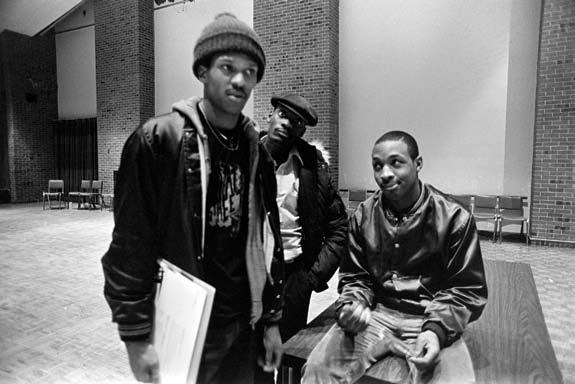
his speeches were sold at stands and places like that.
eRIC: Nation was done in thirty days also—from beginning to end. Between thirty and forty days.
Han K : And keep in mind, we do preproduction. This is another element that we’ve added to our game that nobody seems to understand. We’re not writing in the studio. We’re doing a lot of layering, over-layering, in the studio. But we’ll come up with the basic idea—that’s done in preproduction. That’s the process. So we’re goin’ in the studio, already laying in the basics, which is five minutes of the basic beat. And then we go in there and revise that.
Ke ITH: And then the actual integral part came in when Chuck started writing his lyrics. He was like, “I need this to do this, I need this to do that, ’cause I’m’a say this.”
eRIC: Then Hank and Keith would come in. It’s like, a’ight, now we’re gonna fuck this up. We’re gonna dissect it. Chuck already had a million ideas, like, we’re gonna take this vocal from here, this record, that record, this and that or whatever. So basically, they’d take it apart and then we would slap it back together and I would just put stuff in place.
Ke ITH: And we loved Motown shit. So we tried to arrange our shit like the way Motown had—the bridges and changes and shit like that. We was a big fan of Motown.
eRIC: And then after that, the same process would come—Johnny Juice would come in, do his stuff. But at this time, Terminator had been on the road for a bit. And he had learned some shit.
Han K : Terminator was probably the most underrated Bomb Squad member. When he first did that piece, the rock and roll part [on “Rebel without a Pause”], when Chuck said “Terminator X,” I was expecting something huge! And then
when he came in…I was disappointed when I first heard it. I took it home, and I listened to it, and I said, “There’s something in here that I like, but there’s something that I didn’t like about it.” So when I went back to the studio, I had the engineer pull off the bottom on it, because it just sounded muddy to me. Once Steve [Ett] pulled the bottom off of it, the whole shit popped out like crazy, and it was my favorite piece. And even to the point where he took the PeeWee Herman [imitates the cuts]—to give it the extra “Oh shit!” I thought that that was probably the most brilliant piece of scratchwork on a record, ever.
eRIC: Terminator, he comes in; he’s like, “Yo, I got an idea for the beginning of this.” And I’m like, “A’ight.” Got him set up. And he starts going dah-DAH-dah-da-da-d-dd-dah [the opening of “Terminator X to the Edge of Panic”]. I was like, “Oh shit! Oh boy! This muhfucka has been…he’s ready to contribute now. He’s ready to get down.” And he had some fantastic dJ parts that he put down. But then you got Juice with the “Night of the Living Baseheads” fast cutting, and then you got Chuck with the ol’ fucked-up shit that he’s still puttin’ down at three in the morning.
Han K : At that time, we took over Greene Street. We was livin’ there. I would run to Def Jam, come back, or run to the record companies, come back, and then I’m on the phones all the time, parlayin’, now go in the studio, finishin’ up, and be there till late at night, then be up early in the mornin’. And Eric is there all day long.
eRIC: We were in the studio the same time Sonic Youth was, ’cause there were two studios at Greene Street. That happened two or three times. It happened on Nation and it happened on Fear. We’d be in Studio A and Sonic Youth
would be in Studio B. So Kim and Thurston, you know, I became friends with them. Because they were more insane than I thought we were. I’d go into their sessions, and they’d fuckin’ have the room decorated like India or some shit, and they had thirty guitars, all tuned different! I’m like, y’all muhfuckas are insane! Y’all are crazy But that ended up bein’ fun, ’cause I learned a lot from some of their techniques.
Han K : “Rebel without a Pause” was interesting, because that was originally done with the only sampler that I had at the time, which was the Mirage. The Mirage is a four-bit sampler that gives you three seconds of sample time and that’s it. And I caught the right piece of it in three seconds.
So we went and did it in the studio, and we put it down, and they came into the studio with the s -900 at that exact moment. Well, the s -900 is eight bits, and now it gave me a whole thirty seconds [of sampling time]. I listened to it. First of all, it was smooth. It was real wimpy. It was disgusting! And the beauty of the Mirage: those machines didn’t have things you can do today, where you can turn the ending of a loop down, to the point where you can create a tail-off.
Back then, it was, like, three seconds—[claps]—over. And in “Rebel,” there was a small, fraction-of-a-second delay before it came back around again. That was the funkiest part of the whole shit!
eRIC: Nation was actually the only album that the socalled Bomb Squad worked on as a whole together. I mean, like, equally full force. Even though we did a million projects, that was the only album that we truly were all there together, workin’ on it for the thirty days.
CHUCK : At that time, we just thought that a lot of us were doing different functions, and different roles, so calling ourselves the Bomb Squad was just another elevation. I wouldn’t say, in modern terms, it was “branding,” but we were always fans of sports and teams, so why not?
Ke ITH: I’ll tell you how “Terrordome” came about. Full Force did a song called “Ain’t My Type of Hype.” And it started off with the James Brown joint. It was so hot, the intro of it, that when I heard it, I stopped my car in the middle of the street. It was like, “Yo this is crazy! But they didn’t finish it!” The minute that happened, man…I turned around, went back to our studio: “I’m gon’ put this shit together.” I took what they did, added some extra stuff, changed it around: “Terrordome.”
eRIC: By the time Fear was comin’ around, there had been a whole bunch of turmoil. Griff had the whole thing with the anti-Semitic stuff, and I remember Chuck calling me one morning, sayin’, “Look, we’re down here at the Sheraton, can you come down.” And he was gonna kick Griff out of the group. And I was voting against them kicking him out the group. ’Cause I said, “Don’t kick him out now, because it’ll appear that you’re folding under the forces to kick him out, but kick him out later. Kick him out two months from now.”
But Chuck was trying to play both sides of the fence, “Well, I’ll suspend…”—you know. And at that point, it became a separation between Hank, Chuck, and Bill. At
the beginning of Fear, Hank and Chuck weren’t talking. It had split into a couple of different camps. I was still with Hank, but I was still with Chuck. Keith was with Chuck. Hank was kind of off by himself.
Keith and Chuck started working on Fear And me and Hank were starting to work with Bell Biv Devoe. And I remember going into the studio at 510 one day, and Keith and Chuck were workin’ on some song, I think it was “Revolutionary Generation.” They were talkin’ about this was gonna be the first single, and they played me a couple other things, and I just got sad. I was like, “You know what? Can’t let this happen. Can’t let it go out like this.” So I said, “Look, I’m gonna start workin’ with you guys, and I’ll keep working with Hank and Bell Biv Devoe.” But Fear started without Hank at all. I mean completely.
Han K : Keith and Eric’s work is primarily on Fear Those two guys did the bulk. And Keith is the unsung hero, man. He knows records through and through. Because from his dJ skills, he knows what goes together. So he can put things together and paste things up and do all kinds of stuff. And these guys now—you’re talkin’ about six years of intense working together, and me teaching them. So now, as we start to get bigger and different things, business becomes more of a priority for me than being in the studio, because these guys got that down.
So now I can finally come in the studio and be a producer. And I can sit there and go, “This is working. This is not working.” You know, Chuck can now come off the road and work in harmony with a team that’s already built.
eRIC: I remember going into Greene Street—me and Chuck. And usually we had a whole bunch of songs picked out. We only had a couple. That’s why Chuck, for the first time, would say, “Alright, write something now.” And I was like, “What do you mean, write something now?” I hadn’t done that. It wasn’t gonna be a hard thing for me to do, but that’s not how I write.
And, you know, by the end of finishing that album, my personal feeling was…it’s not very good. The sequencing isn’t very good, all the parts and pieces weren’t there, because it wasn’t a full involvement. That’s why I said the only Bomb Squad album, really, was Nation
The Bo MB e x P lodes
Han K : And at that particular point, I’m also into the next phase, which is: Okay, let’s do the label deal, let’s get more artists going, let’s get that whole scenario, let’s take this to the next level. But that’s also the point when everything crashed.
eRIC: We all had a big meeting, and we said we’re gonna do a label. Me, Chuck, Keith, Hank, and Bill [Stephney]. All of a sudden, Hank said, “Me, Bill, and Chuck are gonna do it, and we’re gonna bring you and Keith along later.” And I looked at Keith, and I was like, that’s it for me. “You’re gonna bring us along…later ?!”
Chuck didn’t even like this. He said, “You know what, I’m not really down. I’ll help out, but…you and Bill just do it.” So soUL [Records] ended up being Hank and Bill, and
that was kind of it.
Ke ITH: Me, I was just ridin’ along with whatever. Okay, whatever y’all wanna do, whatever. And then…stuff started to get a little personal.
Han K : The fact that we became so close and was working together for so long, everybody just burned out at the same time. And the common denominator is me. My relentlessness, constantly being on top of everybody, my constant editing, and re-editing. Eric wanted to test the waters and do his thing. Chuck wanted to do more of his thing. Keith wanted to get into things that he wanted to do. And then add on top of that the Griff situation.
eRIC: I just broke off. I had met a girl, but…workin’ for four or five years, livin’ in Manhattan, I had never gone any place to eat. I went to the Soho Kitchen bar across from the studio, but that was it. I never went anywhere, ’cause I was workin’. And she was like, “Let’s go to this restaurant and have a hot chocolate.” And we went, and I was like, “Oh shit! There are places to eat? Oh, this is kind of nice!” And I realized I was kind of missing life at the same time.
Han K : To me, PE had a time exposure on it anyway. It was only supposed to last for three albums. And it just got so huge and so big so quickly, it really went beyond what anybody had intended. Eric didn’t intend to be a part of a production team. He just was helpin’ me out!
And it put a strain on everybody, and mostly it put a strain on me. Because I have to be the one to try to make this plane descend, otherwise it’s gonna crash and burn. So now I have to let everybody down easy, and take on new directions, and that’s why my particular situation [the soUL label] didn’t take off, because I’m trying to do that and my thing at the same time. It just became too much work for any one person.
eRIC: To me, PE did what it was supposed to do. It’ll go into history. I know what I did, and it’s fine. I’d say ninety percent of the people who worked with Hank or Chuck through the years that I’m still in contact with are complaining still, to this day: “Oh, I didn’t get my credit,” or “I didn’t get paid,” or this and that, or whatever. You know what? I got kids, and that’s just such a waste of your life. That’s done, it’s over, forget about it. But people can’t. People can’t forget about what they should’ve done, and could’ve been. And a lot of people who wanted interviews were like, “Well, we heard that Hank…” No, Hank is fantastic, that’s my man. The truth is the truth, that he never screwed me over. He was just doin’ business, and he might have made some bad business decisions, but every contract I signed, I agreed to for myself. Without Hank, it wouldn’t exist at all anyway.
Ke ITH: You gotta understand, this was at a time when nobody thinks you can make a livin’ doin’ this rap shit. And we all went from not knowin’ what we wanted to do, to damn, we doin’ some shit that we love and we makin’ some money from it!
We could’ve did a lot more, and when I look back—we understood enough, but at the same time, we was learning, basically about the entrepreneurship of this music. We
didn’t understand that. Now, cats already understand the entrepreneurship because the pathways has been paved. So now when cats come into the game, they know: “Yo, I want my own clothing line, I want this, we can do that.” But at the time, we was makin’ it up as we go along. And when you look back, that’s the hardest thing—damn, if only we knew then what we know now. But that’s the way it is. Like I said, my whole thing was, we was havin’ fun.
Han K : I think that what has happened, when you look at the musical landscape, is that everything has flipped. Hip-hop right now is in a zone where it doesn’t reflect the experimentation; it doesn’t lend itself to a challenge anymore. It’s become mainstream music. And there’s nothing wrong with that. I just think that people need to recognize that. You got those people that still want hip-hop to be in its place, where it used to be. And it’s not there anymore. So now, those people that are looking for that challenge, you can’t look for it in hip-hop. Hip-hop used to challenge you. You used to have to get into it! You’d have to sit there and go like, “What the fuck is Kool Keith about? What are these guys doing?” You had to figure it out first!
But now, it’s in a zone where it’s hitting you, but 50 Cent is not doing anything different. There’s nothing challenging there. It’s not bad. It’s just mainstream. And I think that we need to change our perspective on it. We need to look at that as pop music. Pop music is what I consider to be music that people are comfortable with. You don’t take any chances. You don’t spend any energy to get involved with it. It gets involved with you. Because it’s already vibrating on something that’s already comfortable to you. So that to me is not challenging. I think it’s unfair to call it hip-hop music.
CHUCK : At that bridge of ’79—really ’80, ’81, ’82—I couldn’t stand music at that time: Black music and rock music; it was just corporate drivel. And I think I totally became immersed in trying to help hip-hop and rap grow, because it gave me the same vibe about music that I had about sports—it was this rebellious music; it was basically something that pretty much saved my whole appreciation of music—the reminder that hip-hop and rap music presented.
Han K : It’s like, okay, I can buy hip-hop gear ? What the fuck is that about? What was hip-hop gear? We would buy something, and we would rock it a certain way, and that was hip-hop gear! It’d be the same gear—you’d get a Carhartt jacket, you’d put some graffiti on it, now it’s hip-hop. Your pants are too big, but fuck it, I’m gonna rock ’em anyway. And all of a sudden, everybody like, “Yo, look at that, that shit is kind of crazy, son!” And now your man is doin’ it, and now it becomes a style. Now we got buy those big baggy jeans, and me and my crew is rockin’ it. And that what’s hip-hop was all about. .
Jason La Pe YR e is a Toronto filmmaker and screenwriter, whose article on the Incredible Bongo Band appeared in Issue 7. He co-hosts the Born in the Break radio show, which can be heard on umfm.com every Wednesday night.
Portions of Hank Shocklee’s comments were taken from a lecture given at the Red Bull Music Academy on November 10, 2005.


by Brandon Burke // photos courtesy of the Library of Congress

The first thing to understand about lacquer discs, also called “acetates,” is that only the earliest examples—we’re talking 1930s here—actually contain acetate. And while one can argue that this distinction amounts to little more than record nerdery gone wildly unchecked, it is important to consider the following: in order to properly care for audio media, one needs to temporarily forget that the piece in hand is a record, tape, etc. and focus instead on the structural composition of the item itself. Evidence of this is nowhere stronger than the case of the lacquer disc, as the properties and degradation issues associated with acetate differ from those observed in nitrocellulose (lacquer), the substance most commonly found on so-called “acetate” discs; especially since most of us have a few more Jamaican dub plates than we do Edward R. Murrow radio broadcasts. Until magnetic tape became widely available shortly after WW ii, the lacquer disc was the most common way to make instantaneous recordings; that is to say, recordings that could be played back immediately after the audio was captured. Historically, one thinks of speeches, radio broadcasts, and other public addresses when regarding the kinds of information typically found on lacquer discs. But the medium proved convenient well into the 1970s. The best example of this—due to, one has to think, a heavy reliance on disc-based media playback—was its popularity among Jamaican dub engineers. By making instantaneous recordings, said engineers could not only fire off several versions in an afternoon, they could also bring them to the soundsystem yard that same night. Instant gratification. Structurally, lacquer discs are comprised of three main elements: (1) substrate, (2) information layer, and (3) the adhesive that holds them together. The substrate is the core to which the information layer is adhered; this makes it, for all intents and purposes, a metal record laminated in a black, vinyl-like substance. More often than not, the substrate is going to be aluminum, especially if the disc was manufactured during the last half of the twentieth century. Other
examples include paper and glass; the latter briefly replaced aluminum during the War effort. Each substrate introduces a different set of problems as they degrade. Glass, obviously, can crack and break, while aluminum is susceptible to warping during prolonged exposure to heat. The information layer, then, is the black substance surrounding the substrate. It is the reason why lacquers look like vinyl despite having a metal or glass core, and, again, it’s almost always going to be nitrocellulose. Readers familiar with the film Cinema Paradisio already know what happens when nitrocellulose is exposed to extreme heat: it ignites into flames. Consequently, keep your lacquer discs away from the stove. (For real though, the nitrocellulose used in the manufacture of lacquer discs contains too many inert fillers to retain the same intense flammability as old nitrate film. It was as much a financial decision as anything else: fillers reduce the amount of raw nitrocellulose manufacturers had to purchase to make blank discs.)
Mechanically speaking, information is committed to the surface of lacquer discs in a manner quite different from commercial records such as LPs, 12-inchers, 45s, or 78s. (This

is where the “instantaneous” part comes in.) Lacquers are recorded “on the fly,” meaning that a recording lathe cuts a groove into the disc’s surface in real time with the incoming audio feed. Commercially produced records, on the other hand, are created either by injection molding or compression molding. Don’t sweat the terminology, though. The important thing to understand is that both of those methods require a mold to be made well in advance of even one completed disc. By comparison, the instantaneous recording process virtually ensures that every lacquer disc is going to be extremely rare, if not outright unique. So be careful. That unlabeled “acetate” your buddy threw in with your last trade may be the only copy in existence. .
Next issue: Lacquer Discs, pt. 2: Degradation issues and recommendations for cleaning and storage.
